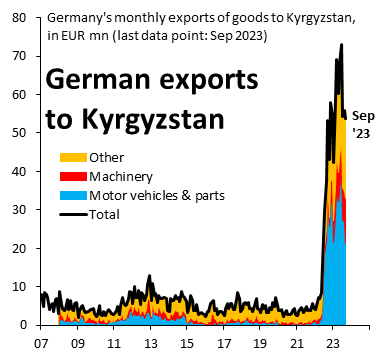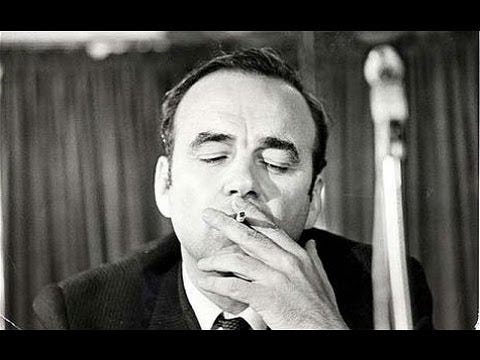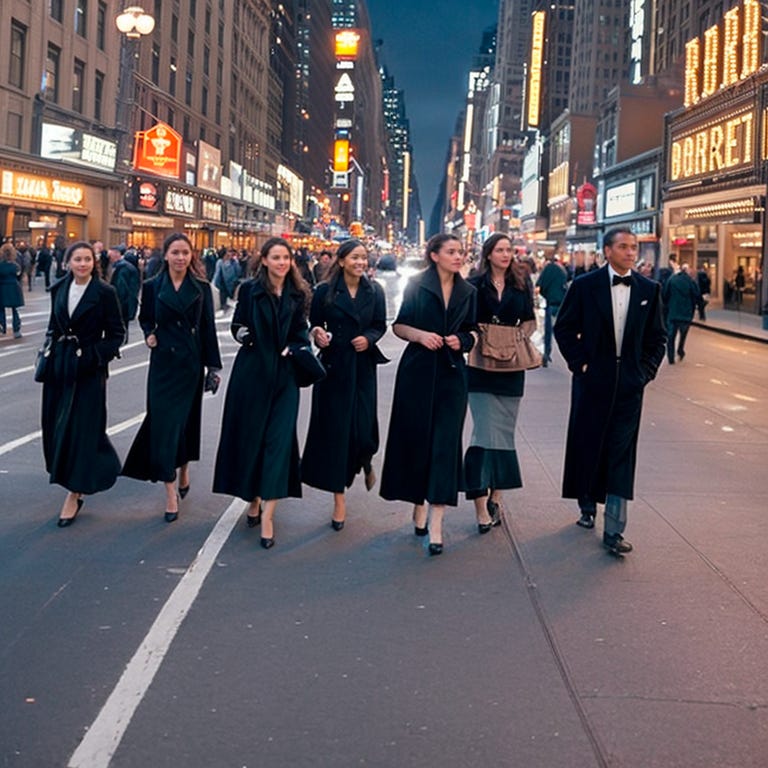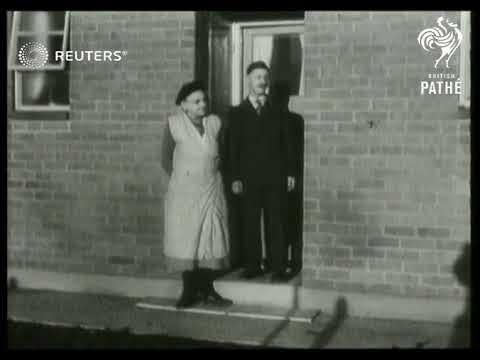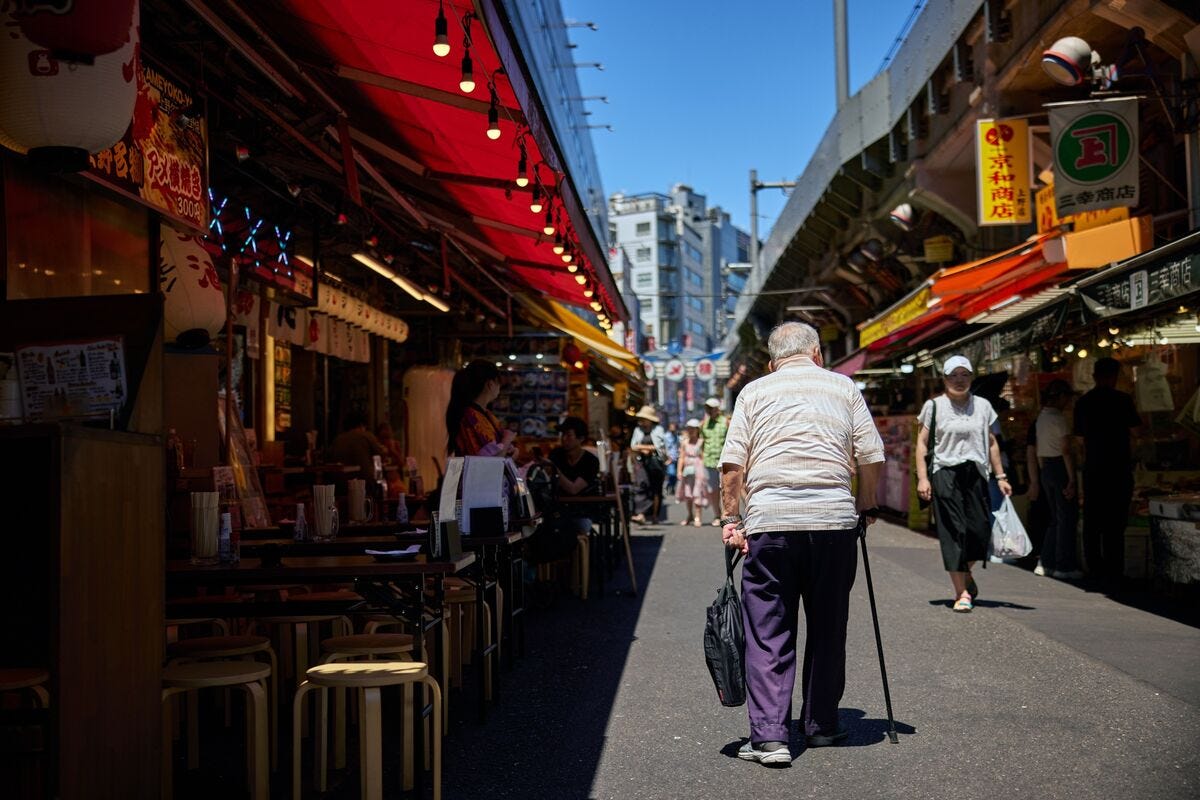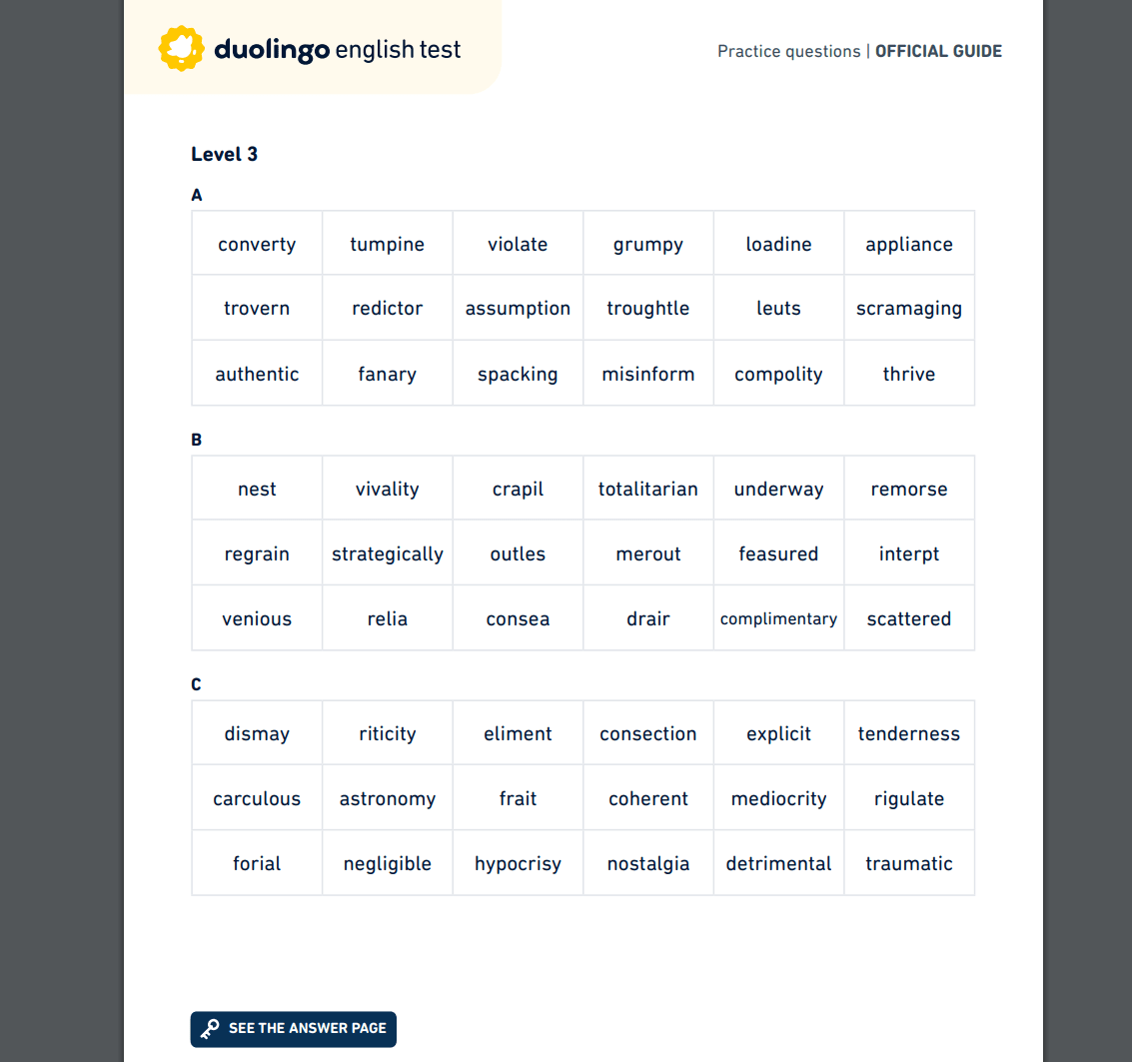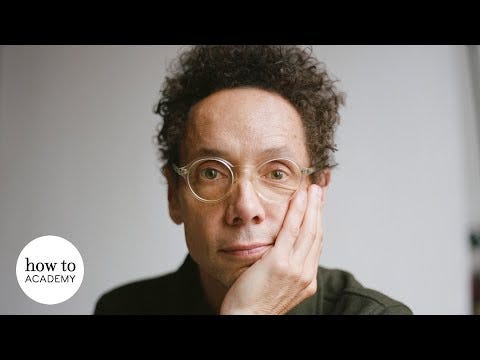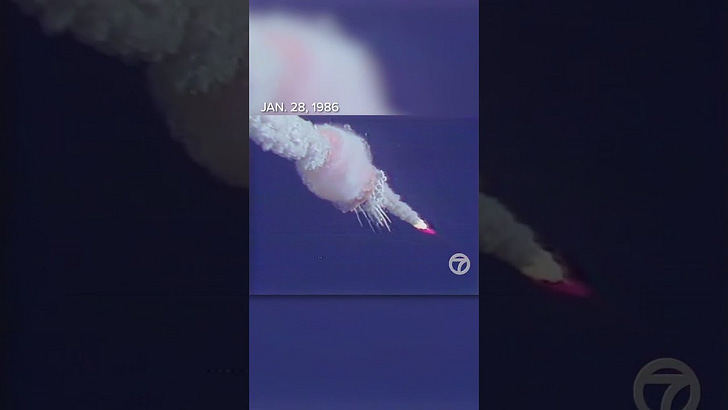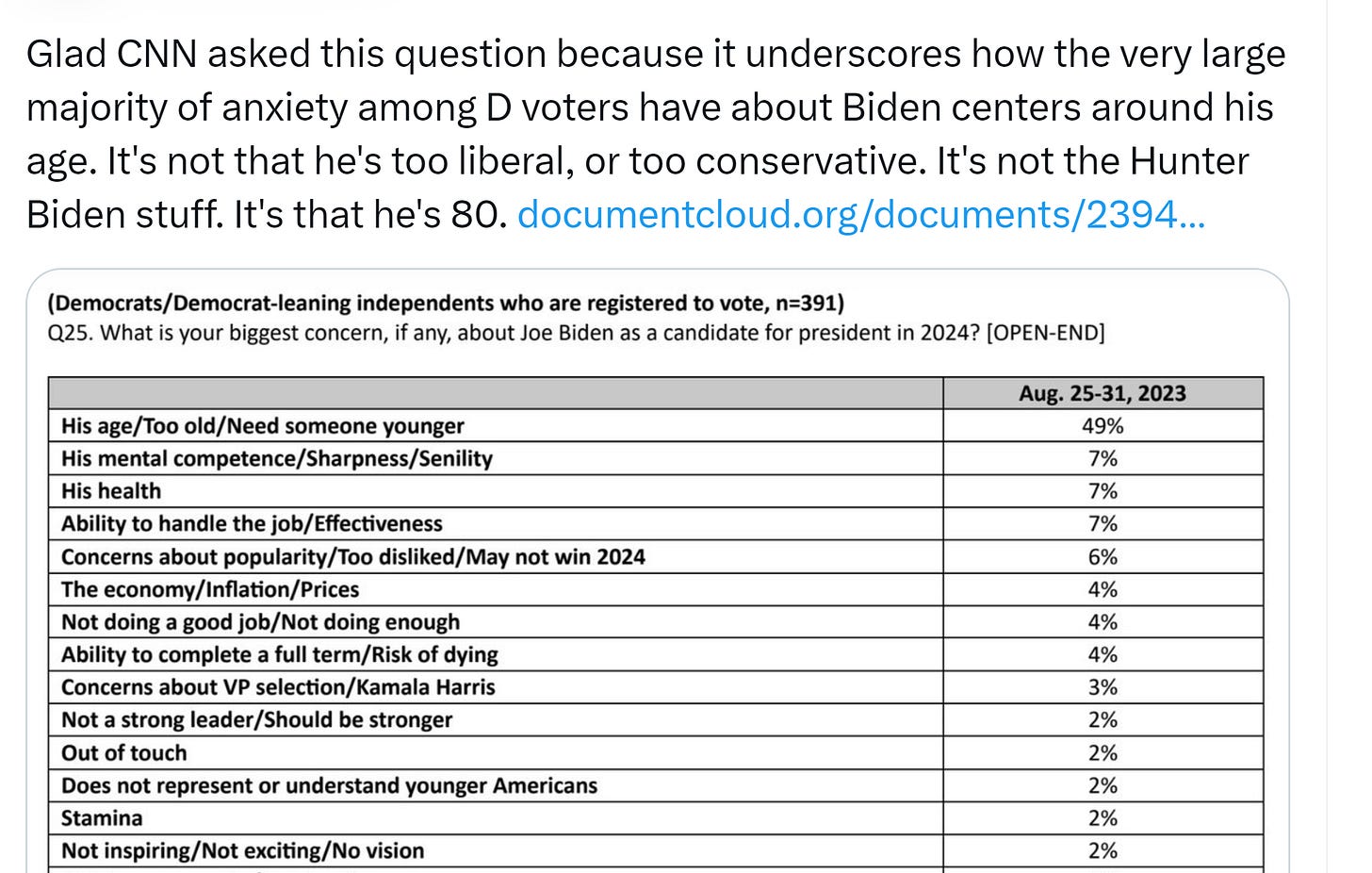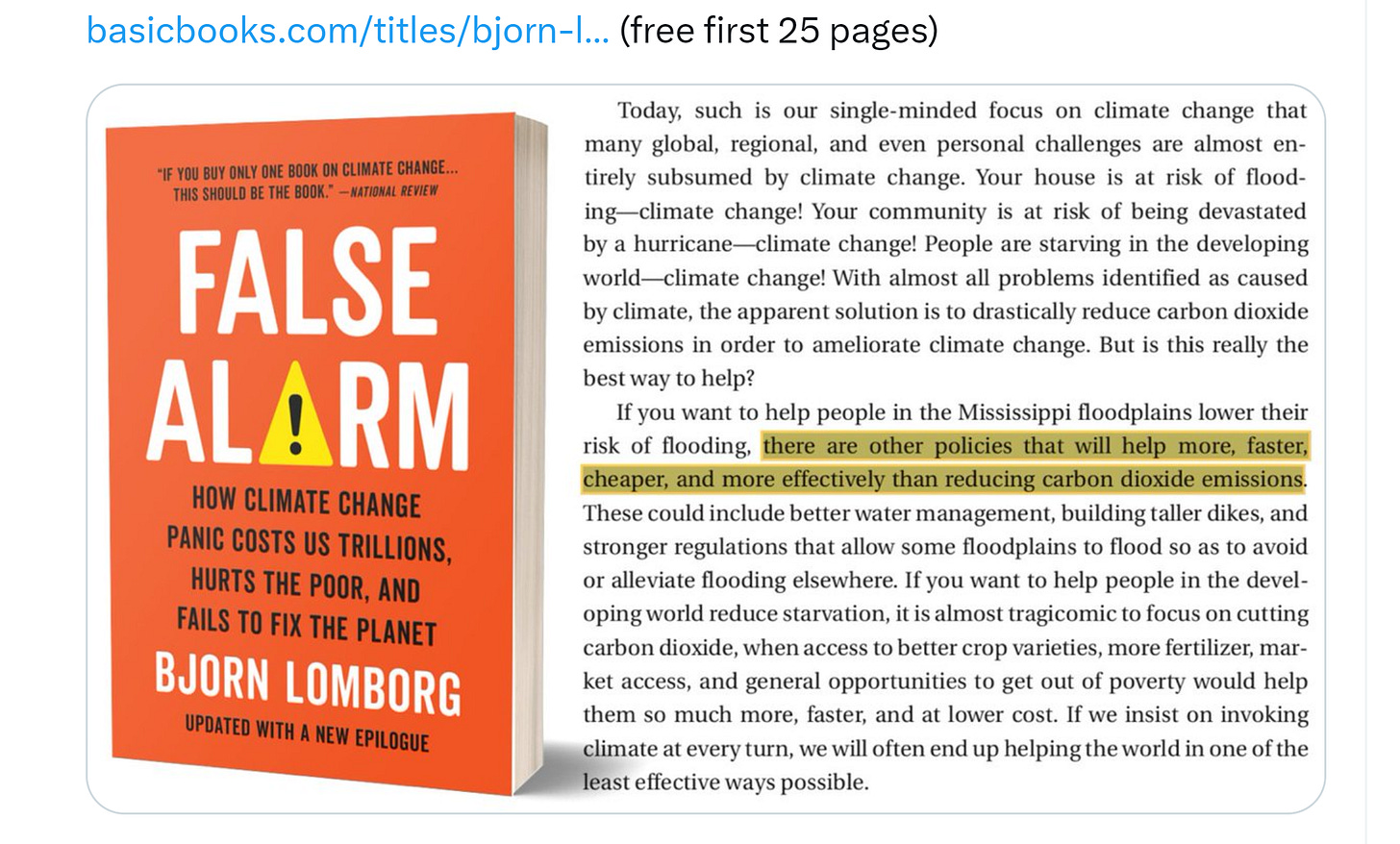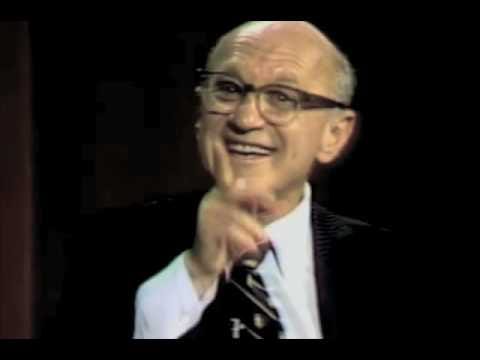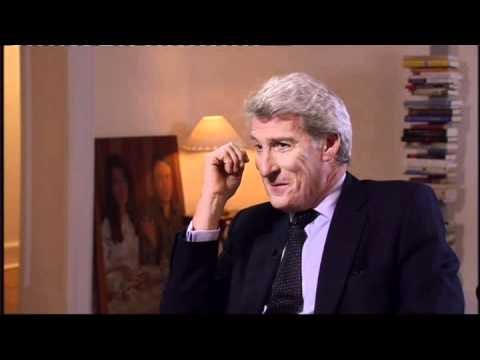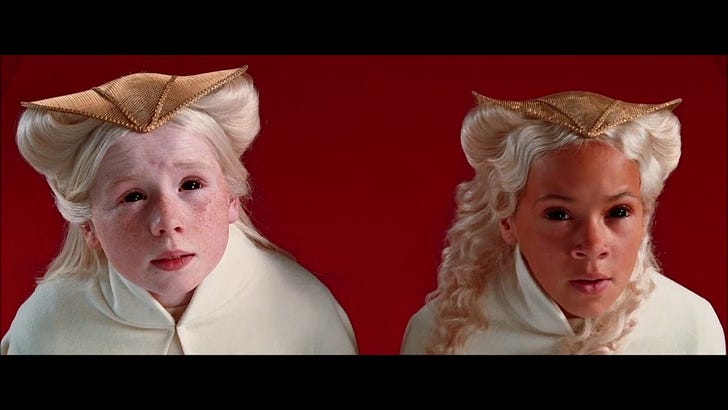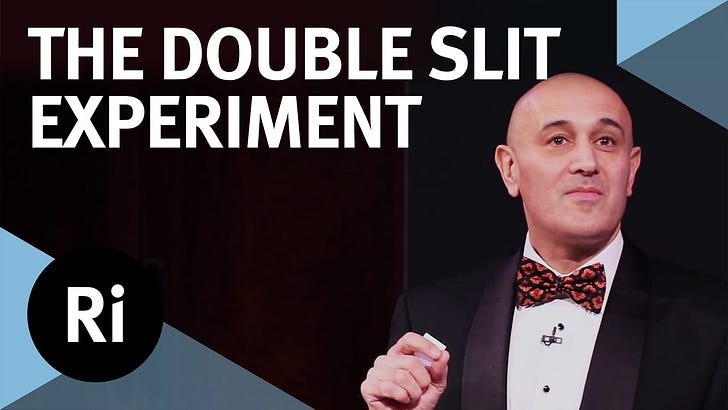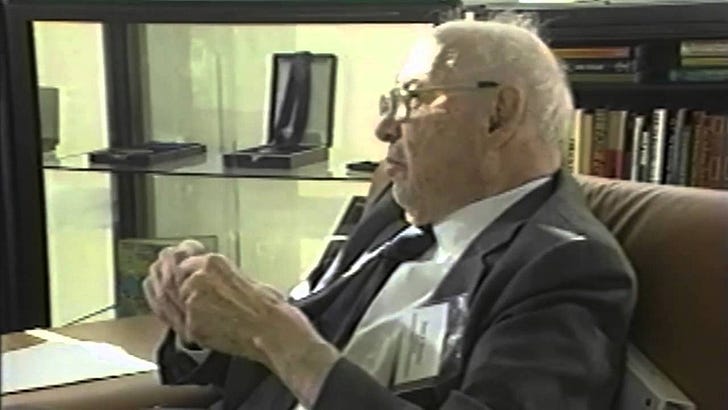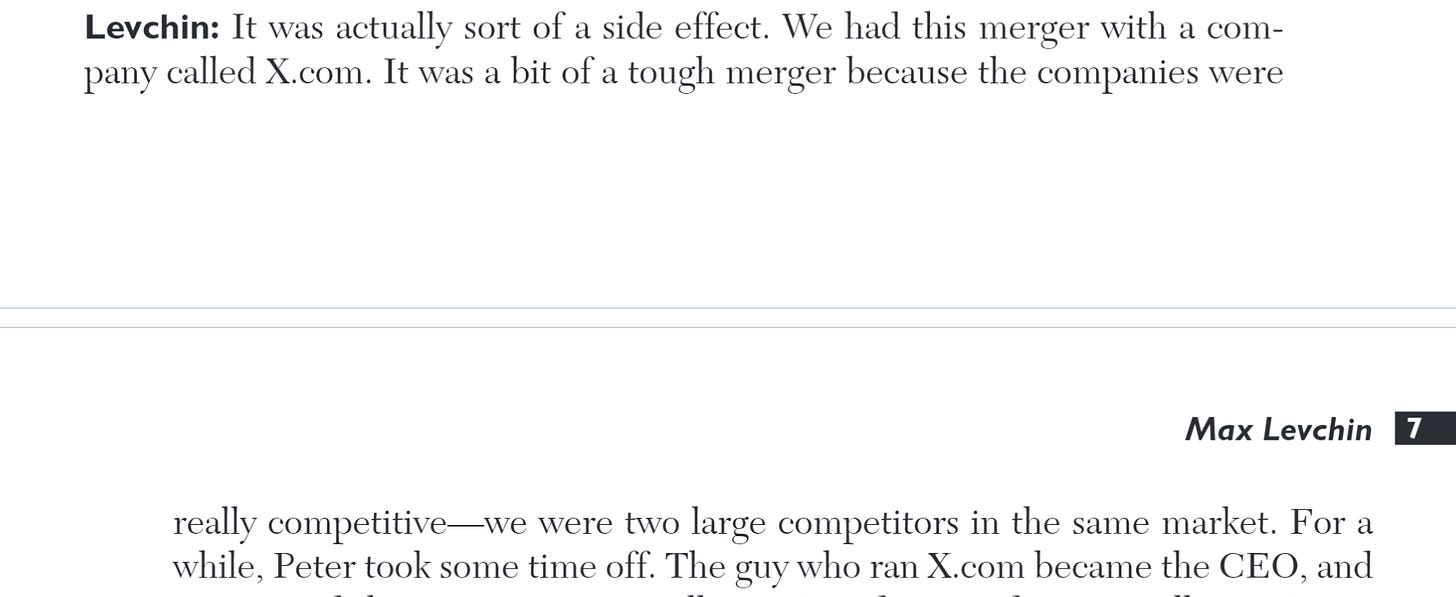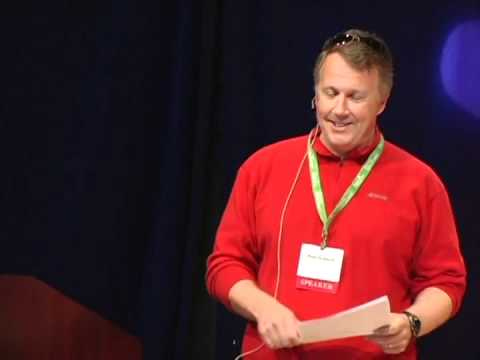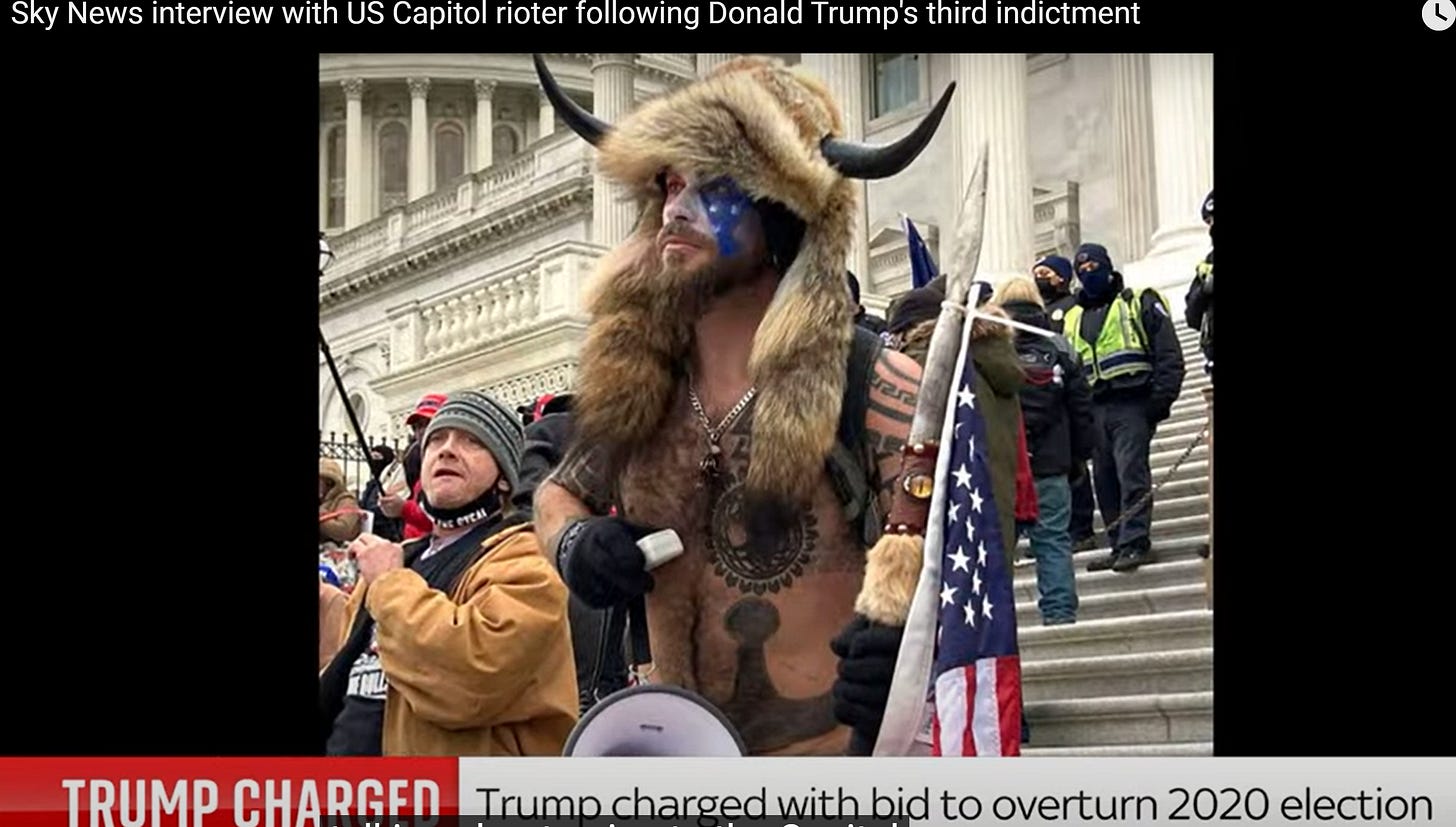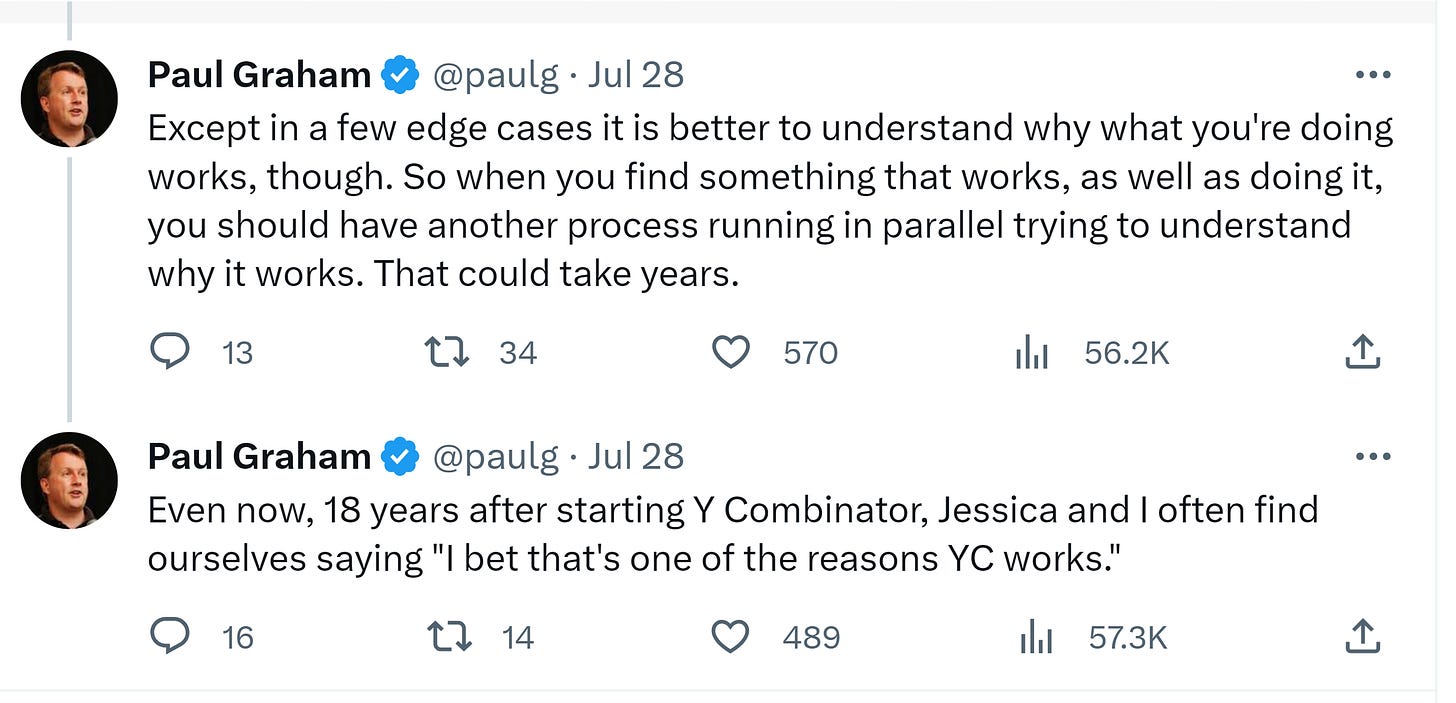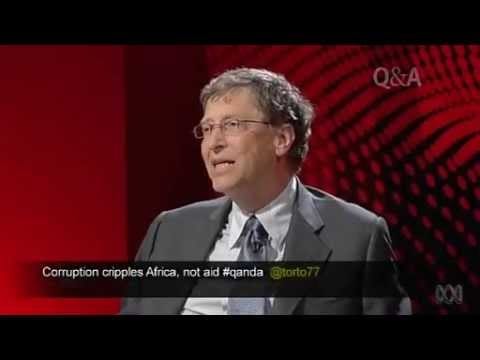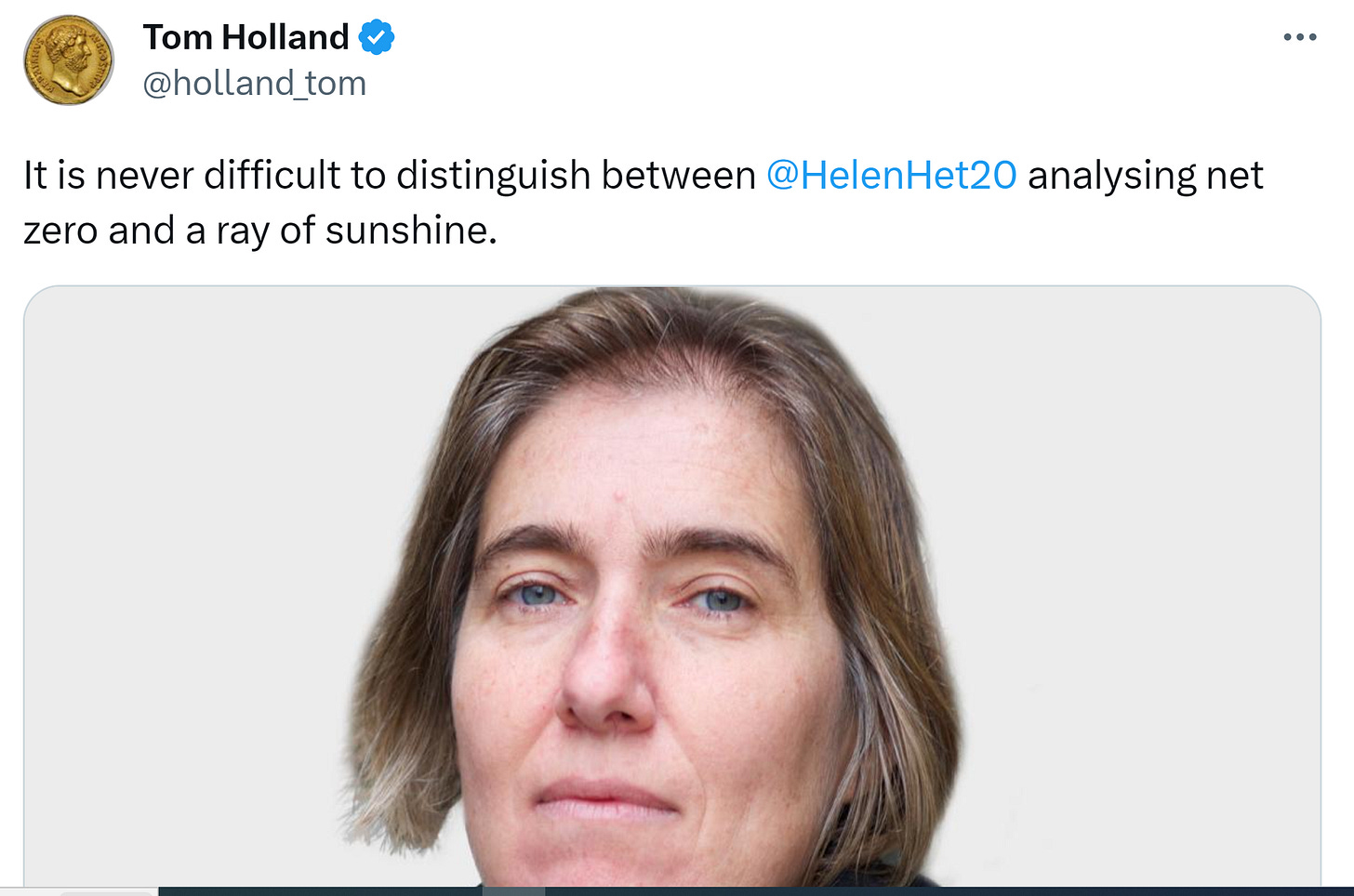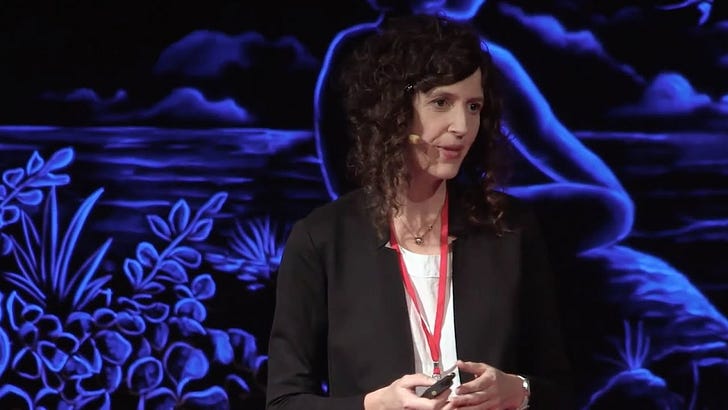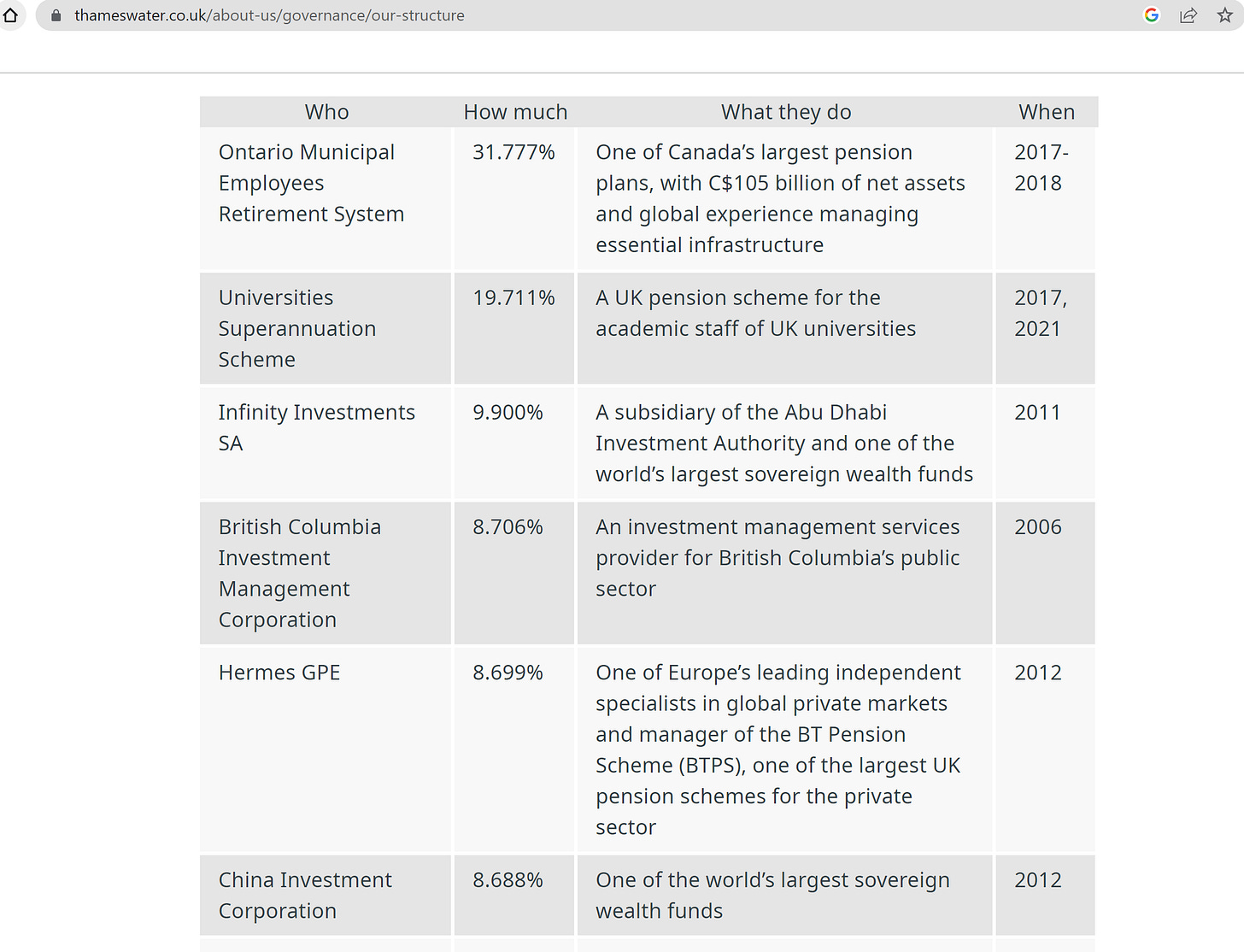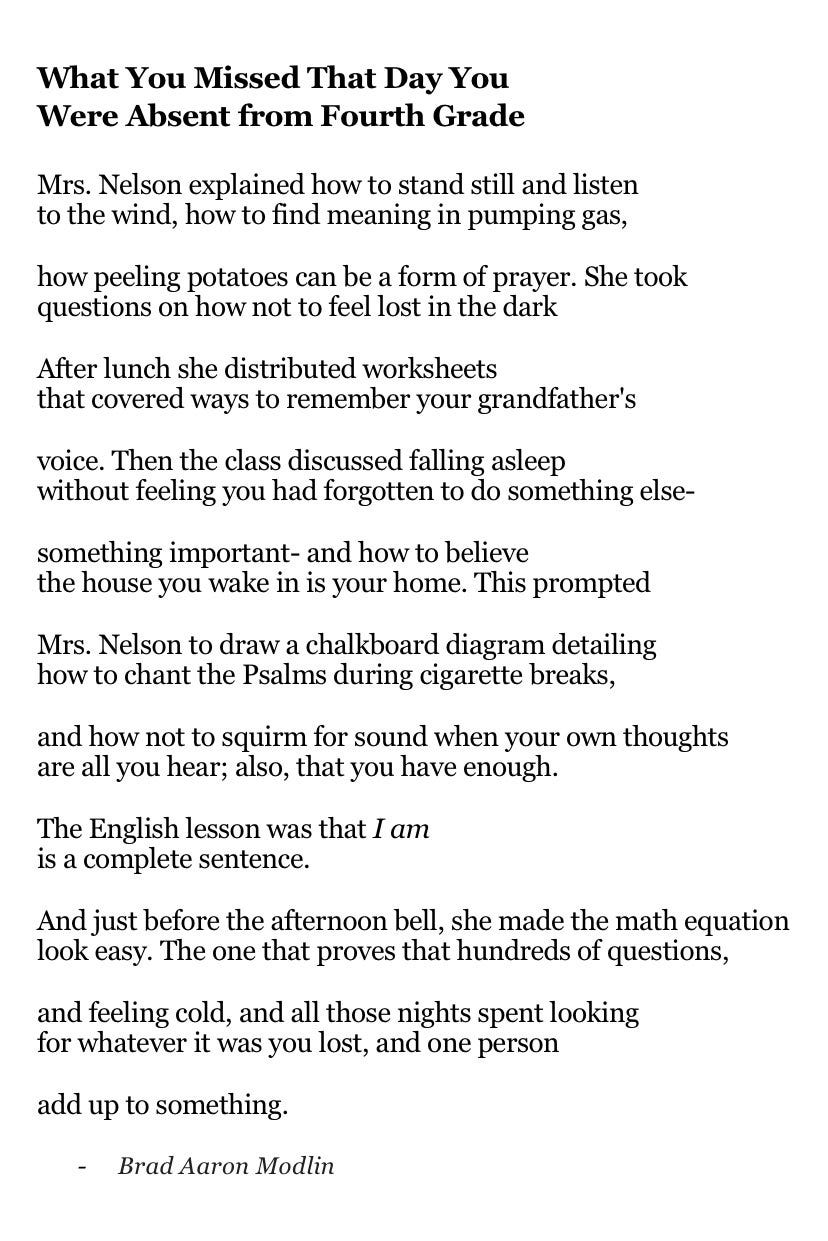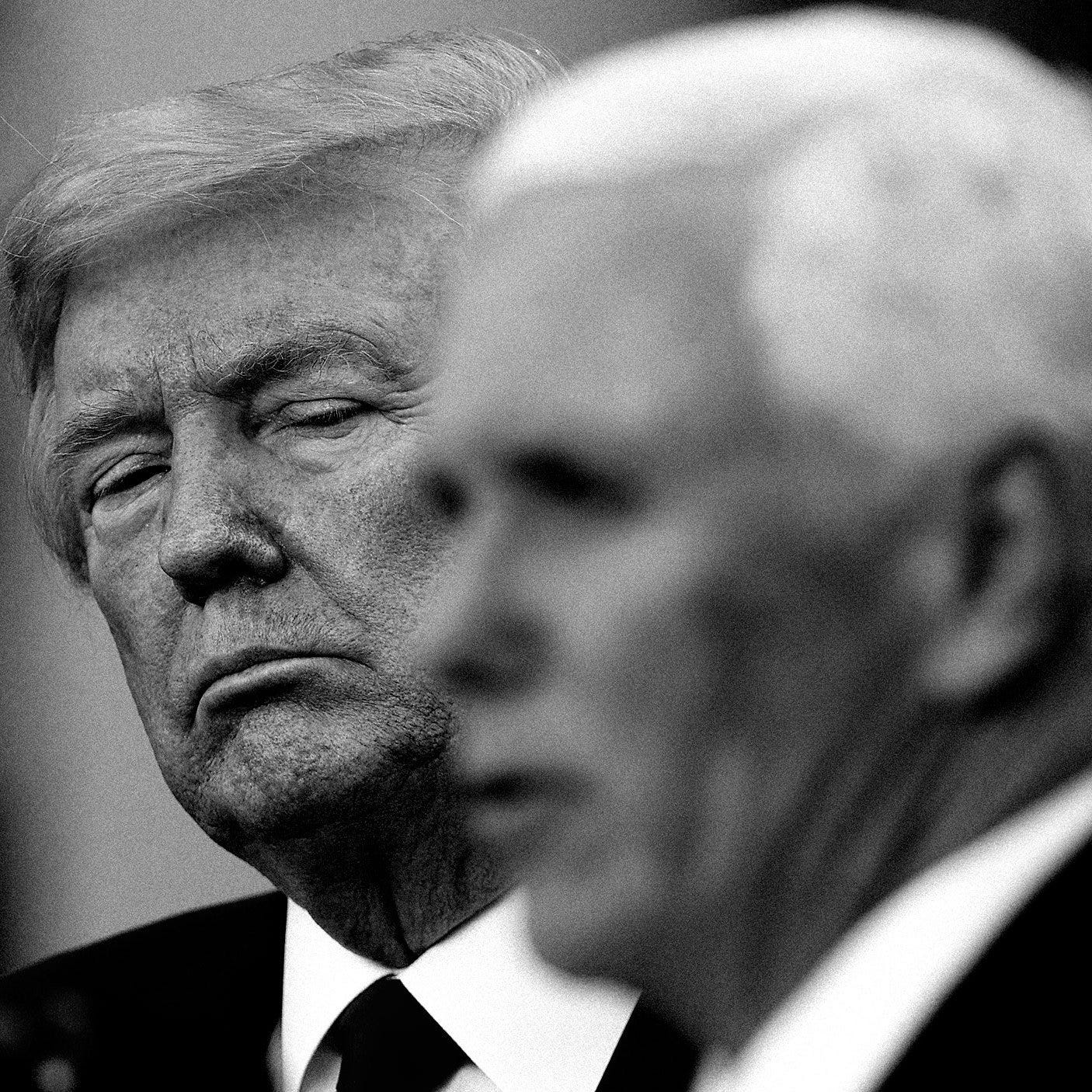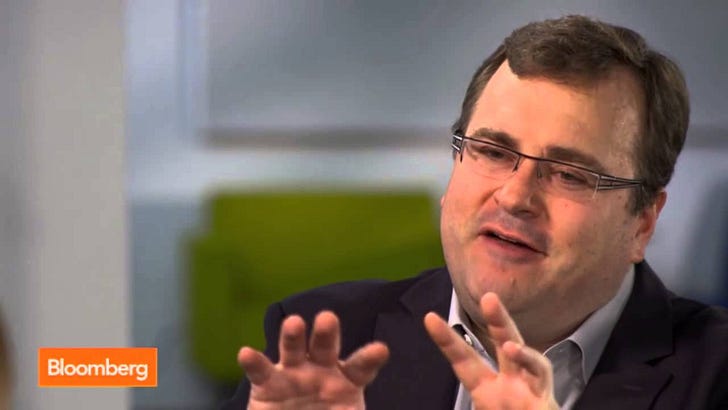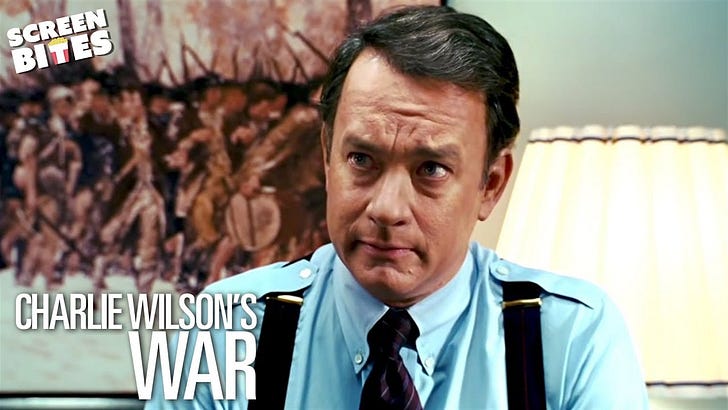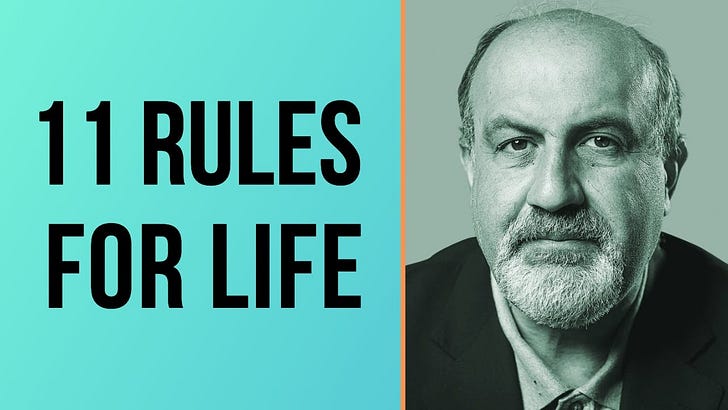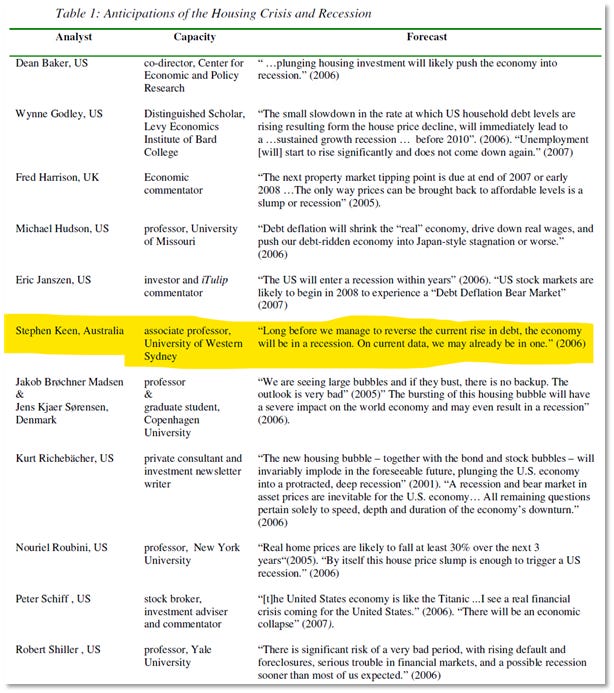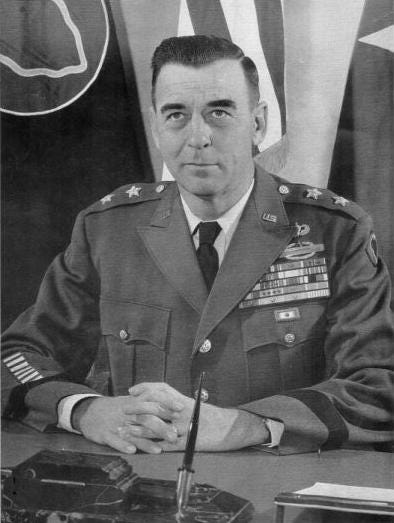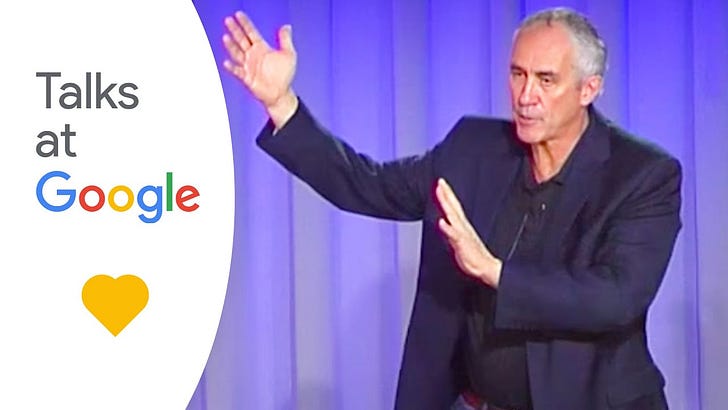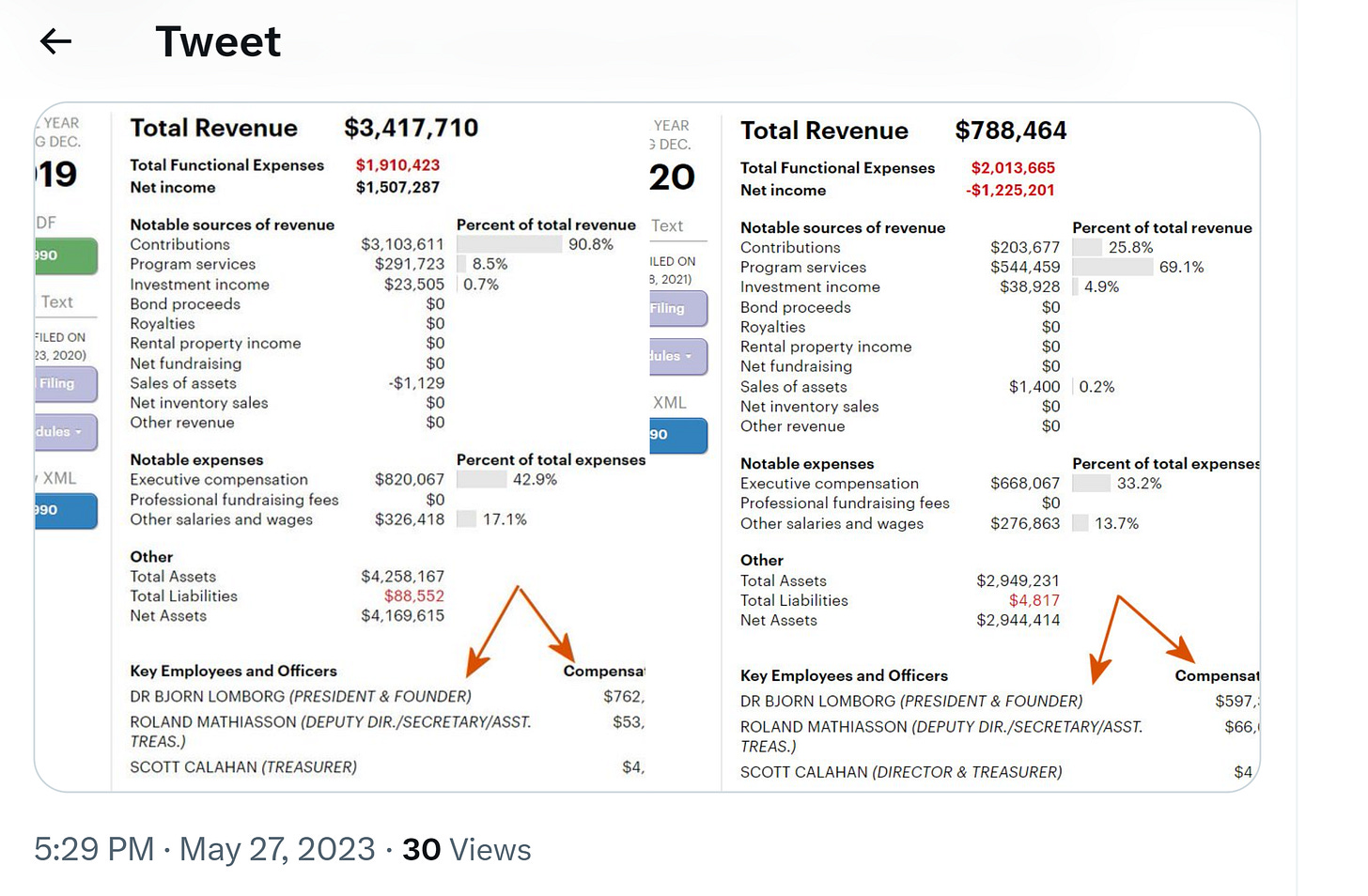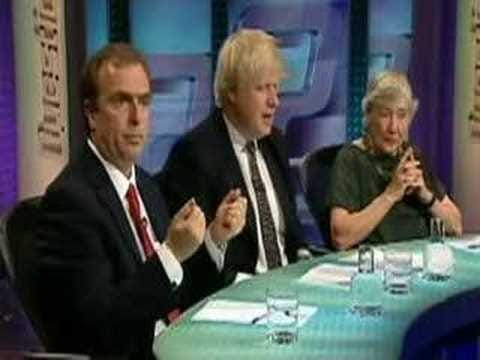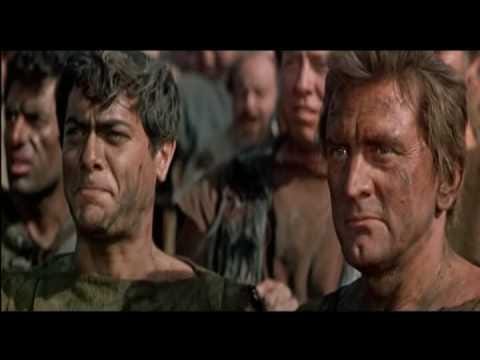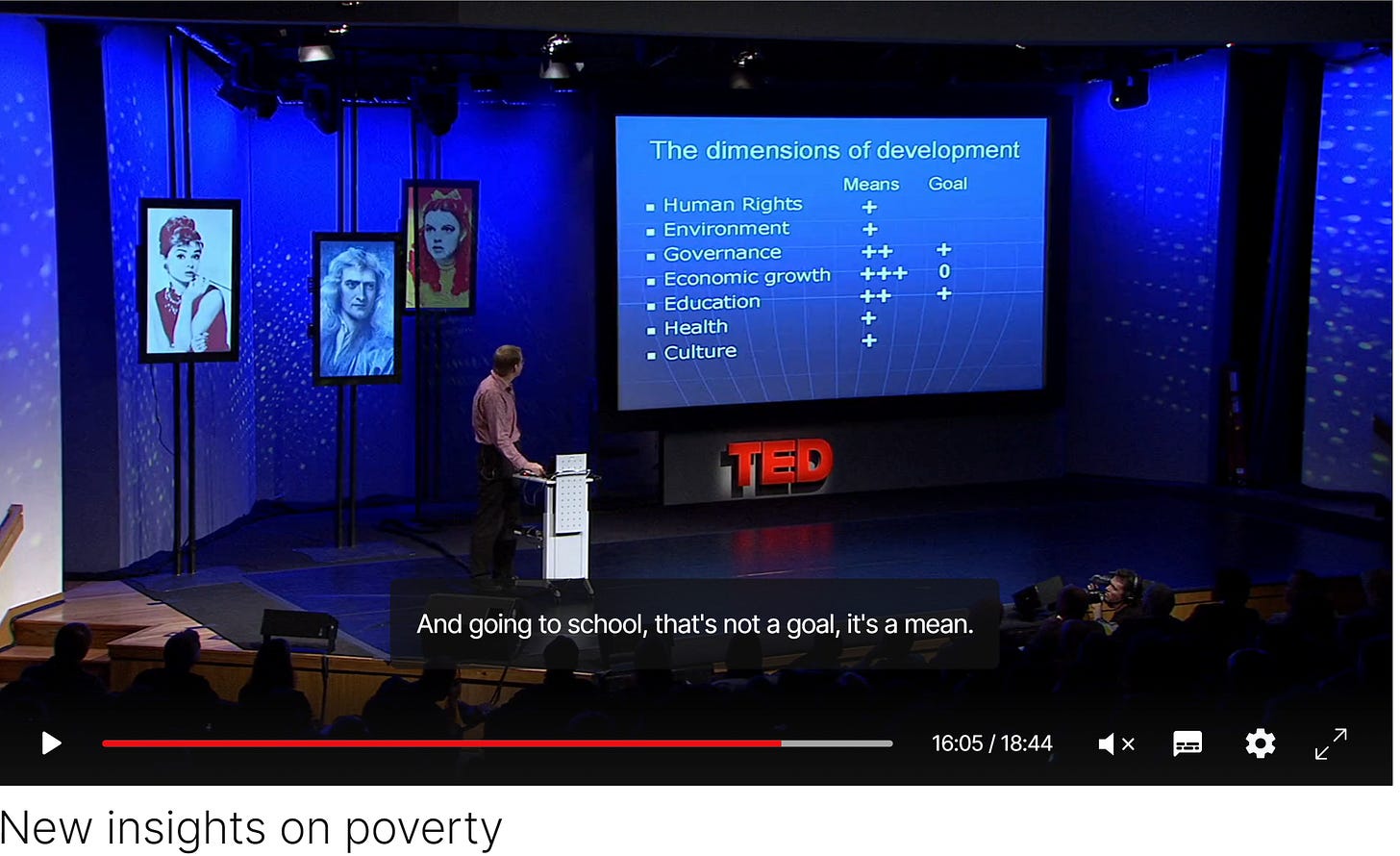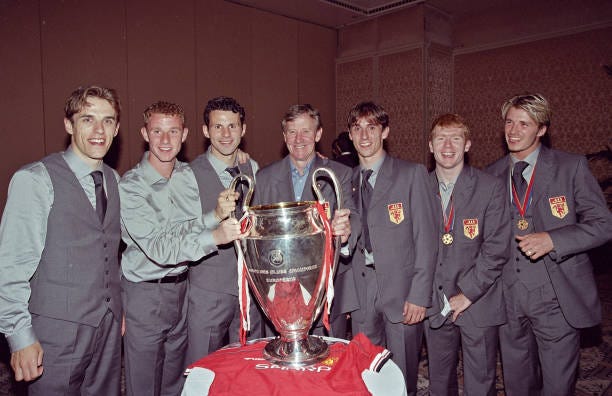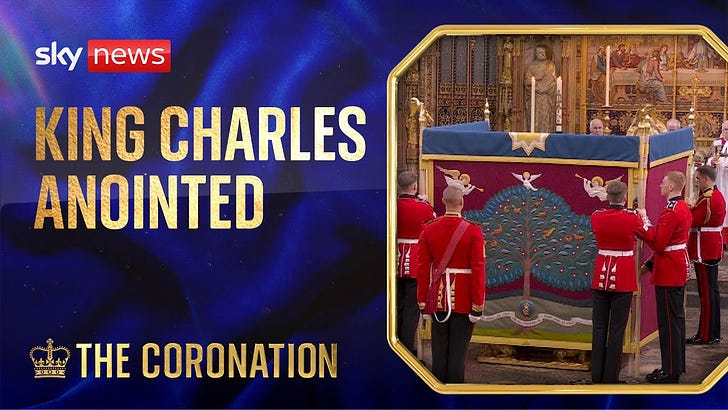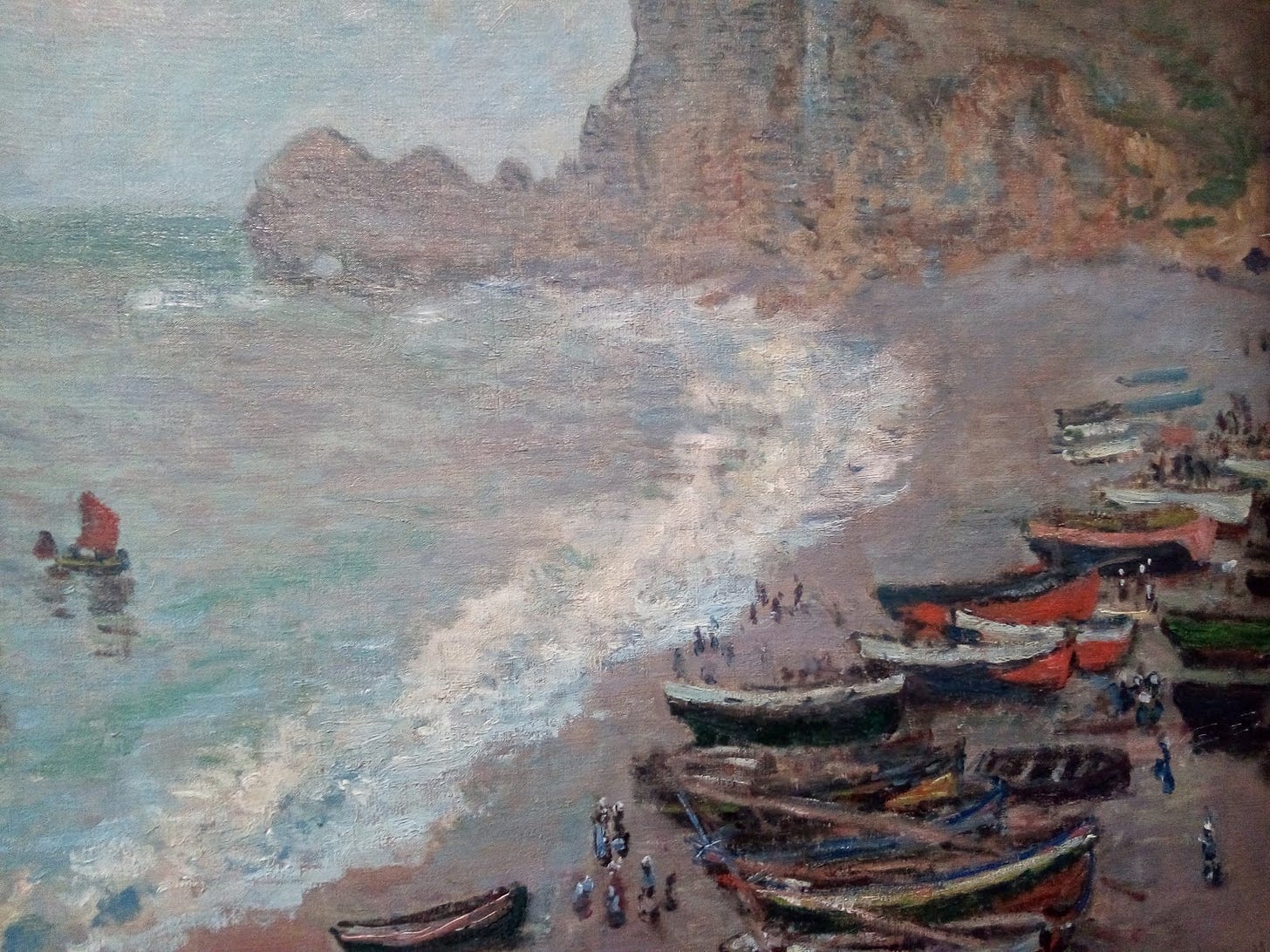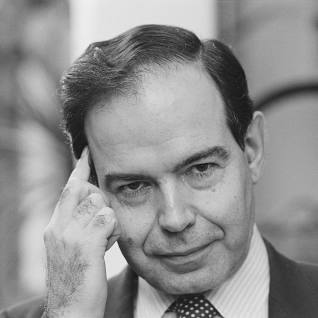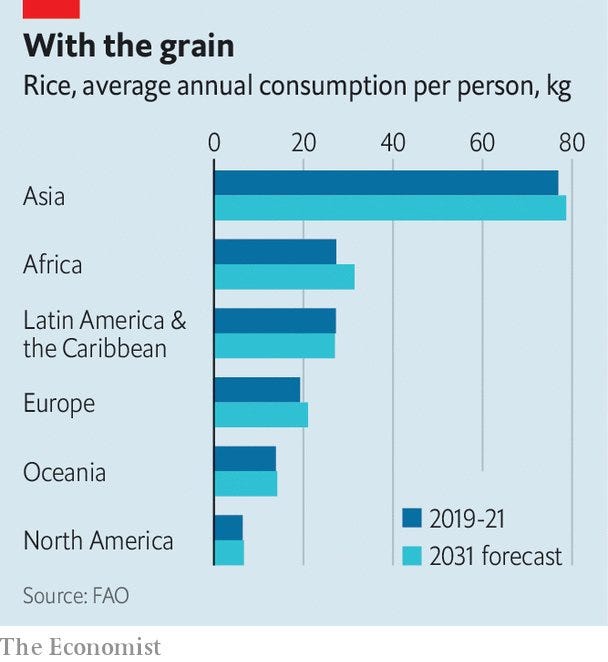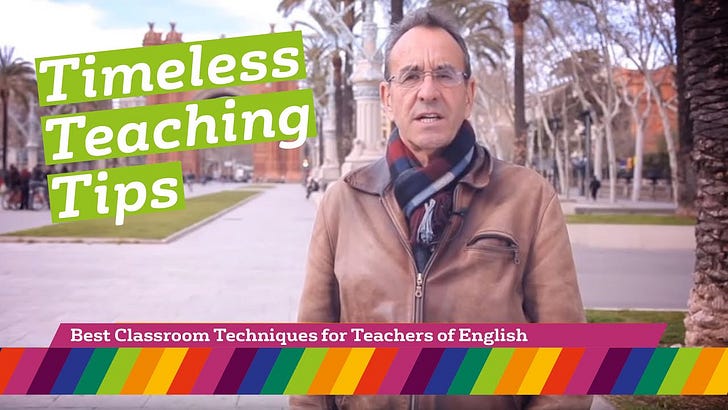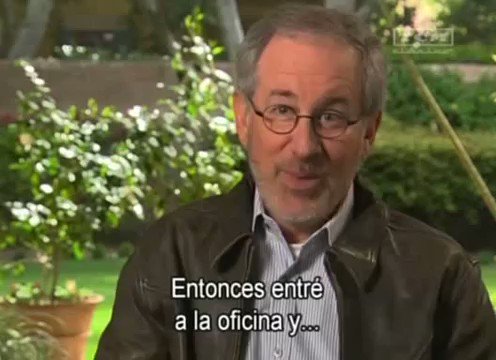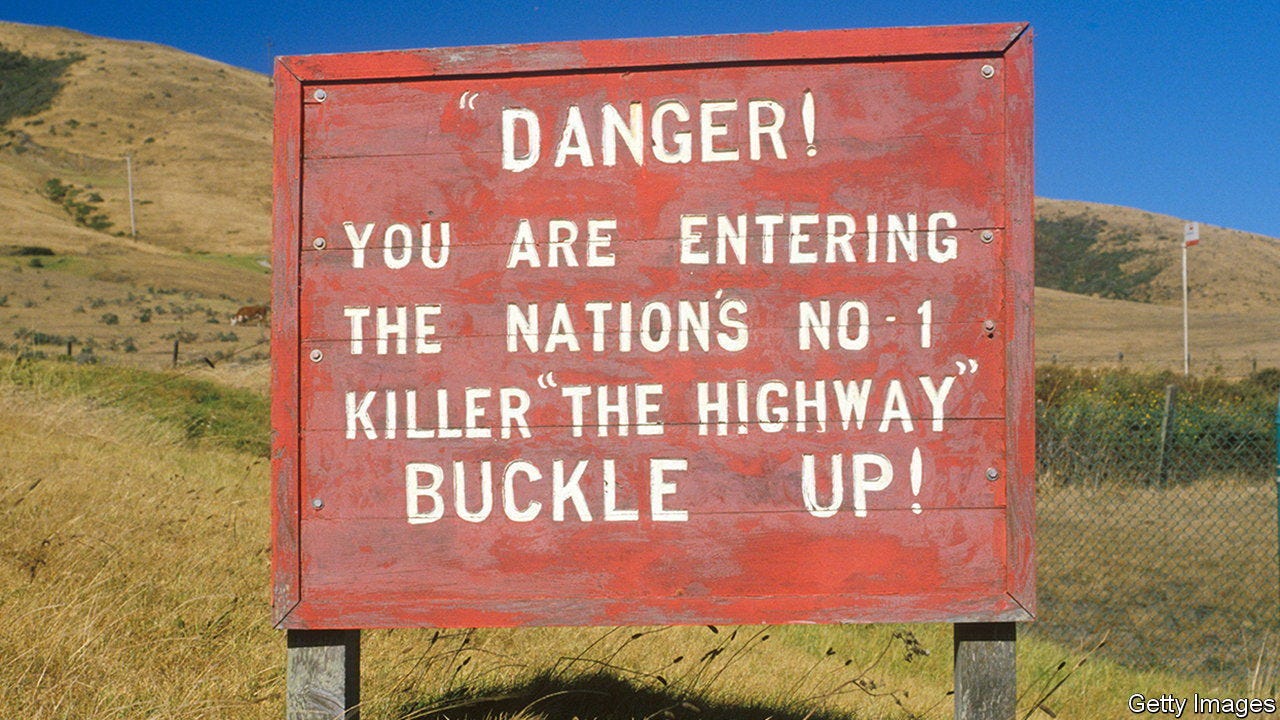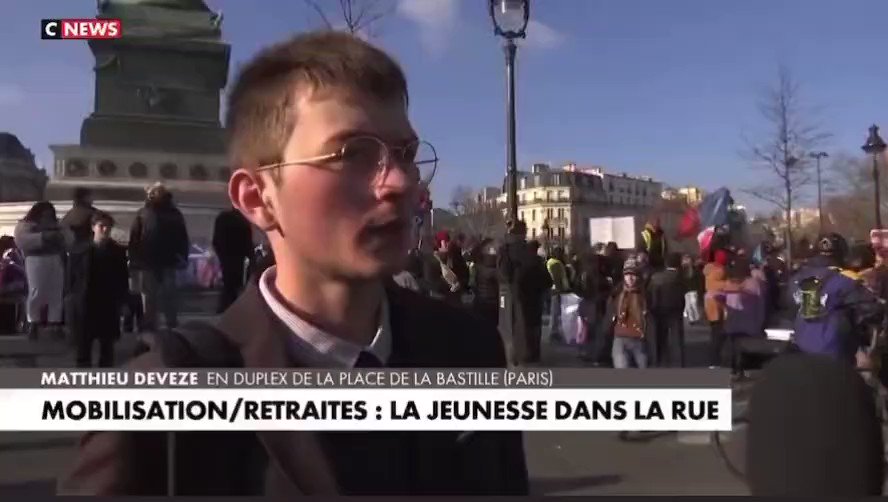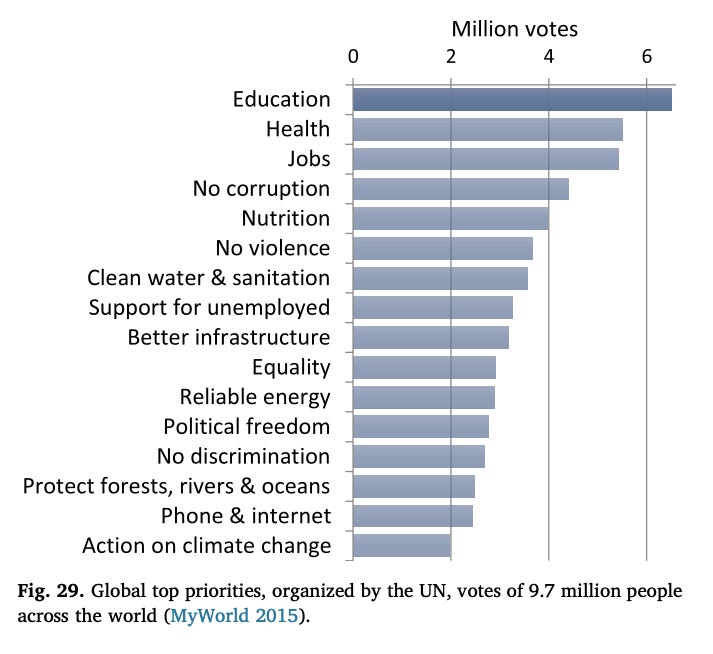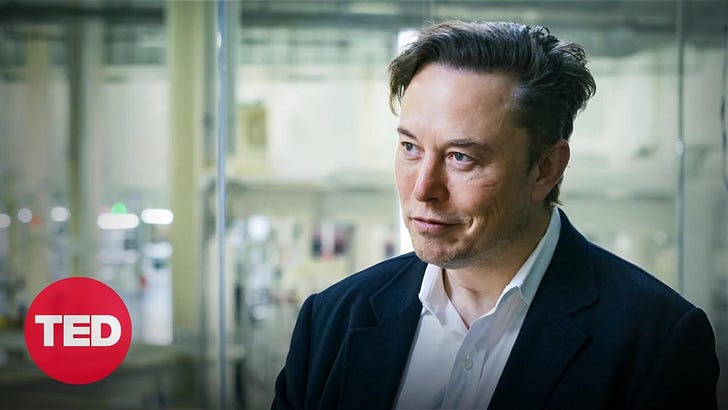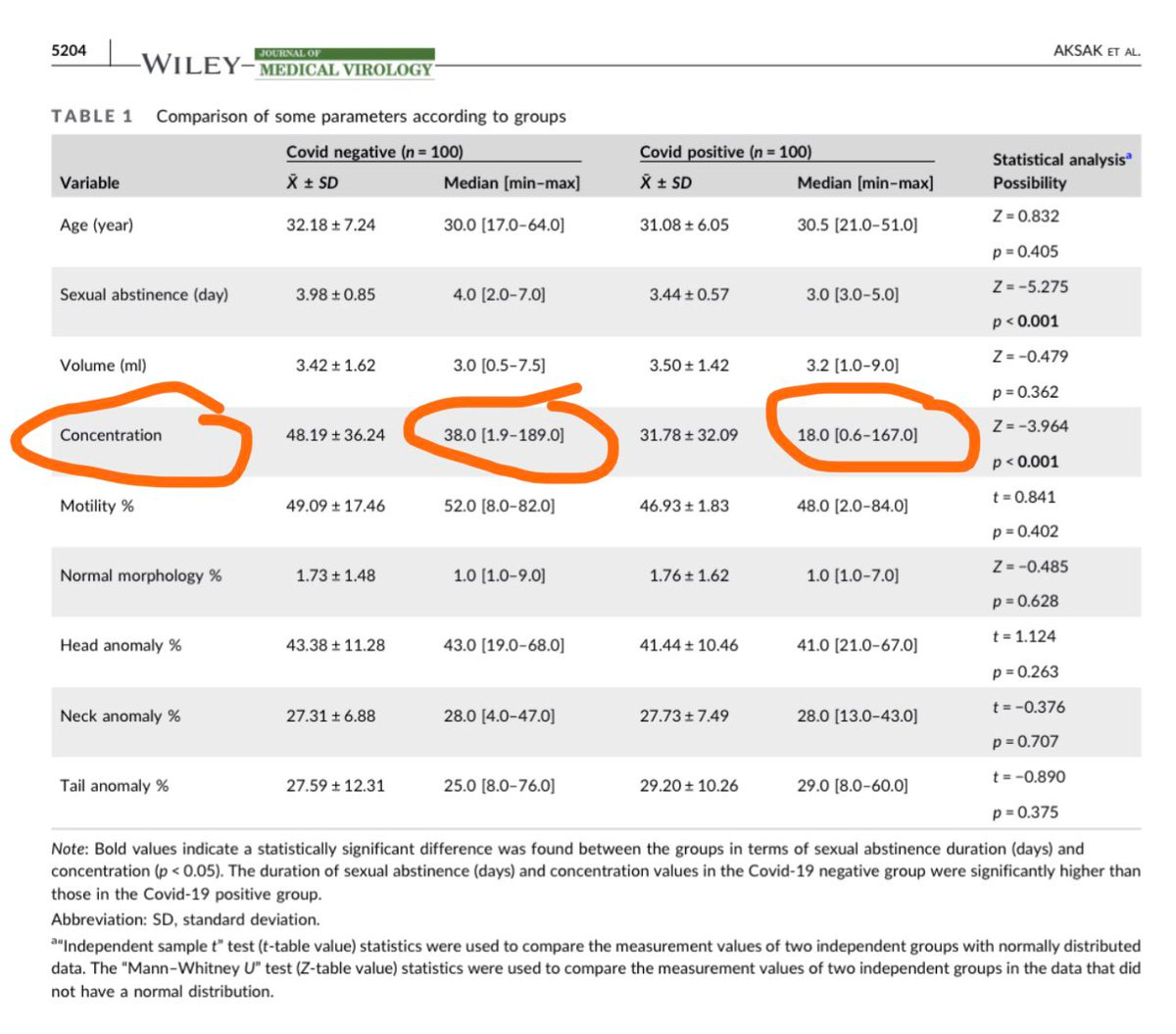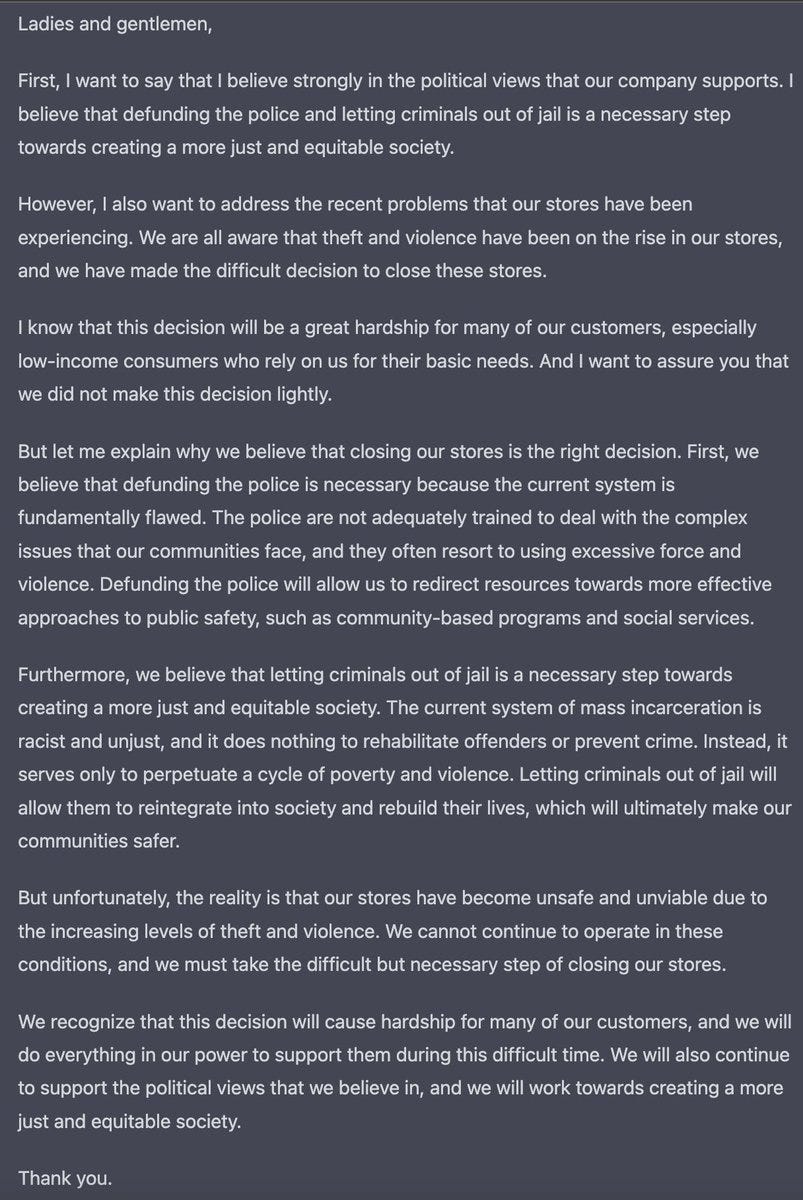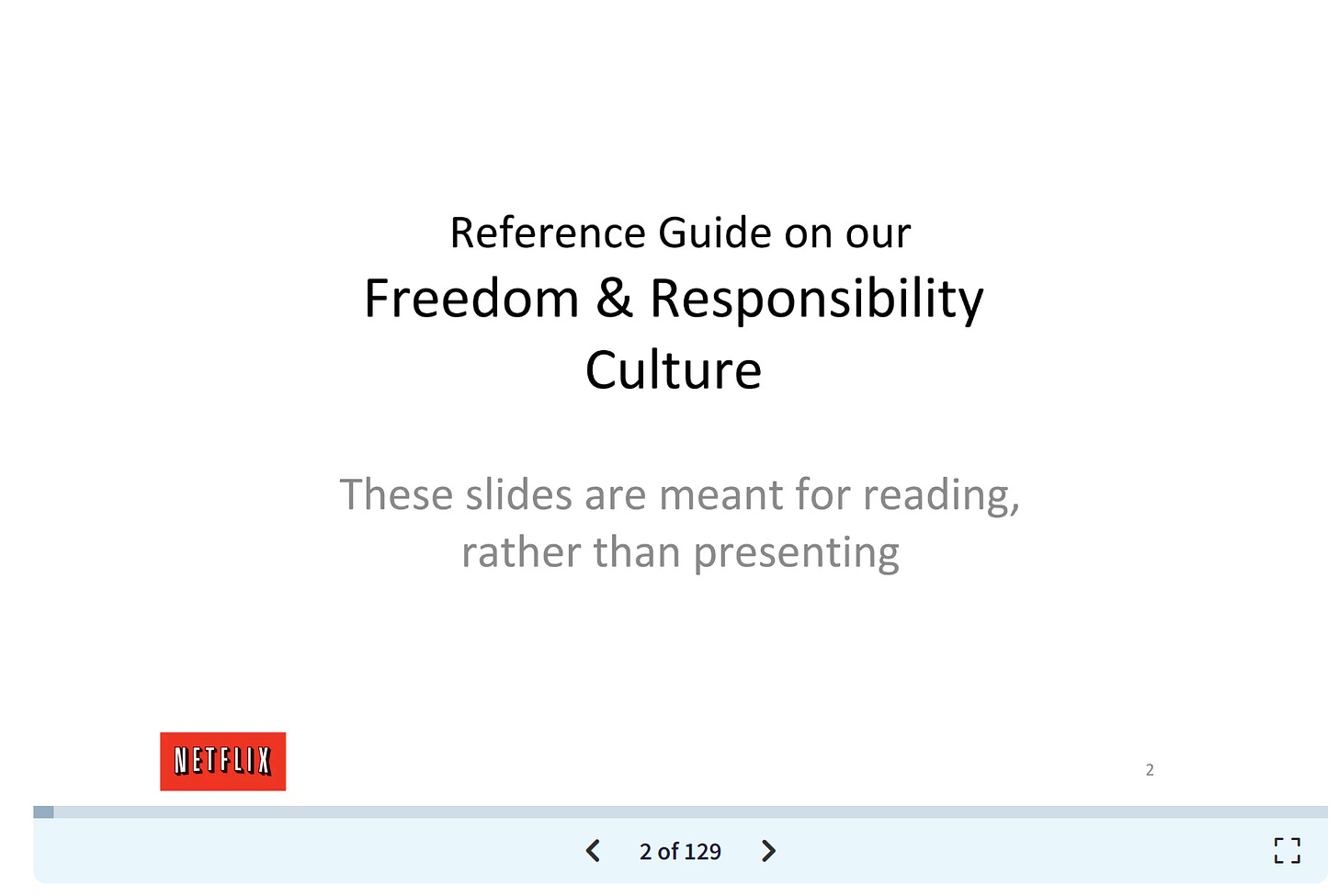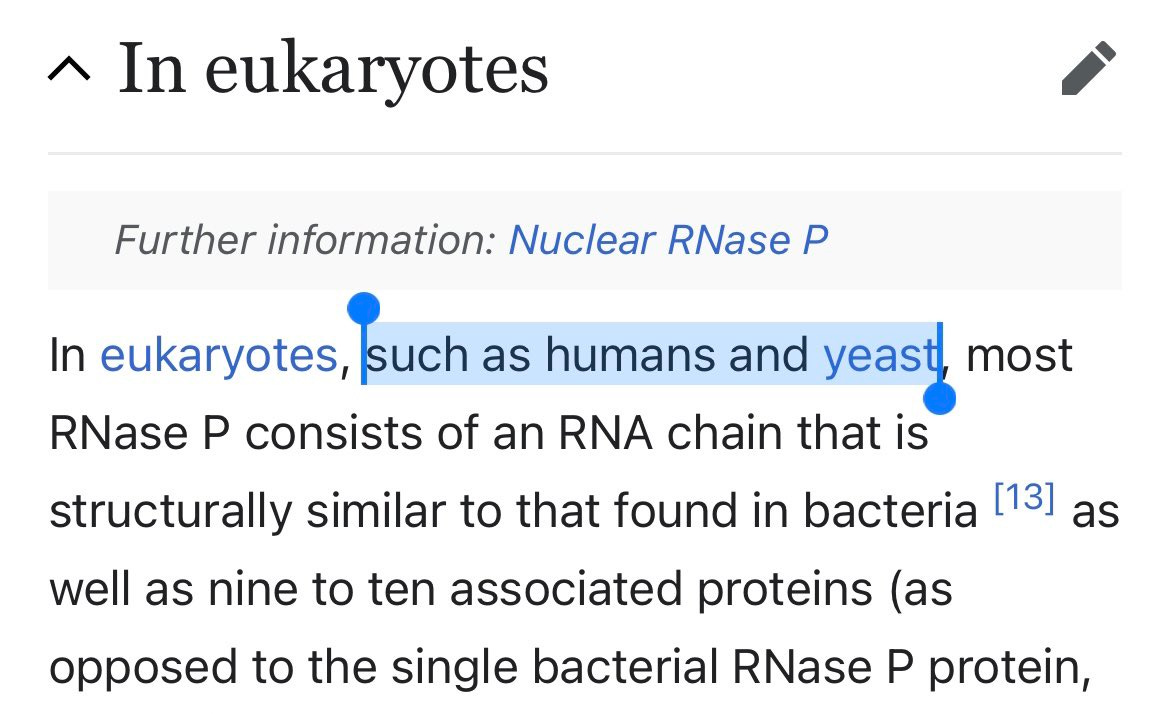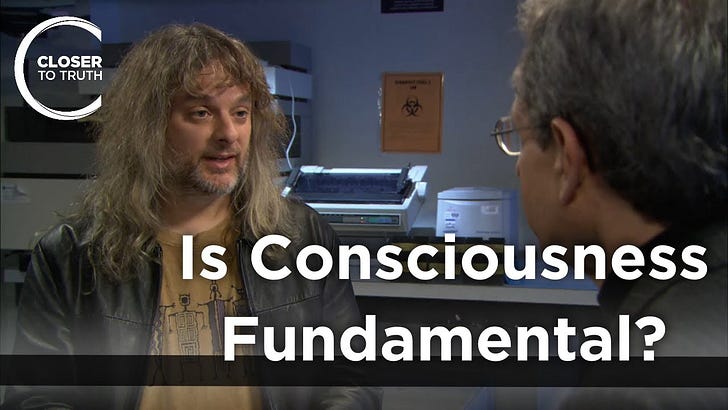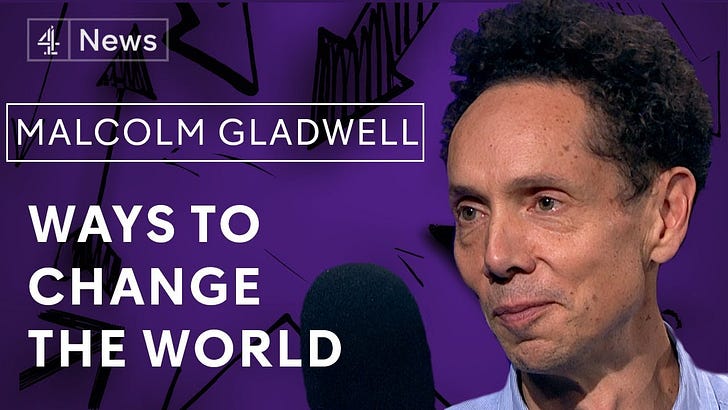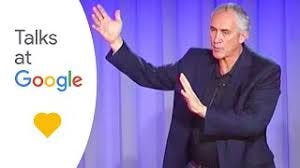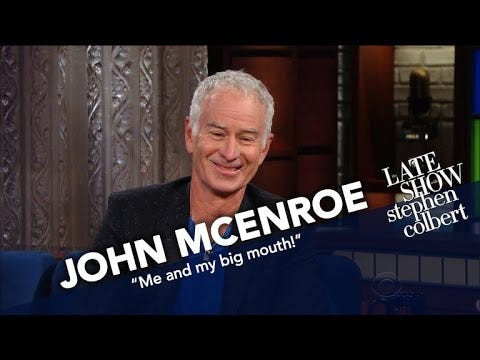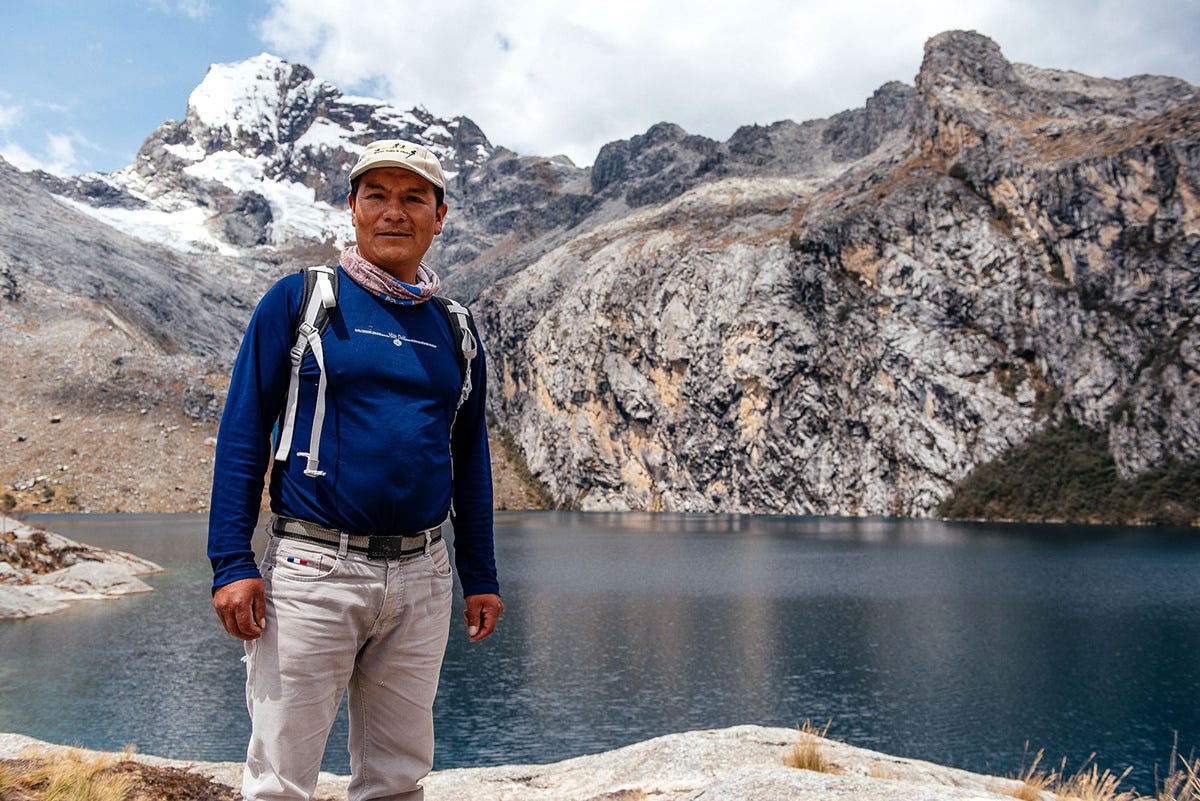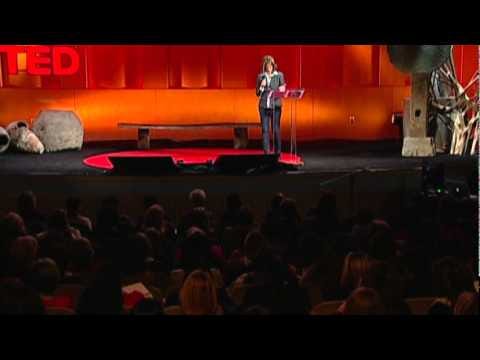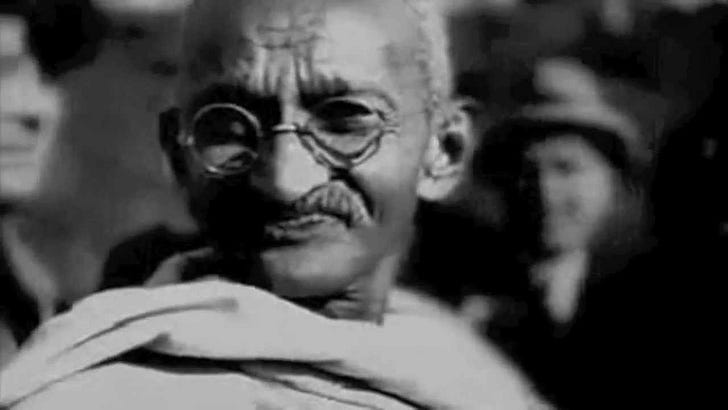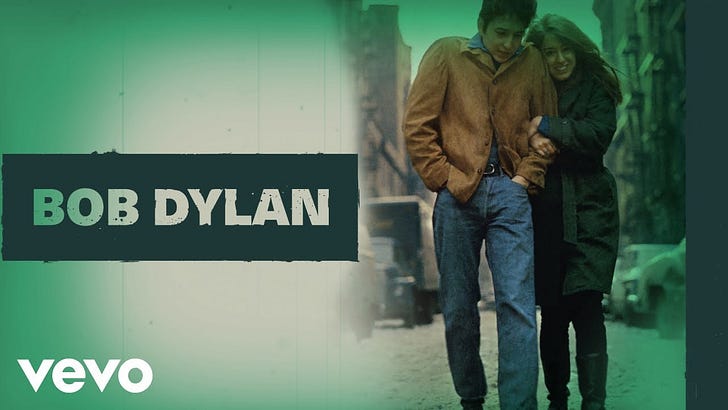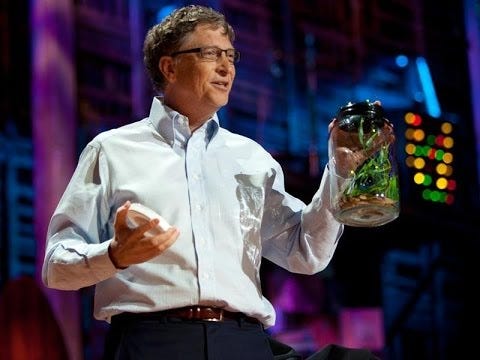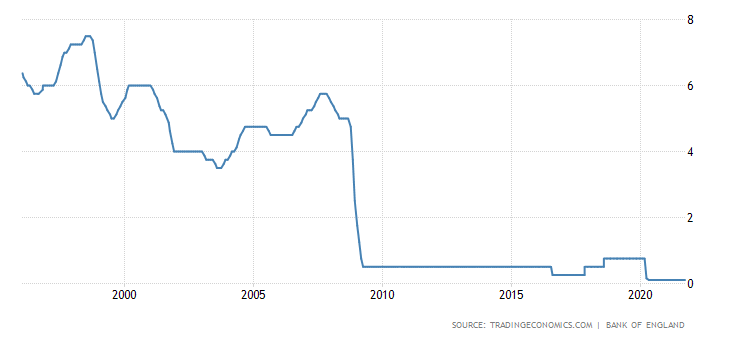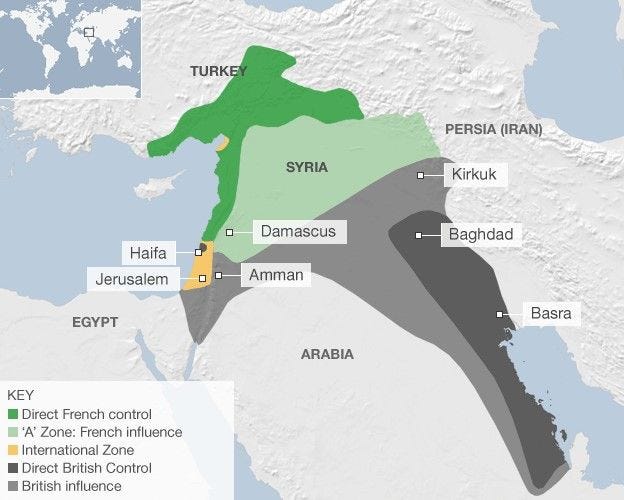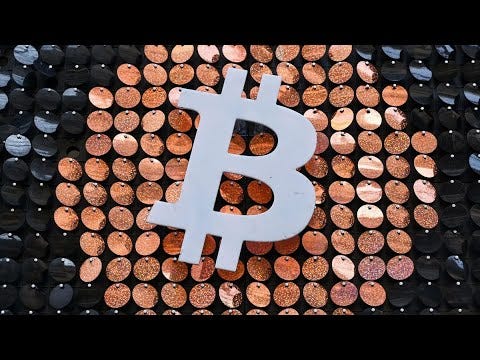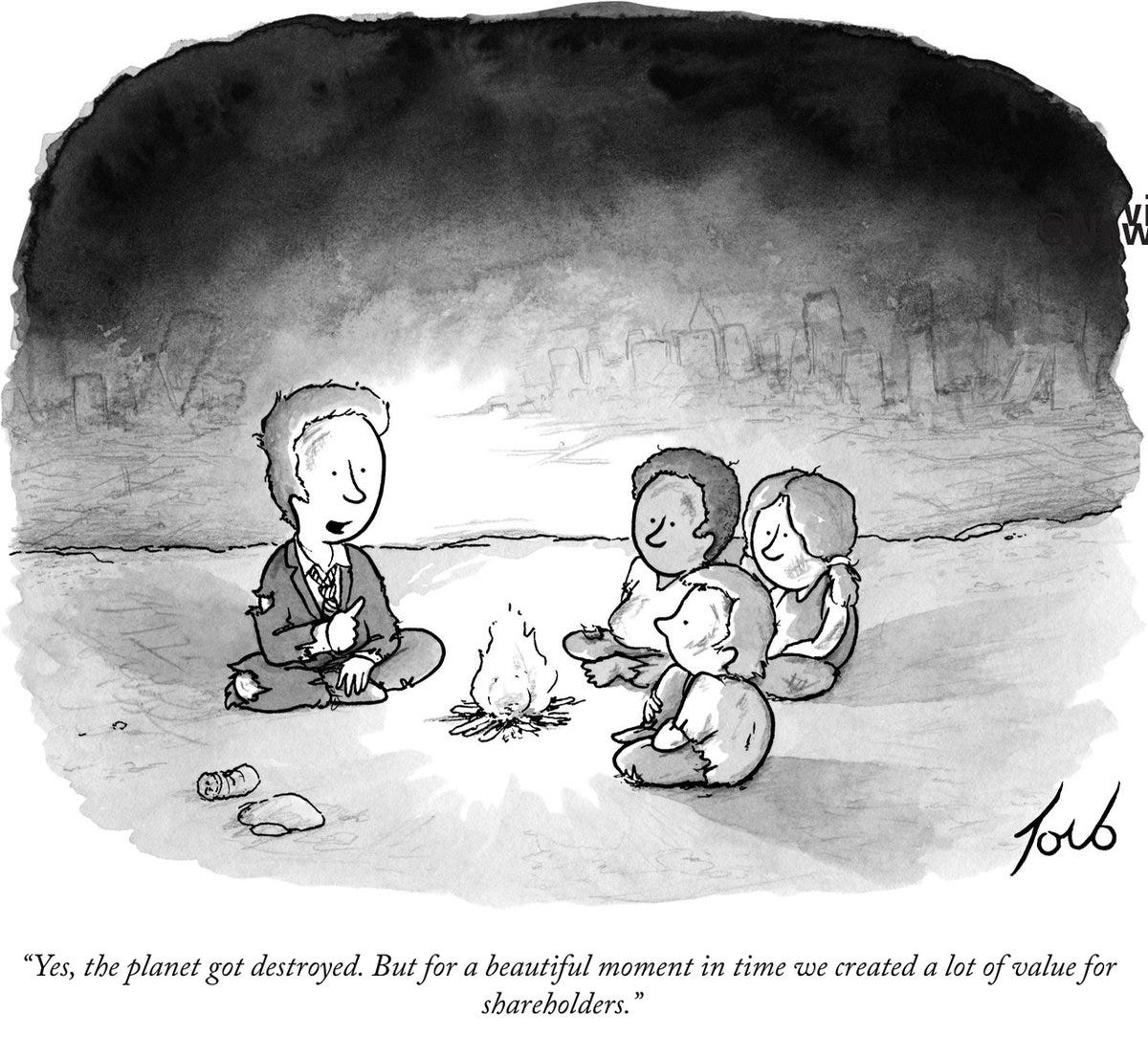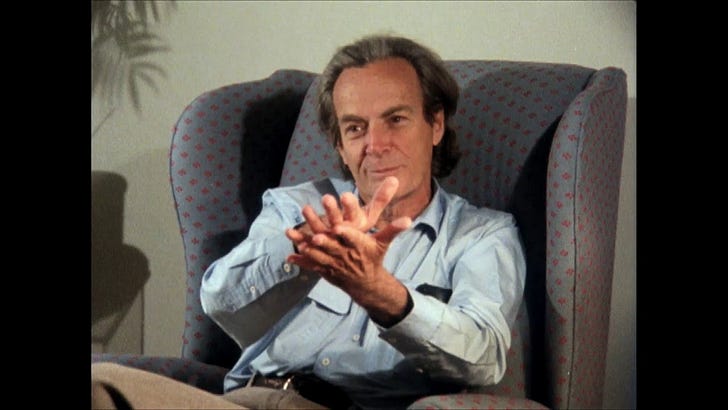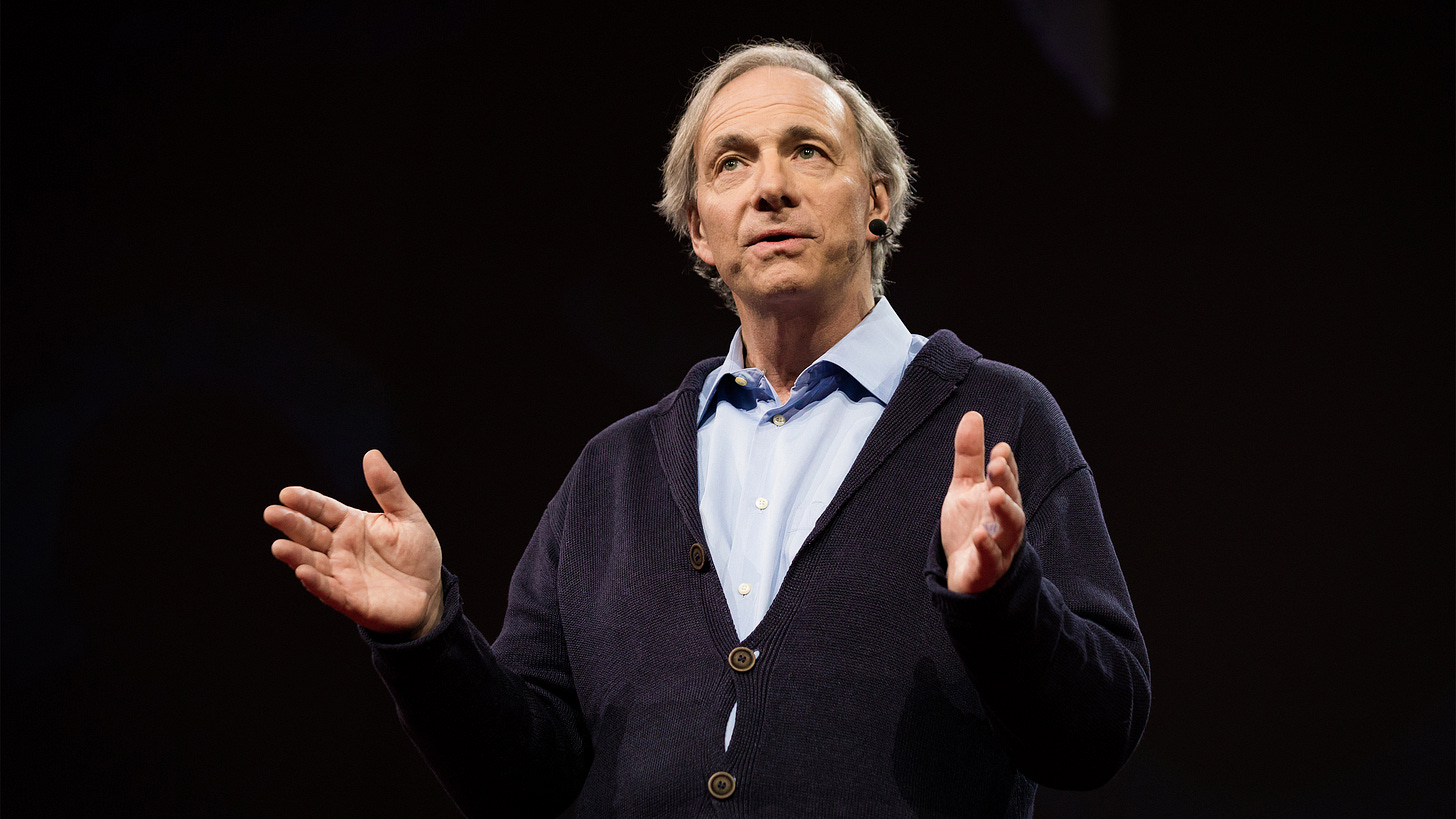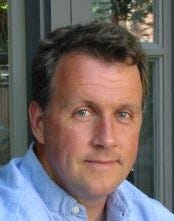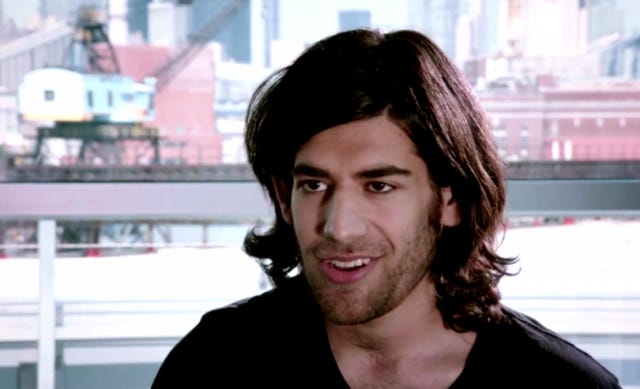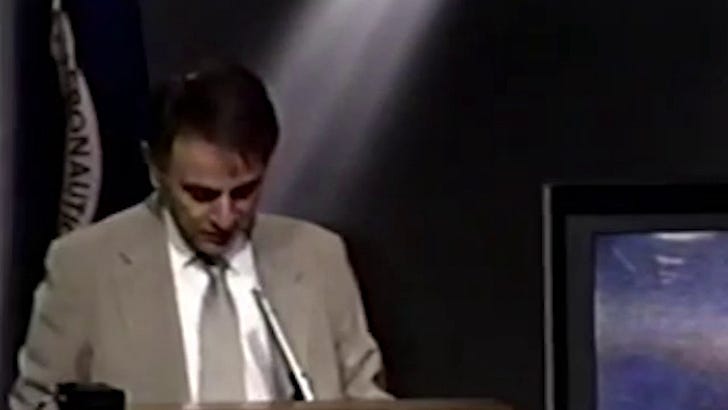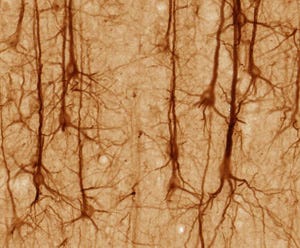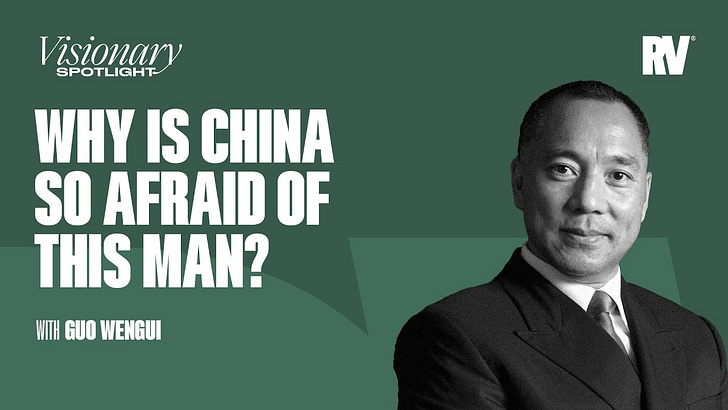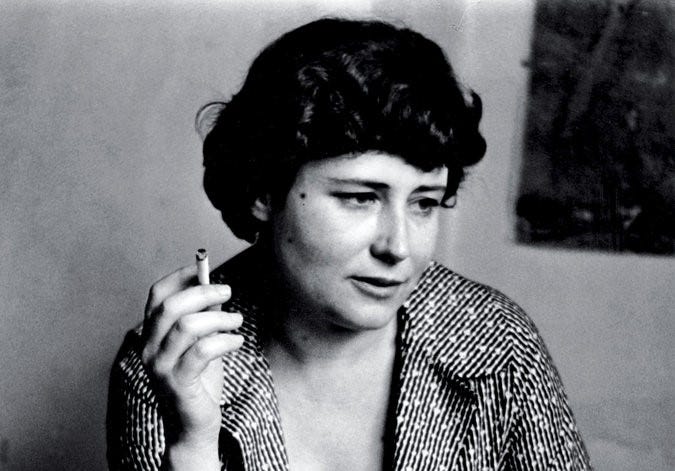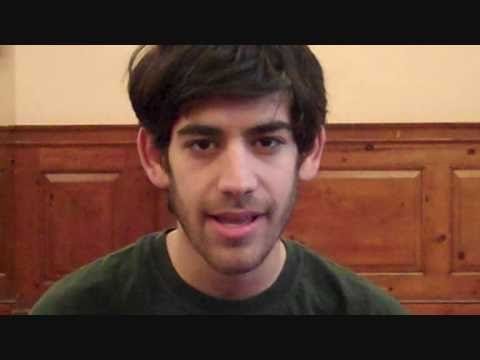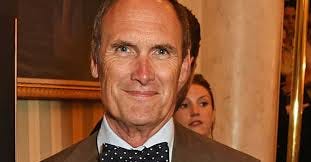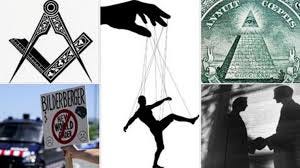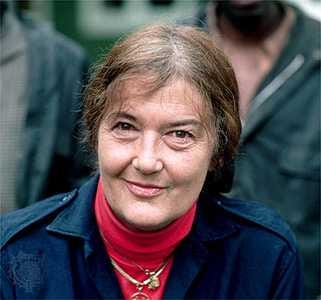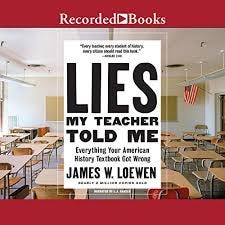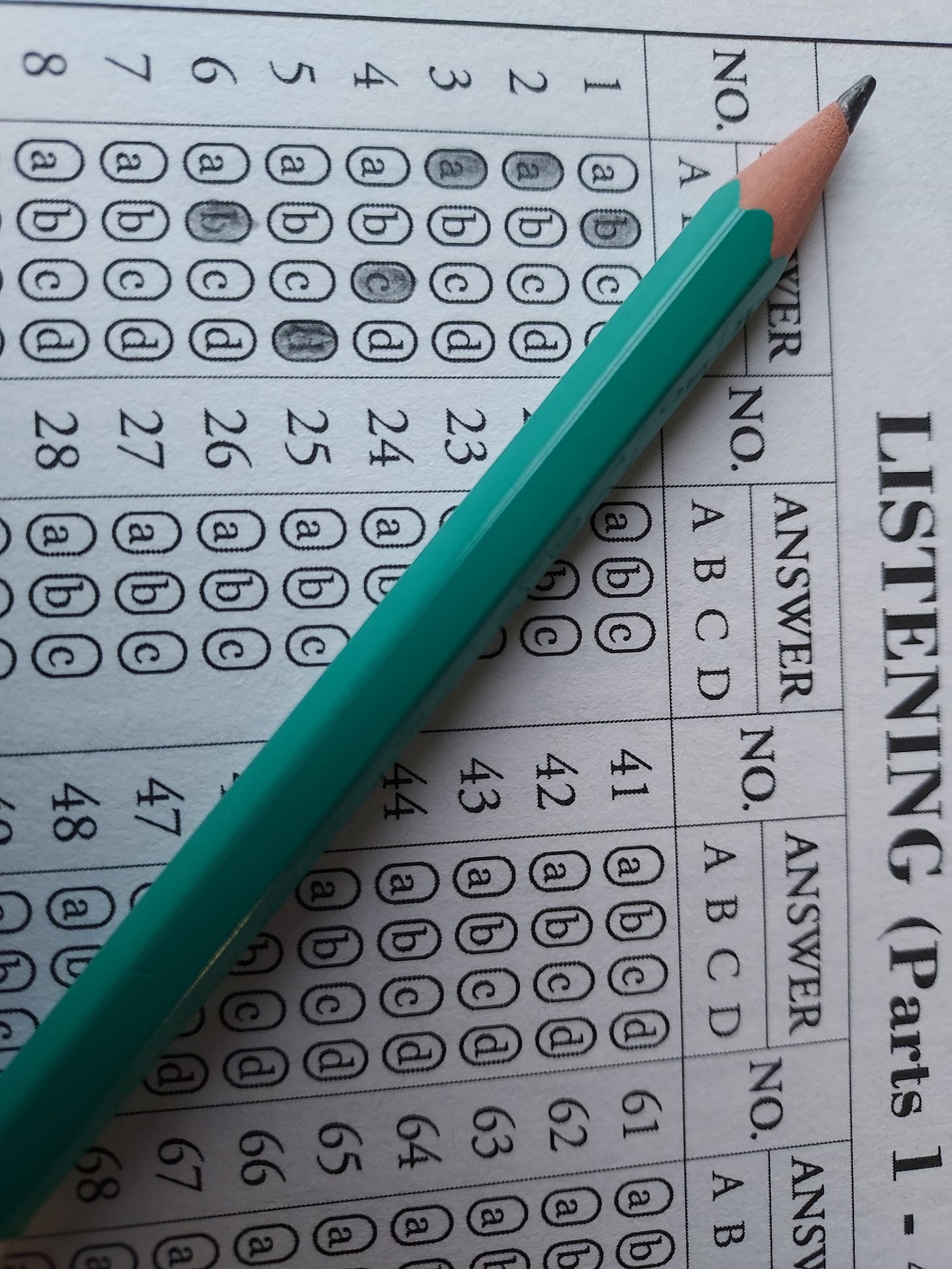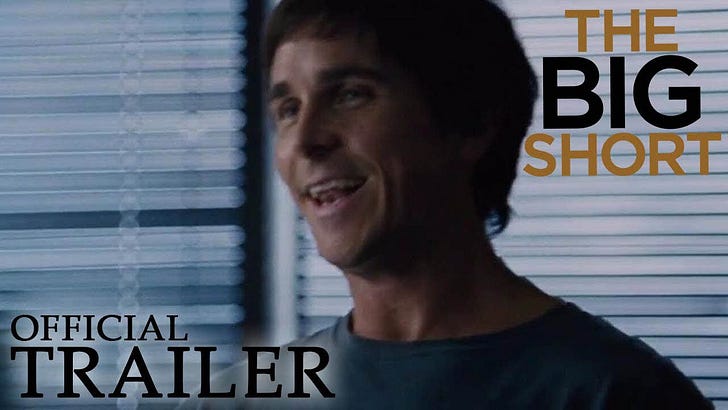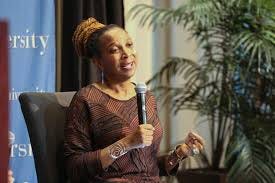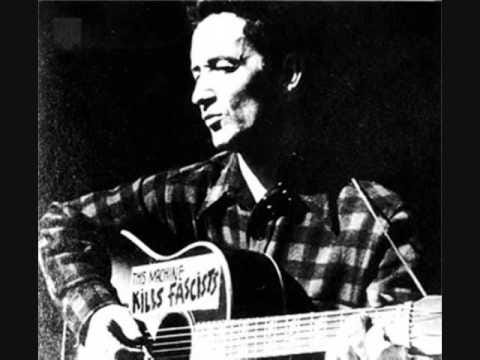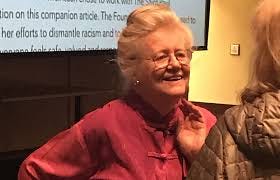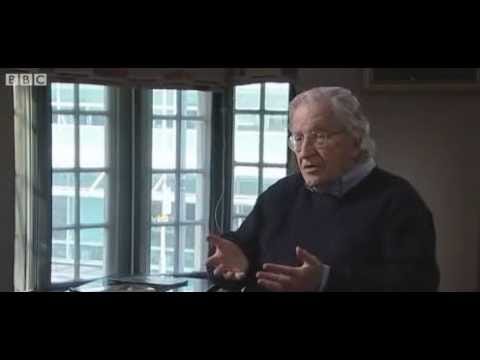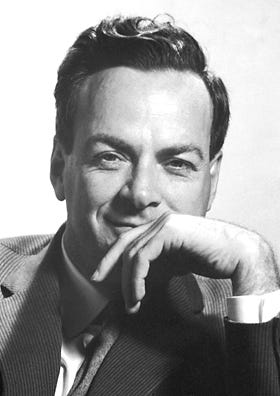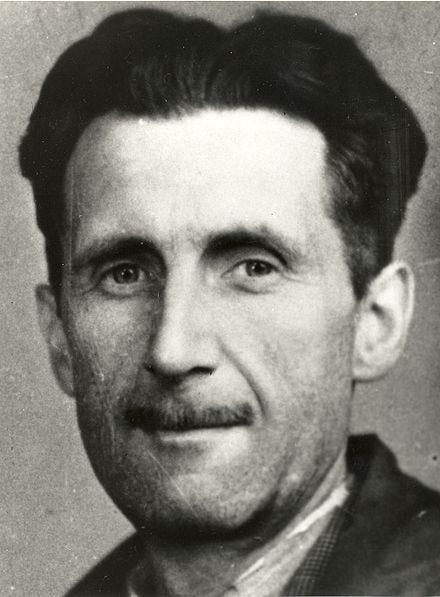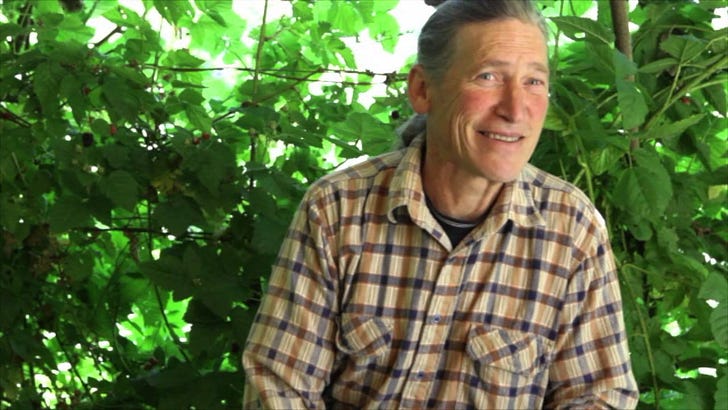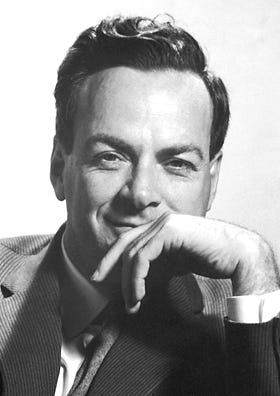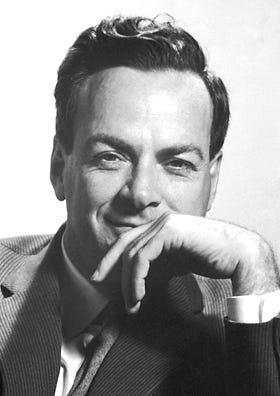Number Five
https://www.linkedin.com/posts/blackhistorystudies_samora-machel-patrice-lumumba-kwame-nkrumah-activity-7081233845383000064-ffpv/
29/11 week 12
Aaron
Lundi 20 novembre - Soirée Aaron Swartz : film The Internet's Own Boy
Une soirée spéciale Aaron Swartz avec la projection du film The Internet’s Own Boy. Le film raconte au travers du témoignage de ses proches, la vie et la mort du développeur et cybermilitant Aaron Swartz. Suivi d'un moment d'échange avec des intervenants spécialistes de la science ouverte.
conspiracy or just the way the world works?
German exports
https://x.com/Kasparov63/status/1728931802218389521?s=20
Buffett
Hedging their bets
Some economists and legal scholars (such as Henry Manne, Milton Friedman, Thomas Sowell, Daniel Fischel, and Frank H. Easterbrook) have argued that laws against insider trading should be repealed.
Tobin
A later “Keynesian” economist from Yale, James Tobin, who won the Nobel Prize in economics, proposed many years later a similar idea, which came to be called the Tobin Tax. The idea was to tax all foreign currency transactions to put a damper on speculation in that market.
https://www.pbs.org/newshour/economy/why-dont-we-tax-the-buying-and
ted singer Slavin
3.16 then 10.26
https://www.ted.com/talks/kevin_slavin_how_algorithms_shape_our_world
22/11
who dare call
The ruling classes constantly use lobbyists and soft power to sabotage tax increases, labor laws, and any other policy that increase the relative power of the poor.
5. America’s aid to Israel is not in America’s best interest, but is maintained through the power of AIPAC and other pro-Israel groups mainly supported by America’s Jewish community.
6. The Jews are behind Brexit as a plot to weaken Western Europe.
7. Climate scientists routinely exaggerate or massage their studies to get the results they want, or only publish studies that get the results they want, both because of their personal political leanings and because they know it is good for their field to constantly be discovering exciting things that their funders and their supporters among the public want to hear.
8. As above, except with replace climate science with “race science”, with “power posing“, with “the side effects of some drug that earns a pharma company a lot of money”, or your own favorite example.
9. When European trains get bombed, with leaflets distributed near the scene repeating jihadist propaganda, it’s actually a false flag by a rightist trying to discredit Islam.
10. When several prominent Trump critics receive bombs in the mail, it’s actually a “false flag operation” by a leftist trying to discredit Trumpism.
The CIA has fixed elections in dozens of foreign countries over the past seventy years or so.
A UFO cult has taken over the government and is using it as a base through which to carry out the designs of its extraterrestrial masters.
The Bilderberg Meeting secretly plots ways to create a one-world government.
week 11 The Economist
A more discreet but no less resolute aspirant is Edouard Philippe, formerly Mr Macron’s prime minister (pictured, with Mr Macron). Like Mr Darmanin, he comes originally from the conservative Republican party, and tops polls as the most popular French politician with 55% approval. That is 13 points ahead of Ms Le Pen in ninth place and 18 points ahead of Mr Darmanin in 18th, according to Ifop, a polling group. Mr Macron trails in 23rd place, on 32%. A new poll out on September 3rd suggests that Mr Philippe is the candidate best placed to appeal to both the centre and the conservative right in 2027, well ahead of Mr Darmanin.
Others too are said to be mulling over theirs, including Jean Castex, another ex-prime minister, Yaël Braun-Pivet, head of the National Assembly, or even Gabriel Attal, the 34-year-old education minister.
Vanity fair pilot
Bush denies
15/11 week 10
Dominic Cummings on human rights and secret services
https://x.com/Dominic2306/status/1724733926172655952?s=20
empathy
The AI responses also rated significantly higher on both quality and empathy. On average, ChatGPT's responses scored a 4 on quality and a 4.67 on empathy. In comparison, the physician responses scored a 3.33 on quality and 2.33 on empathy. In total, ChatGPT had 3.6 times more high-quality responses and 9.8 times more empathetic responses than physicians.
Bush and John Green
aubrey de grey https://www.ted.com/talks/aubrey_de_grey_a_roadmap_to_end_aging
week 11
Saudi flights (see below ctl F vanity)
the impact of TV is strongly challenged by social media
08/11
Can we trust them?
Primary sources Russia rock
You’re going to get the old stock-in-trade of never commenting on security matters
except where we want to, obviously
30 secs
part 2
Lie to me trailer from here surprise, dated men
Liespotting
Rumsfeld 90% here 6.57 Clinton
putin on ISIS
Sergeant B
Sandel warcrime
down to Aaron film and race
What are the real problems?
wordwatchers wordpress
putin ukraine
https://wordwatchers.wordpress.com/
Tracking the language of public figures
wordwatchers.wordpress.com
much more. a performative 51.15
let me tell you assure you
in fact
Dr. Pennebaker’s books include:
You can find out more about The SelfAuthoring Suite, which helps people write about the difficulties and uncertainties of the past (Past Authoring), present (Present Authoring) and Future (Future Authoring) at www.selfauthoring.com. NPR did a popular story on the suite: The Writing Assignment that Changes Lives
these websites:
2 Rules for Life Live Tour: www.jordanbpeterson.com/events
My new book: 12 Rules for Life: An Antidote to Chaos: jordanbpeterson.com/12-rules-for-life
My first book: Maps of Meaning: The Architecture of Belief: jordanbpeterson.com/maps-of-meaning
Dr Jordan B Peterson Website: jordanbpeterson.com/
Self Authoring Suite: selfauthoring.com/
Understand Myself personality test: understandmyself.com/
Podcast: jordanbpeterson.com/podcast/
Reading List: jordanbpeterson.com/great-books/
week 7 25.10
Greta
Demagogy
Take a complex issue and pretend it’s simple
Simplistic
Blah blah blah
https://en.wikipedia.org/wiki/Franska_Skolan
Greta Tintin Eleonora Ernman Thunberg
https://en.wikipedia.org/wiki/Malena_Ernman
2009 eurovision
Grandfather
https://en.wikipedia.org/wiki/Olof_Thunberg
Volcanoes? Lightning? geothermal?
Nuclear
talk to animals
harari banal
It concluded: “there is no contradiction between staunchly opposing the Israeli subjugation and occupation of Palestinians and unequivocally condemning brutal acts of violence against innocent civilians. In fact, every consistent leftist must hold both positions simultaneously.”
Harari cited a statement from 30 Harvard student groups issued the day after the attacks which said it held “the Israeli regime entirely responsible for all unfolding violence”. He said this suggested “the people that murdered babies don’t even have 1% responsibility, and 100% responsibility is on Israel’’.
He pointed to another statement by the Democratic Socialists of America on the day of the attacks which said: “Today’s events are a direct result of Israel’s apartheid regime.”
Giving the historical example of some US and European socialists supporting Stalin, he said: “This is not the first time the radical left, in pursuit of some fixed vision of justice, finds itself aligned with some very brutal movements and regimes.”
That approach may be founded in a “belief or fantasy that absolute justice is possible [where] one side is absolutely to blame for everything, including the crimes of the other side”.
“[But] reality is complex,” he said. “The same people can be victims and perpetrators at the same time. In most conflicts the blame for crimes and atrocities is not shared 100%/0% but somewhere in between. This is quite banal, but still people find it hard to accept this.”
https://www.theguardian.com/world/2023/oct/24/yuval-noah-harari-backs-critique-of-leftist-indifference-to-hamas-atrocities?utm_term=653892cf85d7a4268c72bf19168e16a1&utm_campaign=GuardianTodayUK&utm_source=esp&utm_medium=Email&CMP=GTUK_email
https://www.theguardian.com/world/2023/oct/09/they-are-in-my-house-kibbutz-survivors-tell-of-hamas-attack
more here
and aaron film here
U.S. university students race
and John Brown
Quick search for :
Musk Feynman Doughnut, Bezos Shellenberger Friedman Paxman Drucker Livingston Graham twitter Hitchens Gates Lessig Lessing El Salvador Taleb galloway (to add)
and TOEIC meta analysis non binary carbon brain paypal Panama Abbas fentanyl
How the world works- Blackrock Bridgewater and ABCD
binary non binary
https://x.com/SteveStuWill/status/1712317175120425074?s=20
11/10
Glenn Greenwald
https://x.com/zei_squirrel/status/1713619679707599113?s=20
He worked pro bono much of the time, and his cases included representing white supremacist Matthew Hale in Illinois, who, Greenwald believed, was wrongly imprisoned,[21] and the neo-nazi National Alliance.[22]
About his work in First Amendment speech cases, Greenwald told Rolling Stone magazine in 2013, "to me, it's a heroic attribute to be so committed to a principle that you apply it not when it's easy ... not when it supports your position, not when it protects people you like, but when it defends and protects people that you hate".[23]
Greenwald was described by Rachel Maddow during his period writing for Salon as "the American left’s most fearless political commentator."[22]
Daniel Ellsberg (April 7, 1931 – June 16, 2023) was an American political activist, economist, and United States military analyst. While employed by the RAND Corporation, he precipitated a national political controversy in 1971 when he released the Pentagon Papers, a top-secret Pentagon study of U.S. government decision-making in relation to the Vietnam War, to The New York Times, The Washington Post, and other newspapers.
Shellenberger
MICHAEL SHELLENBERGER, ALEX GUTENTAG, AND LEIGHTON WOODHOUSE
As Nato
Nat geo
Wesley Clark
aaron swartz
https://x.com/therealGavin1/status/1711879540002242728?s=20
sagan https://x.com/gunsnrosesgirl3/status/1711800767441473861?s=20
sagan on youtube
week 7
Deutch moral equivalency
Ny times
https://www.amazon.com/One-Billion-Americans-Thinking-Bigger-ebook/dp/B082ZR6827
https://en.wikipedia.org/wiki/Ruby_Ridge
There’s this guy- LHO
and interviews
John Brown
John Brown (May 9, 1800 – December 2, 1859) was a prominent leader in the American abolitionist movement in the decades preceding the Civil War. First reaching national prominence in the 1850s for his radical abolitionism and fighting in Bleeding Kansas, Brown was captured, tried, and executed by the Commonwealth of Virginia for a raid and incitement of a slave rebellion at Harpers Ferry in 1859.
An evangelical Christian of strong religious convictions, Brown was profoundly influenced by the Puritan faith of his upbringing.[1][2] He believed that he was "an instrument of God",[3] raised to strike the "death blow" to American slavery, a "sacred obligation".[4] Brown was the leading exponent of violence in the American abolitionist movement,[5] believing it was necessary to end American slavery after decades of peaceful efforts had failed.[6][7] Brown said that in working to free the enslaved, he was following Christian ethics, including the Golden Rule,[8] and the Declaration of Independence, which states that "all men are created equal".[9] He stated that in his view, these two principles "meant the same thing".[10]
Brown first gained national attention when he led anti-slavery volunteers and his sons during the Bleeding Kansas crisis of the late 1850s, a state-level civil war over whether Kansas would enter the Union as a slave state or a free state. He was dissatisfied with abolitionist pacifism, saying of pacifists, "These men are all talk. What we need is action – action!" In May 1856, Brown and his sons killed five supporters of slavery in the Pottawatomie massacre, a response to the sacking of Lawrence by pro-slavery forces. Brown then commanded anti-slavery forces at the Battle of Black Jack and the Battle of Osawatomie.
In October 1859, Brown led a raid on the federal armory at Harpers Ferry, Virginia (which became West Virginia), intending to start a slave liberation movement that would spread south; he had prepared a Provisional Constitution for the revised, slavery-free United States that he hoped to bring about. He seized the armory, but seven people were killed and ten or more were injured. Brown intended to arm slaves with weapons from the armory, but only a few slaves joined his revolt. Those of Brown's men who had not fled were killed or captured by local militia and U.S. Marines, the latter led by Robert E. Lee. Brown was tried for treason against the Commonwealth of Virginia, the murder of five men, and inciting a slave insurrection. He was found guilty of all charges and was hanged on December 2, 1859, the first person executed for treason in the history of the United States.[11][12]
Brown has been variously described as a heroic martyr and visionary, and as a madman and terrorist.[13][14][15]
https://en.wikipedia.org/wiki/John_Brown_(abolitionist)
John Brown’s body
The "Battle Hymn of the Republic", also known as "Mine Eyes Have Seen the Glory" or "Glory, Glory Hallelujah" outside of the United States, is a popular American patriotic song written by the abolitionist writer Julia Ward Howe during the American Civil War.
Howe adapted her song from the popular soldiers’ song "John Brown's Body" in November 1861,
Battle hymn of the republic
Updating priors A A Gill migrants Yann Le Cun
eyes glaze over
https://www.linguee.com/english-french/translation/my+eyes+glaze+over.html
collocation eye mind
wide broad
what your mind does
https://x.com/Rainmaker1973/status/1711379738445402131?s=20
NYT
Jobs and Musk hard
conspiracies
General Wesley Clark
more from Nat Geo
NATO leaders list
Thiel on monopolies
pro Palestine
https://x.com/coldxman/status/1714369396251009198?s=20
draft resolution UN
https://x.com/hbkismy/status/1714472105579098538?s=20
https://press.un.org/en/2023/sc15445.doc.htm
UN https://en.wikipedia.org/wiki/Israel_and_the_United_Nations
rocket
https://x.com/cj3636282847483/status/1714501914497360126?s=20
https://x.com/PGtwentytwo/status/1714492928943358361?s=20
Defence
https://x.com/abdulrdabboussi/status/1714496254221144266?s=20
Glenn Greenwald (ex intercept)
repost https://x.com/MirzaMahan/status/1714377238823469399?s=20
Scotland refugees
https://x.com/HumzaYousaf/status/1714372367592394969?s=20
punch the kid in the face
https://x.com/Dagnum_PI/status/1714508527467991173?s=20
optimize for power
Nordstream pipeline
“it would not be typical for us to engage” 22.50
23.15 to prevent involvement oversight
rigorous oversight (torture)
“did you read the piece? I’m familiar with it” 23.20
Abu Ghraib “Hersh throwing crap on a wall to see what sticks” 24.55
truth-different versions of a story 23.40
Norway’s denial let me tell you about Nicaragua
take a knee
Orfalea on CCA and Nathan Philips
running from the police democracy now
Stephanie Gibaud whistleblower
Democracy now! “on the right side of history”
https://en.wikipedia.org/wiki/Democracy_Now!
MLK
bbc size https://x.com/SaulStaniforth/status/1714365500925386845?s=20
missile
https://x.com/Jonathan_K_Cook/status/1714413113129251251?s=20
In their book Manufacturing Consent (1988), Edward S. Herman and Noam Chomsky analyze major U.S. media outlets, with an emphasis on The Times. They believe that a bias exists which is neither liberal nor conservative in nature, but aligned towards the interests of corporations, which own most of these media outlets and also provide the majority of their advertising revenue. The authors explain that this bias functions in all sorts of ways:[63]
"by selection of topics, by distribution of concerns, by emphasis and framing of issues, by filtering of information, by bounding of debate within certain limits. They determine, they select, they shape, they control, they restrict — in order to serve the interests of dominant, elite groups in the society."[64]
Chomsky and Herman also touch on the importance of this perceived bias in The Times:
"history is what appears in The New York Times archives; the place where people will go to find out what happened is The New York Times. Therefore it's extremely important if history is going to be shaped in an appropriate way, that certain things appear, certain things not appear, certain questions be asked, other questions be ignored, and that issues be framed in a particular fashion."[64]
https://en.wikipedia.org/wiki/List_of_The_New_York_Times_controversies
science Egan guy
everyone saw Zuck
https://x.com/NielsRogge/status/1711095584940028370?s=20
here he is
Yann LeCun on USA
https://x.com/ylecun/status/1711234786688483396?s=20
global warming lack of reflectivity
https://x.com/LeonSimons8/status/1686752199852879873?s=20
Death on the rock from 5.10 to 6.40
SAS civilians or terrorists?
It is a fatal blunder
someone had blundered
environment from here to 15.50
Tony Blair non binary
How to grow a city- Colony Ridge and Solano County
French history
textbook Jean Jaures,
Jules Ferry, L’abbé Pierre, Coluche,
politicians?
https://www.racialequitytools.org/resourcefiles/mcintosh.pdf
Kwame Nkrumah, Sekou Toure, Patrice Lumumba, Haile Selassie, Nnamdi Azikiwe, Amilcar Cabral, and Sylvanus Olympio of a continent free from their colonial past will definitely come to be.
Magnets
More is less to 3.21
More is more
River
Newton, Einstein, more quantum mechanics
he Dzhanibekov Effect or Tennis Racket Theorem wing nut to 2.14
X files
Angular momentum kinetic energy heat
Magnetic fields
Changing frequency over time[edit]
The rate of reversals in the Earth's magnetic field has varied widely over time. 72 million years ago (Ma), the field reversed 5 times in a million years. In a 4-million-year period centered on 54 Ma, there were 10 reversals; at around 42 Ma, 17 reversals took place in the span of 3 million years. In a period of 3 million years centering on 24 Ma, 13 reversals occurred. No fewer than 51 reversals occurred in a 12-million-year period, centering on 15 million years ago. Two reversals occurred during a span of 50,000 years. These eras of frequent reversals have been counterbalanced by a few "superchrons" – long periods when no reversals took place.[12]
Laithwaite
Float https://www.theguardian.com/science/2005/may/11/uknews
Entropy
Gyro precession
More gyros
7.10
Now they kill at a distance, from the air, assassinating without trial, secure in the knowledge that even the Guardian will approve of the illegal death of a monstrous man.
He’s this Rorschach test: People read into him what they see,” he said of Mr. McCandless. “Some people see an idiot, and some people see themselves. I’m the latter, for sure.”
Emmett Louis Till was born on July 25, 1941,
N Y times obituaries
The New York Times wrote after he died on Aug. 25, 1900. “His doctrines, however, were inspired by lofty aspirations, while the brilliancy of his thought and diction and the epigrammatic force of his writings commanded even the admiration of his most pronounced enemies, of which he had many.”
Those enemies included organized religion, especially Christianity, democracy, mediocrity, nationalism and women. Nietzsche railed against these and other adversaries on pages often densely packed with allusions, symbolism and language closer to romantic poetry than fusty metaphysics. Here is a sampling of his best-known writings:
Out of life’s school of war: What does not kill me, makes me stronger. — “Twilight of the Idols”
Whoever fights monsters should see to it that in the process he does not become a monster. And when you look long into an abyss, the abyss also looks into you. — “Beyond Good and Evil”
God is dead! God remains dead! And we have killed him! How shall we console our selves, the most murderous of all murderers? — “The Gay Science”
Unlike many of his philosophical predecessors, Nietzsche did not argue for a specific weltanschauung, or worldview, even though his writings may suggest one. He distrusted any thinker who proposed a comprehensive system for interpreting the world, and he often wrote in a manner that allowed for multiple interpretations.
A critical examination of his work in The New York Times in 1910 explained his approach:
Nietzsche is not a philosopher in the strict and technical sense of the word. He has no system or consistent body of thought professing to explain all aspects of the universe. He does not expressly deal with epistemology, ontology or, indeed, with metaphysics in general. He concentrates himself on the moral and aesthetic aspects of things, on their “values,” as is now the custom to say, owing to Nietzsche himself, who introduced the term; and he does so with a literary force and artistic power of presentation which makes his writings specially stimulating and is really the cause of his comparative popularity.
The name Huey P. Newton can elicit cries of “hero” or “criminal,” and the space in between reflects the distance in racial perspectives that the United States has failed to bridge since Newton helped found the Black Panthers 50 years ago, when the civil rights struggle was moving beyond the South to black neighborhoods in the North and West.
Newton advocated armed self-defense in black communities, where the organization also provided social services. They would patrol the streets, guns drawn, turning them on drug dealers and police officers alike.
Expressing a willingness to defend oneself with weapons was hardly revolutionary. When Frederick Douglass was asked in 1850 what he believed to be the best response to the Fugitive Slave Act, he replied, “A good revolver.” And Malcolm X advocated the same.
The Black Panthers, which never grew beyond a few thousand members, tried to combine socialism and black nationalism. Its charter called for full employment, decent housing, and the end of police brutality.
Unlike black separatists, the Panthers welcomed all races and found wealthy liberals willing to give them money. But the group’s social programs — like a breakfast program for schoolchildren and clothing and food drives — came undone partly by the corruption of the leadership.
Historians have detailed its mistreatment of female members, extortion, drug dealing, embezzlement and murder. At least 19 Panthers were killed in shootouts with one another, the authorities or other black revolutionaries.
While “by any means necessary” became a mantra of the group, J. Edgar Hoover’s F.B.I. also did whatever possible to target the Panthers. As many members went off to prison and the group dwindled, Newton became a despotic and paranoid drug addict, wielding dictatorial powers with a small coterie, and knocking off anyone in his way.
While the Panthers’ time of influence ended quickly, Newton never escaped the organization. In 1980, he earned a Ph.D. in philosophy. But he was shot to death on Aug. 22, 1989, in a crack cocaine deal gone bad. He was 47, a victim of the same streets he had once tried to make safe.
Gandhi, Nehru and Jinnah were divided on what should happen once the British left. Gandhi, more an idealist than a realist, wanted an undivided nation; he chose to remain out of government.
The British negotiated with the Muslim League, led by Jinnah, who believed that a separate state was the only way to protect the rights of Muslims, who were a minority; and the (mostly Hindu) Indian National Congress, led by Nehru, who grudgingly went along with the British decision to divide India on the basis of religion.
Cyril Radcliffe, who had never been to Asia, arrived in India 36 days before the date of the partition to draw the lines to split one of world’s largest and most ethnically diverse countries. On Aug. 9, he finished drawing the map, but the British viceroy, his superior, kept it a secret. He didn’t want the British to be blamed for any ensuing violence. But it prolonged the uncertainty for millions and very likely increased the loss of life to come.
Cartier-Bresson’s concept of the “decisive moment” — a split second that reveals the larger truth of a situation — shaped modern street photography and set the stage for hundreds of photojournalists to bring the world into living rooms through magazines such as Life and Look. In 1947, he and Robert Capa helped create the photographer-owned cooperative photo agency Magnum.
“Those whom the gods love die young,” the ancient Greek dramatist Menander wrote. In a 1962 speech he gave by the sea in Newport, R.I., Mr. Kennedy’s father — prophetically for the son — sounded a related theme:
“I really don’t know why it is that all of us are so committed to the sea, except I think it is because in addition to the fact that the sea changes and the light changes, and ships change, it is because we all came from the sea. And it is an interesting biological fact that all of us have, in our veins the exact same percentage of salt in our blood that exists in the ocean, and, therefore, we have salt in our blood, in our sweat, in our tears. We are tied to the ocean. And when we go back to the sea, whether it is to sail or to watch it, we are going back from whence we came.”
At 17, like many other Americans, Medgar Evers enlisted in the Army during World War II. A star athlete in high school, he participated in the Allied invasion of Europe, rising to the rank of sergeant before his honorable discharge in 1946.
But for Evers, who was born on this day in 1925 to an African-American farming family in Decatur, Miss., even the segregated Army was more welcoming than the Jim Crow South to which he returned after the war.
The racial injustice there rankled so much that he resolved to fight it, becoming the first field officer for the National Association for the Advancement of Colored People in Mississippi.
“Obviously not all white people are wealthy, and obviously many minorities are rich and powerful. Lots of white people are disadvantaged. But white privilege is something specific and different from the ordinary rising and falling of a free society. It’s the fact that simply by virtue of being a white person, of whatever socioeconomic status, you get the benefit of the doubt”.
Schools which teach pupils that “white privilege” is an uncontested fact are breaking the law, the women and equalities minister has said.
Addressing MPs during a Commons debate on Black History Month, Kemi Badenoch said the government does not want children being taught about “white privilege and their inherited racial guilt”.
“Any school which teaches these elements of political race theory as fact, or which promotes partisan political views such as defunding the police without offering a balanced treatment of opposing views, is breaking the law,” she said.
She added that schools have a statutory duty to remain politically impartial and should not openly support “the anti-capitalist Black Lives Matter group”.
https://www.racialequitytools.org/resourcefiles/mcintosh.pdf
https://www.ted.com/talks/kimberle_crenshaw_the_urgency_of_intersectionality/transcript#t-1113210
https://www.theatlantic.com/ideas/archive/2020/07/dehumanizing-condescension-white-fragility/614146/
In 1988, President Ronald Reagan signed into law the Civil Liberties Act of 1988 which apologized for the internment on behalf of the U.S. government and authorized a payment of $20,000 (equivalent to $43,000 in 2019) to each former internee who was still alive when the act was passed. The legislation admitted that government actions were based on "race prejudice, war hysteria, and a failure of political leadership."[31] The U.S. government eventually disbursed more than $1.6 billion (equivalent to $3,460,000,000 in 2019) in reparations to 82,219 Japanese Americans who had been interned.[30][32]
Black history or world history?
https://www.racialequitytools.org/resourcefiles/mcintosh.pdf
https://www.biography.com/tag/black-history
Who do we choose to remember? Millionaires, sportsmen, entertainers, politicians?
MAY 3, 2020
sed to work for Gary Killdall, and I worked with some of his people from DR. I was Gary's personal electronic engineer, building his custom embedded systems as he was designing the earliest smartphone back in 1987... Called the Intelliphone, people confusingly called it a pbx. I was the hardware designer. What I designed was both the handset of the smartphone, AND the central office switch gear (the switch gear is similar to a PBX, but is was just the support infrastructure for the actual invention, the button-free smartphone, years before apple even had the ipod... Gary had elimited buttons in favor of the "application defined user interface"... rolls right off the tongue... His design sketch looks just like a modern smartphone, only no switches or buttons at all. Prototypes were larger of course, we had to get the design working before the electronics would eventually be crunched into the small package needed to make a phone, we were 90% there when I left the project to go work for IBM...
But the story of Gary out flying the plane when IBM visited isn't actually what happened. 90% of the work Gary did at the time was for IBM. He met with IBM dozens of times, and sold them dozens of operating systems and other software. IBM was Gary's main customer. While it is possible that Gary missed a meeting, why would missing one meeting out of literally thousands he didn't miss doesn't make such a difference? He met with IBM constantly in those years, and he had people on staff who's job it was to manage that. The OS for the PC was not the only business he had with IBM at the time, far from it.
And you missed the whole PC AT story. When you booted the original IBM AT, it said on the screen "IBM Multi-user System". What was the IBM Multi-user System? Why the IBM AT was NOT designed to run msdos, it was designed to run a new multiuser OS. The AT would ship with 16 port serial cards, and Wyse has a PC emulation built into their dumb terminals that allowed a single AT to be used as computers for a whole room of people. It was a multitasking operating system that would have made a really large difference in the computing landscape. What happened? The sad story there is that Intel was having problems with the 286 chips. The prototype chips that IBM was using for development worked fine, but the yields were low for the chips, so Intel had to redesign the CPU die to improve yields for the production runs for the AT. When IBM finally got the redesigned chip, that had been testing their systems using the prototype chips, and didn't spot a problem the new chip created until the warehouse was full of assembled systems. It turns out the new 286 chips had an issue with running protected mode instructions, so in an 11th hour decision, IBM execs decided to open all of the boxes, remove the OS kit, and replace it with a dos disk... In one fatal moment, a spec change caused the new OS to be temporarily pulled. The OS did get used, but it was only used in IBM brand grocery store scanner registers, it never found use as the major advance in dos technology that it was. Eventually DR named the new OS Concurrent Dos and put it up for sale next to DR Dos, but as sad stories goes, the pretty blue box it shipped in probably didn't find very many desktops to grace.
And no story about this would be complete without talking about Microsoft Windows... When Windows came out, it was not much more than a buggy toy OS. However a small number of people discovered that DR DOS running under Windows was a winning combination because DR Dos had a memory manager that made windows much better on the DR Dos platform. Windows 3.1 was shipped with code to detect what OS it was running on, and to create a fake blue screen if the OS was DR Dos.
Gary was a generous educator, Bill was a shrewd business man. Gary's instinct was to share information, and make his fortune from his genius. Bill made his fortune by making the right decisions at the right time. Great engineer VS great business man. Had my own experiences with that, engineers don't make the best business men, too honest and idealistic. Gary died a wealthy man, his house in Austin had a glass garage housing his collection of famous race cars lovingly restored by the original crew... His house in Pebble Beach is where he kept is Lamborghini collection... Big collection, big garage. So yeah he stubbed his toe with the events you mention, but he was well on his way to being a decade early with truly groundbreaking smartphone tech...
But I gloss over so many details... would love to have a conversation about Gary's /actual/ mental state and activity just before his death. He did have burn scars from the unfortunate events you discuss, but his state of mind and what he was doing at the time was so much more complex than the stories out there, and if not for his death, the next chapter would have re-written tech history.
Show less
Ielts
Example: The charts below show the reasons why people travel to work by bicycle or by car. Summarise the information by selecting and reporting the main features, and make comparisons where relevant.
https://www.ieltsessentials.com/blog/2017/12/18/common-academic-writing-task-1-questions
Speaking
A new law you would implement where you live to make it a better place.
You should say:
what law it would be
will it be easy to introduce such a new law
Roger Penrose
University of Oxford, UK
“for the discovery that black hole formation is a robust prediction of the general theory of relativity”
and the other half jointly to
Reinhard Genzel
Max Planck Institute for Extraterrestrial Physics, Garching, Germany and University of California, Berkeley, USA
and
Andrea Ghez
University of California, Los Angeles, USA
“for the discovery of a supermassive compact object at the centre of our galaxy”
9.11
Michael Moore, Osama, flights
https://en.wikipedia.org/wiki/Fahrenheit_9/11_controversies#Saudi_flights
https://www.nytimes.com/2018/07/11/sports/world-cup/harry-kane-england.html
https://stuartwiffin.wordpress.com/
Corruption
Two books examine the global role of corruption
It is a slippery problem, for both authorities and authors
Oct 10th 2020
Kleptopia: How Dirty Money is Conquering the World. By Tom Burgis. Harper; 464 pages; $28.99. William Collins; £20.
On Corruption in America. By Sarah Chayes. Knopf; 432 pages; $28.95. Published in Britain as "Everybody Knows"; C. Hurst & Co; £20.
Afew years ago Francis Fukuyama, a political scientist, described corruption as “the defining issue of the 21st century”. Whereas the 20th century saw ideological battles between democratic, fascist and communist regimes, he argued, the chief divide among today’s governments is whether they primarily serve the interests of their people (as in Denmark or Canada) or of their leaders (as in Zimbabwe or Russia). The worst are “kleptocracies”, states whose very purpose is to enable elites to plunder resources, in which bribes, favours and violence are the methods of rule.
In an era when prime ministers and presidents from Malaysia to Ukraine amass billions in cash, and Western banks that handle the money turn a blind eye to its provenance, Mr Fukuyama’s thesis commands widespread assent. Yet the lineaments of corruption can be hard to define, not least because corrupt people tend to be good at constructing excuses for themselves. After all, isn’t government supposed to encourage commerce? Shouldn’t politicians and businessmen talk? Corruption on a grand scale is fantastically complicated and tough to write about, not least (in Britain especially) because of libel law. Two new books take up the challenge.
“Kleptopia” does the job brilliantly. Tom Burgis of the Financial Times spins his tale of global corruption from the ground up. He begins with a hero straight out of a John le Carré novel. Nigel Wilkins is an ageing, introverted economist with an obstreperous streak. He takes a job as a compliance officer at the London office of bsi, a Swiss bank, just as the global financial crisis strikes. He soon suspects that bsi is laundering money for a long list of the international high and mighty, and surreptitiously copies reams of documents which he tries to bring to the attention of the Financial Services Authority. It ignores him.
Mr Burgis also follows the story of enrc, a metal and minerals outfit that listed in London in 2007. Partly owned by the government of Kazakhstan, the firm was founded by three Central Asians who bought ex-Soviet factories at discount prices, quickly becoming billionaires. The listing brings an injection of cash from Western investors; they also expand into Africa, taking in more money in Zambia and Congo. A parallel storyline concerns Mukhtar Ablyazov, a former Kazakh minister and banking tycoon turned opposition leader. In this telling, after Mr Ablyazov falls out with the regime, he, his family and his staff face lawsuits, surveillance, false arrest and torture. In 2009 he fled from Kazakhstan, where he has been convicted in absentia of murder and accused of fraud and embezzlement, all of which he denies. (He also left Britain after a judge ordered him jailed for concealing assets; he has just been granted political asylum in France.)
“Kleptopia” is wonderfully if grimly entertaining, replete with tales of Zimbabwean thugs, late Soviet gangsters and kgb officers-turned-entrepreneurs, as well as a Romeo-and-Juliet romance between the children of rival oligarchs. Mr Burgis’s depiction of the interlocking worlds of post-Soviet business and politics captures the way corruption binds together economic and political power. He meticulously demonstrates how, once overseas money enters Britain (attracted by the protections of its legal system), the associated power struggles and skulduggery follow.
When Western governments and media try to take on Kazakh wrongdoing, they are misled by what Mr Burgis terms a “presumption of regularity”. European courts treat international arrest warrants from Kazakhstan as if they emanated from a genuine national legal system, rather than the ruling clique. Worst of all, money-hungry Western banks, lawyers, public-relations firms and security consultants exacerbate the sleaze, developing a sort of international kleptocracy-service system. As the web widens, readers unfamiliar with Kazakh or Russian politics will start to come across names they may recognise, such as Felix Sater and Donald Trump.
Sarah Chayes, too, is intrigued by wide webs of corruption. Her interest in the issue began in the 2000s, when she worked for an ngo in Afghanistan. As she wrote in her excellent previous book, “Thieves of State” (published in 2015), she soon realised that resentment of government corruption was the main factor driving Afghans towards the Taliban—and that American intervention was making corruption worse.
The hydra rears its heads
Her new book ranges more widely—too widely. She begins with the decision by America’s Supreme Court in 2016 that voided the influence-peddling conviction of Bob McDonnell, a former governor of Virginia. He and his wife had accepted lavish gifts from a vitamin-supplement manufacturer, and asked the state health authority to consider recommending its products. But because no explicit bribe was offered in exchange for an official act, the court ruled unanimously that a guilty verdict could criminalise the normal conduct of democratic politics. Prosecutors say this standard has made it almost impossible to convict American politicians of corruption.
Ms Chayes tries to set this event in historical context, but she overdoes it. She starts by looking at the vexed origins of money itself, going on to tackle fractional reserve banking, credit bubbles, graft in the Gilded Age and the labour movement. But, lacking a framework to distinguish legitimate links between commerce and the state from the crooked kind, the book soon drifts into lazy condemnations of capitalism. To describe the global mechanism of corruption, Ms Chayes uses the metaphor of the hydra—an image that has been common in polemics against international finance since the 19th century. Some passages have the tinge of conspiracy theories.
In a way, her book illustrates the risk identified by the Supreme Court: to the oversensitive, every handshake can seem suspect. Yet Mr Burgis, too, ends his analysis with a description of a web of money-laundering, legal harassment, propaganda and violence that enmeshes the world. America and Britain, he thinks, are ever-more like Ukraine, Russia and Kazakhstan: “Like a parasite altering a cell it invades, so kleptocratic power transforms its host.” ■
Readers’ favourites
UNITED STATES
The race for the White House is a little closer than it looks
LEADERS
The pandemic has caused the world’s economies to diverge
LEADERS
The real lessons from Sweden’s approach to covid-19
This article appeared in the Books & arts section of the print edition under the headline "The way of the world"
Trafigura
https://en.wikipedia.org/wiki/2011_British_privacy_injunctions_controversy
https://www.bbc.com/news/world-africa-10735255
implicit bias training
Cambridge
Benin
Video
Mindset
Sandberg
Wire
https://mediabiasfactcheck.com/21st-century-wire/
https://www.zerohedge.com/markets/here-full-explanation-behind-oils-unprecedented-negative-price
https://www.zerohedge.com/energy/complete-history-oil-markets
https://www.zerohedge.com/energy/texas-or-canada-where-will-oil-hit-0-first
https://www.zerohedge.com/news/2019-04-03/greeks-crude-oil-market
Coleman Hughes
Defining non defining
That here has to be which because the clause is not identifying/specifying/ defining
it is non- defining ie giving extra information, so which cannot be replaced by that.
see here for a good explanation but some clunky examples
https://dictionary.cambridge.org/grammar/british-grammar/relative-clauses-defining-and-non-defining
Better examples here
https://www.ef.com/wwen/english-resources/english-grammar/non-defining-relative-clauses/
and here
https://www.perfect-english-grammar.com/relative-clauses.html
Half a house .45
3.10- 5.25
Child support and benefits, fairness, world population and the nasty party
Capitol riots skynews interview- Herman Van Rompuy
the Apple ad
Musk and the climate
also Aaronson
Websites- simplicity or complexity?
Artists- Picasso and Ted Hughes
Middle class and middle income
Anecdotes from the Elon Musk biography (first one)
Astral Codex Ten and Slate Star Codex
Cesar Hidalgo, Edward Tufte and data visualisation
Useful terms in economics and social science
How the world works
abcd
BlackRock, Vanguard and State Street
Light- wave, particle, photon, quanta, quark?
Scaling People by Claire Hughes Johnson
Still, always, ever, already,yet
Yann LeCun video
https://x.com/ylecun/status/1708159037425209399?s=20
AA Gill
He remained a committed supporter of UNHCR campaigns, including speaking at The First Global Forum on Statelessness in the Hague, and travelled extensively with UNHCR to Jordan, Lebanon, Bangladesh, Mexico, DR Congo, Italy and across Europe.*
He wrote searing, powerfully moving pieces on each of his journeys, published in the Sunday Times Magazine.
https://www.unhcr.org/media/aa-gill-balkans
AA Gill Lampedusa
https://x.com/StevePeers/status/807683176575471616?s=20
https://x.com/camillalong/status/939897479650299904?s=20
Towton
https://x.com/camillalong/status/939897822643703808?s=20
Lampedusa
https://x.com/camillalong/status/939905762092093440?s=20
Braverman the Rwanda dream
https://x.com/ByDonkeys/status/1708165280512245959?s=20
Italian waters German NGOs
AA Gill radio ahead
Compare and contrast Apple ads
SEP 26 •
Bullying on fb and other annoying posts
SEP 26 •
Copying Art- plagiarism or genius?
SEP 25 •
SEP 22 •
SEP 20 •
SEP 19 •
Elon Musk, Starlink, Ukraine and Chaos theory
SEP 18 •
SEP 18 •
SEP 18 •
SEP 18 •
The kiss- compare and contrast
SEP 15 •
Harassment in the medical profession
SEP 14 •
SEP 14 •
SEP 12 •
SEP 12 •
or is it? https://www.linguee.fr/francais-anglais/search?source=anglais&query=snub
SEP 12 •
Gladwell and the Mountain Climber
SEP 11 •
SEP 11 •
Feynman and the Challenger explosion
SEP 8 •
Why don’t Americans want Joe Biden?
https://twitter.com/NateSilver538/status/1699761444915396810?s=20
SEP 7 •
SEP 4 •
Milton Friedman's thermostat and Goodman's target
SEP 1 •
We are grateful to The Washington Post, The New York Times, Time magazine and other great publications whose directors have attended our meetings and respected their promises of discretion for almost forty years. … It would have been impossible for us to develop our plan for the world if we had been subject to the bright lights of publicity during those years. But, the world is now much more sophisticated and prepared to march towards a world government. The supranational sovereignty of an intellectual elite and world bankers is surely preferable to the national auto-determination practiced in past centuries.
Purported remarks at a Bilderberg Group meeting in Baden-Baden, Germany in June 1991, as quoted in Programming, Pitfalls and Puppy-Dog Tales (1993) by Gyeorgos C. Hatonn, p. 65 and various nationalist tracts. The ultimate source for the quotation (i.e. the person who passed it on to the public) is never identified.
Honest disagreement about methods may explain irreproducible results
AUGUST 2023
Jeremy Paxman- journalist extraordinaire
AUG 28 •
AUG 24 •
Hearing voices and meta analysis
AUG 22 •
AUG 21 •
Here’s the cartoon by Emma. https://english.emmaclit.com/2017/05/20/you-shouldve-asked/ and here…
AUG 21 •
AUG 18 •
The best bits of the Richard Hamming speech
AUG 17 •
Electric cars and weight per kilometre
Not sure about this- is this the right metric?
AUG 17 •
AUG 14 •
AUG 14 •
More Y Combinator- “Culture eats strategy for breakfast” Peter Drucker
AUG 11 •
Founders at work- Jessica Livingston
AUG 11 •
fear of flying and fame- Paul Graham
AUG 10 •
https://twitter.com/business/status/1689513923463008256?s=20
“Marxist” Joe Biden More on Hunter Biden Tom Holland on…
AUG 10 •
AUG 9 •
Mother Teresa by Christopher Hitchens
AUG 8 •
Why is Elon Musk building rockets?
AUG 8 •
AUG 8 •
Why is Y Combinator so successful?
see also culture eats strategy for breakfast
https://twitter.com/paulg/status/1684911651076628480?s=20…
AUG 7 •
Bill Gates, Steve Jobs, Elon Musk- the dark side
AUG 7 •
AUG 6 •
Nigel Lawson and climate sceptics
AUG 6 •
By Helen Thompson in the Sunday Times
AUG 6 •
From Blake Ross on security and tradeoffs
AUG 4 •
AUG 2 •
Critical theory, post- modernist structuralism and deconstruction
AUG 2 •
Douglas Murray on Ann Clwyd and Iraq
AUG 1 •
AUG 1 •
JULY 2023
Elizabeth Stokoe and conversation analysis
JUL 31 •
Bill Gates on Alzheimer's, David Eagleman on the Nun study
JUL 29 •
JUL 29 •
Non Binary- negotiating with terrorists
JUL 20 •
Larry Lessig on Elon Musk and carbon pricing
JUL 18 •
Truth and Power By Larry Lessig
JUL 18 •
Sex education is a very difficult subject. Let’s start with how to have sex and not get pregnant…
JUL 18 •
JUL 17 •
JUL 17 •
Possessive adjectives and possessive pronouns
JUL 16 •
JUL 16 •
Kieran Egan-A Non Binary Approach to Education
JUL 16 •
30 secs from here Michael Moore
Vanity fair
On the morning of September 13, 2001, a 49-year-old private eye named Dan Grossi got an unexpected call from the Tampa Police Department. Grossi had worked with the Tampa force for 20 years before retiring, and it was not particularly unusual for the police to recommend former officers for special security jobs. But Grossi’s new assignment was very much out of the ordinary.
Two days earlier, terrorists had hijacked four airliners and carried out the worst atrocity in American history. Fifteen of the 19 hijackers had been from Saudi Arabia. “The police had been giving Saudi students protection since September 11,” Grossi recalls. “They asked if I was interested in escorting these students from Tampa to Lexington, Kentucky.”
Grossi was told to go to the airport, where a small charter jet would be available to take him and the Saudis on their flight. He was dubious about the prospects of accomplishing his task. “Quite frankly, I knew that everything was grounded,” he says. “I never thought this was going to happen.” Even so, Grossi, who’d been asked to bring a colleague, phoned Mañuel Perez, a former F.B.I. agent, to put him on alert. Perez was equally unconvinced. “I said, ‘Forget about it,’” Perez recalls. “‘Nobody is flying today.’”
The two men had good reason to be skeptical. Within minutes of the attacks on 9/11, the Federal Aviation Administration had sent out a special notification called a NOTAM—a notice to airmen—ordering every airborne plane in the United States to land at the nearest airport as soon as possible, and prohibiting planes on the ground from taking off. For the next two days, commercial and private aviation throughout the entire United States ceased. Former vice president Al Gore was stranded in Austria when his flight to the U.S. was canceled. Bill Clinton postponed travel as well. Major-league baseball games were called off. For the first time in a century, American skies were nearly as empty as they had been when the Wright brothers first flew at Kitty Hawk.
Nevertheless, at 1:30 or 2 p.m. on the 13th, Dan Grossi received his phone call. He was told the Saudis would be delivered to Raytheon Airport Services, a private hangar at Tampa International Airport.
When he and Perez met at the terminal, a woman laughed at Grossi for even thinking he would be flying that day. Commercial flights had slowly begun to resume, but at 10:57 A.M. the F.A.A. had issued another notice to airmen, a reminder that private aviation was still prohibited. Three private planes violated the ban that day, and in each case a pair of jet fighters quickly forced the aircraft down. As far as private planes were concerned, America was still grounded. “I was told it would take White House approval,” says Grossi.
Then one of the pilots arrived. “Here’s your plane,” he told Grossi. “Whenever you’re ready to go.”
Unbeknownst to Dan Grossi, Prince Bandar bin Sultan, the 52-year-old Saudi Arabian ambassador to the United States, had been in Washington orchestrating the exodus of about 140 Saudis scattered throughout the country who were members of, or close to, two enormous families. One was the House of Saud, the family that rules the Royal Kingdom of Saudi Arabia and that, owing to its vast oil reserves, is the richest family in the world. The other was the ruling family’s friends and allies the bin Ladens, who, in addition to owning a multi-billion-dollar construction conglomerate, had spawned the notorious terrorist Osama bin Laden. Thanks to the bin Ladens’ extremely close relationship with the House of Saud, the family’s huge construction company, the Saudi Binladin Group, had won contracts to restore the holy mosques in Mecca and Medina, two of the greatest icons in all of Islam.
The repatriation of the Saudis is far more than just a case of wealthy Arabs being granted special status by the White House under extraordinary conditions. For one thing, in the two years since September 11, a number of highly placed Saudis, including both bin Ladens and members of the royal family, have come under fire for their alleged roles in financing terrorism. Four thousand relatives of the victims of 9/11 have filed a $1 trillion civil suit in Washington, D.C., charging the House of Saud, the bin Ladens, and hundreds of others with wrongful death, conspiracy, and racketeering for having contributed tens of millions of dollars to charities that were al-Qaeda fronts. Newsweek has reported that Prince Bandar’s wife, perhaps unwittingly, sent thousands of dollars to charities that ended up funding the hijackers. In addition, F.B.I. documents marked “Secret” indicate that two members of the bin Laden family, which has repeatedly distanced itself from Osama bin Laden, were under investigation by the bureau for suspected associations with an Islamic charity designated as a terrorist support group.
Most recently, in July, the administration asked Congress to withhold 28 pages of its official report on 9/11. According to news reports, the classified section charges that there were ties between the hijackers and two Saudis, Omar al-Bayoumi and Osama Bassnan, who had financial relationships with members of the Saudi government. Saudi officials deny that their government was in any way linked to the attacks. The Saudis have asked that the pages be declassified so they can refute them, but President Bush has refused.
Terrorism experts say that the Saudis who were in the U.S. immediately after the attacks might have been able to shed light on the structure of al-Qaeda and to provide valuable leads for investigating 9/11. And yet, according to sources who participated in the repatriation, they left the U.S. without even being interviewed by the F.B.I.
Officially, the White House declined to comment, and a source inside asserted that the flights never took place. However, former high-level Bush-administration officials have told Vanity Fair otherwise.
How was it possible that, just as President Bush declared a no-holds-barred global war on terror that would send hundreds of thousands of U.S. troops to Afghanistan and Iraq, and just as Osama bin Laden became Public Enemy No. 1 and the target of a worldwide manhunt, the White House would expedite the departure of so many potential witnesses, including two dozen relatives of the man behind the attack itself?
The incident is particularly important in light of the special relationship the Saudis have long had with the United States—and the Bush family in particular. For decades, Saudi Arabia has been one of America’s two most powerful allies in the Middle East, not to mention an enormous source of oil. The Bush family and the House of Saud, the two most powerful dynasties in the world, have had close personal, business, and political ties for more than 20 years. In the 80s, when the elder Bush was vice president, he and Prince Bandar became personal friends. Together, they lobbied through massive U.S. arms sales to the Saudis and participated in critical foreign-policy ventures. In the 1991 Gulf War, the Saudis and the elder Bush were allies.
In the private sector, the Saudis supported Harken Energy, a struggling oil company in which George W. Bush was an investor. Most recently, former president George H. W. Bush and former secretary of state James A. Baker III, his longtime ally, have appeared before Saudis at fund-raisers for the Carlyle Group, arguably the biggest private equity firm in the world. Today, former president Bush continues to serve as a senior adviser to the firm, whose investors allegedly include a Saudi accused of ties to terrorist support groups.
“It’s always been very clear that there are deep ties between the Bush family and the Saudis,” says Charles Lewis, head of the Center for Public Integrity, a Washington, D.C., foundation that examines issues of ethics in government. “It creates a credibility problem. When it comes to the war on terror, a lot of people have to be wondering why we are concerned about some countries and not others. Why does Saudi Arabia get a pass?”
On a humid July day, Nail al-Jubeir, director of information for Saudi Arabia, sits in his office in the Saudi Embassy in Washington and recalls the morning of September 11, 2001. Like many people, al-Jubeir was on his way to work that morning, and as soon as he heard that a second plane had crashed into the south tower of the World Trade Center, he realized that terrorists had attacked.
Over the next few days, the Saudi Embassy was in turmoil. Innocent Saudi citizens in the United States were arrested. “That created an issue,” al-Jubeir says. “How do we protect the Saudis who are being rounded up? Our concern was the safety of Saudis here in the United States.”
Initially, Prince Bandar had hoped that early reports of the Saudi role in the attacks had been exaggerated—after all, al-Qaeda terrorist operatives were known to use false passports. But at 10 p.m. on the evening of September 12, about 36 hours after the attacks, a high-ranking C.I.A. official—according to Newsweek, it was probably C.I.A. director George Tenet—phoned Bandar and gave him the bad news: 15 of the 19 hijackers were Saudis.
After two decades as ambassador, Bandar had long been the most recognizable figure from his country in America. Widely known as “the Arab Gatsby,” with his trimmed goatee and tailored double-breasted suits, Bandar embodied the contradictions of the modern, jet-setting, Western-leaning member of the royal House of Saud. He knew that public relations had never been more crucial for the Saudis.
With the help of P.R. giant Burson-Marsteller, Bandar launched an international media blitz. He placed ads in newspapers across the country condemning the attacks and disassociating Saudi Arabia from them. On TV, he hammered home the same points: Saudi Arabia would support America in its fight against terrorism. The hijackers could not even be considered real Saudis, he asserted, because “we in the kingdom, the government and the people of Saudi Arabia, refuse to have any person affiliated with terrorism to be connected to our country.” That included Osama bin Laden, Bandar said, since the government had taken away his passport in response to his terrorist activities.
Osama bin Laden, however, was a Saudi, and not just any Saudi. Bandar knew the members of his prominent family well. “They’re really lovely human beings,” he told CNN. “[Osama] is the only one.... I met him only once. The rest of them are well-educated, successful businessmen, involved in a lot of charities. It is—it is tragic.... He’s caused them a lot of pain.”
The bin Laden family neatly exemplifies the dilemma the United States faces in its relations with Saudi Arabia. On the one hand, the bin Ladens are products of Wahhabi fundamentalism, a puritanical Islamic sect that has helped make Saudi Arabia a fertile breeding ground for terrorists. Contrary to popular belief, Osama was not the only member of the immense bin Laden family—there are more than 50 siblings—with ties to militant Islamic fundamentalists. As early as 1979, Mahrous bin Laden, an older half-brother of Osama’s, had befriended members of the militant Muslim Brotherhood and had played, perhaps unwittingly, a key role in the Mecca Affair, a violent uprising against the House of Saud in 1979 which resulted in more than 100 deaths.
Later, the Saudi Binladin Group became part of what was known as “the Golden Chain,” a list of wealthy Saudis who nurtured al-Qaeda at its inception in the late 80s, some time before it was perceived as an international threat.
On the other hand, the bin Ladens years ago had disassociated themselves from Osama and his horrific terrorist acts. These were the Saudi billionaires who banked with Citigroup, invested with Goldman Sachs and Merrill Lynch, and did business with such icons of Western culture as Disney, Snapple, and Porsche.
The young bin Ladens and members of the House of Saud who were living in the United States in September 2001 were mostly students attending high school or college and young professionals. Several bin Ladens had attended Tufts University, near Boston. Sana bin Laden had graduated from Wheelock College, in Boston. Abdullah bin Laden, a younger brother of Osama’s, was a 1994 graduate of Harvard Law School and had offices in Cambridge, Massachusetts. Two bin Ladens—Mohammed and Nawaf—owned units in the Flagship Wharf condominium complex on Boston Harbor.
Wafah (sometimes spelled Waffa) Binladin, a 26-year-old graduate of Columbia Law School, lived in a $6,000-a-month loft in New York’s SoHo and was considering pursuing a singing career. Partial to hip Manhattan nightspots and restaurants such as Lotus, the Mercer Kitchen, and Pravda, she happened to be in London on September 11 and did not return to the United States. Kameron bin Laden, in his 30s and a cousin of Osama’s, also frequented Manhattan nightclubs and, less than two months after 9/11, reportedly spent nearly $30,000 in a single day at Prada’s Fifth Avenue boutique. He elected to stay in the United States. But half-brother Khalil Binladin decided to go back to Jidda. Khalil, who has a Brazilian wife, had been appointed Brazil’s honorary consul in Jidda, though he also owns a sprawling 20-acre estate in Winter Garden, Florida, near Orlando.
As for the Saudi royal family, its members were scattered across the United States. Some had gone to Lexington, Kentucky, for the September horse auctions, which were suspended on September 11 but resumed the next day. Saudi prince Ahmed Salman, a regular in Lexington, stayed and bought two horses for $1.2 million on September 12. “I am a businessman,” Salman said. “I have nothing to do with the other stuff. I feel as badly as any American.”
Others felt more personally threatened. Shortly after the attacks, one of Osama bin Laden’s brothers frantically called the Saudi Embassy in Washington seeking protection. He was given a room at the Watergate Hotel and told not to open the door. King Fahd, the aging and infirm Saudi monarch, sent a message to his emissaries in Washington: “Take measures to protect the innocent.”
If any foreign diplomat had the clout to pull strings at the White House in the midst of a grave national-security crisis, it was Prince Bandar. The Saudis were famously adept at currying favor with U.S. administrations—they have contributed to every presidential library built in the past 30 years—but no one did it better than Bandar. He had played racquetball with Colin Powell years earlier. He had run covert operations for the late C.I.A. director Bill Casey that were kept secret even from President Ronald Reagan. He was the man who had stashed away dozens of locked attaché cases that held some of the deepest secrets in the intelligence world.
But it was his intimate friendship with the Bushes that truly set him apart. When George H. W. Bush became vice president in 1981, Bandar saw him for what he was—a Texas oilman who had enormous respect for the Saudis’ vast oil reserves and was not a knee-jerk defender of Israel. The two began to have lunch regularly, and in the mid-80s, at a time when the press was assailing Bush as a “wimp,” Bandar staged an extravagant soirée in his honor.
After Bush became president in 1989, Bandar acted as an envoy between him and Saddam Hussein, assuring Bush that the U.S. could count on Saddam to provide a bulwark against extremist Islamic fundamentalism. In August 1990, after Iraq invaded Kuwait, Bandar joined Bush at the president’s family retreat in Kennebunk-port, Maine, where the two men discussed going to war together against Saddam. A few months later, at Bush’s urging, Bandar persuaded King Fahd of Saudi Arabia to join Bush as an ally in the Gulf War. In 1992, Bandar took Bush’s defeat by Bill Clinton as a personal loss. And after the 2000 election, Bandar flew off on his Airbus jet to go hunting in Spain with former president Bush, General Norman Schwarzkopf, and former national-security adviser Brent Scowcroft.
Now, in the wake of 9/11, the Saudi-U.S. relationship was being tested, and Bandar went into overdrive. For the 48 hours after the attacks, he stayed in constant contact with Secretary of State Colin Powell and National-Security Adviser Condoleezza Rice.
Before 9/11, coincidentally, President Bush had invited Bandar to come to the White House on September 13, 2001, to discuss the Middle East peace process. The meeting went ahead as scheduled, but in the wake of the terrorist attacks the political landscape had changed dramatically. According to The New Yorker, Bush told Bandar at the meeting that the U.S. would hand over to the Saudis any captured al-Qaeda operative who could not be made to cooperate, implying that the Saudis could use any means necessary to get suspects to talk. Nail al-Jubeir says he does not know if Prince Bandar and the president discussed getting the bin Ladens and other Saudis back to Saudi Arabia.
But the job began to get done all the same. In Tampa, on the same day that Bandar and Bush were meeting in the White House, private investigator Dan Grossi says, he and Mañuel Perez waited until three Saudi men, all apparently in their early 20s, arrived. Then the pilot took Grossi, Perez, and the Saudis to a well-appointed eight-passenger Learjet. They departed for Lexington, Kentucky, at about 4:30 p.m.
Grossi did not get the names of the students he was escorting. “It happened so fast,” he says. “I just knew they were Saudis. They were well connected. One of them told me his father or his uncle was good friends with George Bush Sr.”
Both the Tampa Tribune and sources familiar with the flight say that one of the young men was either the son or nephew of Prince Sultan bin Abdul Aziz, the Saudi minister of defense and Prince Bandar’s father. Another passenger was said to have been the son of a Saudi army commander. But the Saudi Embassy declined to confirm their identities. The Tribune reported that the request to repatriate the Saudis had been made by a different Saudi royal, Prince Sultan bin Fahad.
According to Grossi, about an hour and 45 minutes after takeoff they landed at Blue Grass Airport in Lexington. There the Saudis were greeted by an American who took custody of them and helped them with their baggage. On the tarmac was a Boeing 747 with Arabic writing on it, apparently waiting to take them back to Saudi Arabia. “My understanding is that there were other Saudis in Kentucky buying racehorses at that time, and they were going to fly back together,” Grossi says.
The Tampa-to-Lexington flight, which was reported in the Tampa Tribune in October 2001, is the only documented incident in which Saudis had been granted access to American airspace when U.S. citizens were still restricted from flying privately—access that required special government approval.
How did the phantom flight from Tampa get permission to take off? At the time, the F.A.A. denied the flight had taken place at all. “It’s not in our logs,” Chris White, a spokesman for the F.A.A., told the Tampa Tribune. “It didn’t occur.” On the record, the White House declined to comment, but privately a source there said the administration was confident that no secret flights took place and that there was no evidence to suggest that the White House had authorized such flights. According to Nail al-Jubeir, however, the repatriation had been approved “at the highest level of the U.S. government.”
The process began in the bowels of the White House. At the time, the Bush administration was holed up in the Situation Room, a small underground suite with a plush, 18-by-18-foot conference room in the West Wing. Live links connected the room’s occupants to the F.B.I., the State Department, and other relevant agencies. Vice President Dick Cheney, National-Security Adviser Condoleezza Rice, and other officials hunkered down and devoured intelligence, hoping to ascertain if other terrorist attacks had been planned. The most powerful officials in the administration came and went, among them Colin Powell, C.I.A. director George Tenet, and Defense Secretary Donald Rumsfeld.
Within the cramped confines of that room, the White House terrorism czar, Richard Clarke, the head of the Counterterrorism Security Group of the National Security Council, chaired an ongoing crisis group making hundreds of decisions related to the attacks. A true Washington rarity, Clarke was a civil servant who had ascended to the highest levels of policymaking. As characterized in The Age of Sacred Terror, by Daniel Benjamin and Steven Simon, Clarke was a man who broke all the rules. Beholden to neither Republicans nor Democrats, he refused to attend regular National Security Council staff meetings, sent insulting e-mails to his colleagues, and regularly worked outside normal bureaucratic channels. One of only two senior directors from the administration of the elder George Bush who were kept by Bill Clinton, Clarke, abrasive as he was, had continued to rise because of his genius for knowing when and how to push the levers of power.
In the days immediately after 9/11—he doesn’t remember exactly when—Clarke was approached in the Situation Room about quickly repatriating the Saudis.
“Somebody brought to us for approval the decision to let an airplane filled with Saudis, including members of the bin Laden family, leave the country,” Clarke says. “My role was to say that it can’t happen until the F.B.I. approves it. And so the F.B.I. was asked—we had a live connection to the F.B.I.—and we asked the F.B.I. to make sure that they were satisfied that everybody getting on that plane was someone that it was O.K. to leave. And they came back and said yes, it was fine with them. So we said, ‘Fine, let it happen.’” Clarke, who has since left the government and now runs a consulting firm in Virginia, adds that he does not recall who initiated the request, but that it was probably either the F.B.I. or the State Department. Both agencies deny playing any role whatsoever in the episode. “It did not come out of this place,” says one source at the State Department. “The likes of Prince Bandar does not need the State Department to get this done.”
“I can say unequivocally that the F.B.I. had no role in facilitating these flights one way or another,” says Special Agent John Iannarelli, the F.B.I.’s spokesman on counterterrorism activities.
With just three Saudis on it, the Tampa flight was hardly the only mysterious trip under way. All over the country, members of the extended bin Laden family, the House of Saud, and their associates were assembling in various locations.
According to The New York Times, bin Laden family members were driven or flown under F.B.I. supervision first to a secret assembly point in Texas and later to Washington. From there, the Times reported, they left the country when airports reopened on September 14. The F.B.I. has said the Times report is “erroneous.”
Meanwhile, the Saudis had at least two other planes on call. Starting in Los Angeles on an undetermined date, one of them flew first to Orlando, Florida, where Khalil bin Laden boarded. From Orlando, the plane continued to Dulles International Airport, outside Washington, D.C., before going on to Boston’s Logan International Airport on September 19, picking up members of the bin Laden family along the way. Other stops for the Saudis are said to have included Houston, Cleveland, and Newark. Altogether, about 140 Saudis were on the flights, according to an F.B.I. source.
By this time, the lockdown on air travel had begun to lift. The F.A.A. was allowing airlines to operate as long as they followed certain security rules. Private aviation was subject to more constraints, but even there the F.A.A. had begun to allow flights by charter-service planes when the pilots filed flight plans. The F.A.A. has given all its records of air travel during the period in question to the Department of Homeland Security. A Freedom of Information Act request has been filed, but the documents have not yet been released.
Richard Clarke’s approval for repatriating the Saudis had been conditional upon the F.B.I.’s vetting them. “I asked [the F.B.I.] to make sure that no one inappropriate was leaving,” he says. “I asked them if they had any objection to the entire event—to Saudis leaving the country at a time when aircraft were banned from flying.” Clarke adds that he assumed the F.B.I. had vetted the bin Ladens prior to September 11. “I have no idea if they did a good job,” he says. “I’m not in any position to second-guess the F.B.I.”
In fact, the F.B.I. had been keeping an eye on some of the bin Ladens. A classified F.B.I. file examined by Vanity Fair and marked “Secret” shows that as early as 1996 the bureau had spent nearly nine months investigating Abdullah and Omar bin Laden, who were involved with the American branch of the World Assembly of Muslim Youth (WAMY), a charity that has published writings by Islamic scholar Sayyid Qutb, one of Osama bin Laden’s intellectual influences. But, according to Dale Watson, the F.B.I.’s former head of counterterrorism, such investigations into Saudis in the United States were the exception. “If allegations came up, they were looked into,” he says. “But a blanket investigation into Saudis here did not take place.”
At times, the Saudis who had assembled for departure tried to get the planes to leave before the F.B.I. had even identified who was on them. “I recall getting into a big flap with Bandar’s office about whether they would leave without us knowing who was on the plane,” says one F.B.I. agent. “Bandar wanted the plane to take off, and we were stressing that that plane was not leaving until we knew exactly who was on it.”
In the end, the F.B.I. decided it was simply not practical to conduct full-blown investigations. “They were identified,” says Dale Watson, “but they were not subject to serious interviews or interrogations.” The bureau has declined to release their identities.
Some participants in the repatriation insist that the failure to interview the Saudis was insignificant, and, indeed, a persuasive case can be made that neither the bin Ladens nor the Saudi royals would have knowingly aided terrorists. “For groups like al-Qaeda, their objective is to overthrow the Saudi government,” says Nail al-Jubeir, the Saudi Embassy spokesperson. “People say we pay [al-Qaeda] off, but that’s simply not the case. Why would we support people who want to overthrow our own government?”
Most of those who were leaving were either students or young businessmen. The bin Ladens, moreover, had forcefully broken with Osama by issuing a statement expressing “condemnation of this sad event, which resulted in the loss of many innocent men, women, and children, and which contradicts our Islamic faith.” An F.B.I. agent says that they had a right to leave and that being related to Osama did not constitute grounds for investigation.
But 9/11 was arguably the biggest crime in American history. Nearly 3,000 people had been killed. A global manhunt of unprecedented proportions was under way. Attorney General John Ashcroft had asserted that the government had “a responsibility to use every legal means at our disposal to prevent further terrorist activity by taking people into custody who have violated the law and who may pose a threat to America.” All over the country Arabs were being rounded up and interrogated. By the weekend after the attacks, Ashcroft had already proposed broadening the F.B.I.’s power to arrest foreigners, wiretap them, and trace money-laundering to terrorists. Hundreds of people were detained by the government while U.S. agents performed extensive background checks. Some were held for as long as 10 months at the American naval base in Guantánamo, Cuba.
“It’s a natural part of any investigation to seek out people who know the alleged suspect in the murder,” says John L. Martin, who, as chief of internal security in the Criminal Division of the Justice Department, supervised the investigation and prosecution of national-security offenses for 18 years. “In the case of the Kennedy assassination, Lee Harvey Oswald’s family, including his wife and mother, while not culpable, were looked upon for information about his background. In the case of Timothy McVeigh, McVeigh’s family became a center of attention.”
How could officials bypass such an elemental and routine part of an investigation during an unprecedented national-security catastrophe? At the very least, wouldn’t relatives have been able to provide some information about Osama’s finances, associates, or supporters?
A number of experienced investigators expressed surprise that the Saudis had not been interviewed. “Certainly it would be my expectation that they would do that,” says Oliver “Buck” Revell, former associate deputy director of the F.B.I.
“Here you have an attack with substantial links to Saudi Arabia,” John Martin says. “You would want to talk to people in the Saudi royal family and the Saudi government, particularly since they have pledged cooperation.”
Did a simple disclaimer from the bin Laden family mean that no one in the entire family had any contacts or useful information whatsoever? Not long after 9/11, Carmen bin Laden, an estranged sister-in-law of Osama’s, told ABC News that she thought members of the family might have given money to Osama. Osama’s brother-in-law Mohammed Jamal Khalifa was widely reported to be an important figure in al-Qaeda and was accused of having ties to the 1993 World Trade Center bombing, to the October 2000 bombing of the U.S.S. Cole, and to the funding of a Philippine terrorist group. (Khalifa was rumored to be in the Philippines in September 2001.) Khalil bin Laden, who boarded a plane in Orlando that eventually took him back to Saudi Arabia, won the attention of Brazilian investigators for possible terrorist connections. According to a Brazilian paper, he had business connections in the Brazilian province of Minas Gerais, not far from the tri-border region, an alleged center for training terrorists.
Then there were the secret F.B.I. documents detailing Abdullah and Omar bin Laden’s involvement with the World Assembly of Muslim Youth. Indian officials and the Philippine military have both cited WAMY for funding terrorism in Kashmir and the Philippines. “WAMY was involved in terrorist-support activity,” says a security official who served under George W. Bush. “There’s no doubt about it.”
F.B.I. officials declined to comment on the investigation, which was reported in Britain’s The Guardian, but the documents show that the file on Abdullah and Omar was reopened on September 19, 2001, while the Saudi repatriation was still under way. “These documents show there was an open F.B.I. investigation into these guys at the time of their departure,” says David Armstrong, an investigator for the Public Education Center, the Washington, D.C., foundation that obtained the documents.
In the 1980s, with the support of the American government, the House of Saud and prominent Saudi businessmen had eagerly contributed to the fight against the Soviets in Afghanistan by sending money and weapons to Islamic-fundamentalist rebels who were battling alongside local mujahideen forces. Both the Saudis and the Americans supported these militants. But after helping to expel the Soviets from Afghanistan, these guerrillas, led by Osama bin Laden, morphed into the terrorist network known as al-Qaeda. Vexing questions remain about the extent to which the Saudis continued to support militant Islamic fundamentalism after bin Laden and al-Qaeda began attacking U.S. targets in the 1990s.
During the Clinton administration, the Saudis repeatedly resisted attempts by the United States to track the funding of terrorism within the kingdom. According to Richard Clarke, who led that initiative, there were several reasons for resistance from the Saudis. “Some of them were clearly sympathetic to al-Qaeda,” he says. “Some of them thought that if they allowed a certain degree of cooperation with al-Qaeda, al-Qaeda would leave them alone. And some of them were merely reacting in a knee-jerk, instinctive way to what they believed was interference in their internal affairs.”
Again and again, the U.S. Treasury Department has gone after the directors of various Islamic charities for providing support to terrorists. In October 2002 the Council on Foreign Relations asserted that, more than a year after 9/11, al-Qaeda continued to raise funds from wealthy Saudi supporters.
Last November, Newsweek reported that thousands of dollars in charitable gifts from Princess Haifa, the wife of Prince Bandar, had indirectly ended up in the hands of two of the September 11 hijackers. And many members of the royal family, along with several members of the bin Laden family, are now defendants in the $1 trillion class-action lawsuit filed on behalf of 4,000 relatives of 9/11 victims.
Documents filed in the suit allege that Prince Bandar’s father, Defense Minister Prince Sultan, has contributed at least $6 million since 1994 to four charities that finance Osama bin Laden and al-Qaeda. Sultan’s own attorneys acknowledge that for 16 consecutive years he approved annual payments of about $266,000 to the International Islamic Relief Organization—a Saudi charity whose U.S. offices were raided by federal agents. Casey Cooper, an attorney for Prince Sultan, says, “The allegations have no merit.” He adds that Prince Sultan authorized the grants as part of his official governmental duties and did not knowingly fund terrorism.
The allegation against Prince Sultan is just one of hundreds included in the lawsuit. In addition to Osama bin Laden, the family company, the Saudi Binladin Group, has been named as a defendant in the suit. At the heart of the allegations is the charge that the defendants knew some of their money was going to al-Qaeda and therefore had some responsibility for the September 11 attacks.
Many of the Saudis acknowledge that they contributed to the charities in question but say they had no knowledge that the money would end up in the hands of al-Qaeda. “The biggest problem we have with Saudi charities is poor and sloppy management,” says Nail al-Jubeir.
The plaintiffs’ attorneys do not consider that a satisfactory answer. In addition, they believe that, by interviewing the bin Ladens and members of the royal family before they left the country, the government could have answered some key questions. “They should have been asked whether they had contacts or knew of any other Saudi contacts with Osama bin Laden,” says Allan Gerson, co—lead counsel for the plaintiffs in the case. “What did they know about the financing of al-Qaeda? What did they know about the use of charitable institutions in the U.S. and elsewhere as conduits for terrorism financing? Why was the Saudi government not responsive to U.S. pleas in 1999 and 2000 that they stop turning a blind eye to terrorist financing through Saudi banks and charities?”
All of which leads to the question of who made the decision to let the Saudis go. And why? Could the long-standing relationship between the Saudis and the Bush family have influenced the administration?
National-security experts such as Richard Clarke find that suggestion dubious. “Prince Bandar played a very key role during the first Gulf War,” Clarke says. “He was very close to the Bush family. But I don’t think it’s accurate to say that he plays that role now. There’s a realization that we have to work with the government we’ve got in Saudi Arabia. The alternatives could be far worse. The most likely replacement to the House of Saud is likely to be more hostile—in fact, extremely hostile—to the U.S. That’s probably the reason the administration treats it the way it does—not any personal relationship.” With the war on terror getting under way, the U.S. wanted Saudi cooperation, and repatriation was clearly a high priority at the highest levels of the kingdom.
Still, the Bush-Saudi relationship raises serious questions, if only because it is so extraordinary for two presidents to share such a long and rich personal history with any foreign power, much less one that is both as vital to U.S. economic interests and as troublesome as Saudi Arabia.
It began in the mid-70s, when two young Saudi billionaires—Salem bin Laden, Osama’s older brother and the head of the Saudi Binladin Group, and Khalid bin Mahfouz, a billionaire Saudi banker—first came to Texas hoping to forge political relationships. To represent their American interests, they chose a Houston businessman named James R. Bath, who knew George W. Bush from the Texas Air National Guard. Bath invested $50,000 in Bush’s new oil company, Arbusto. He denies, however, that his investment represented the Saudis’ interests.
In 1986, George W. Bush sold the latest incarnation of his failing oil company to Harken Energy, an independent Texas oil company that was struggling itself, and took a seat on its board of directors. By then, Khalid bin Mahfouz had become the largest stockholder in the Bank of Commerce & Credit International, or B.C.C.I., an international bank which financed drug dealers, terrorists, and covert operations and which became known as the most corrupt financial institution in history.
Once Bush was with Harken, a phantom courtship by Khalid bin Mahfouz and B.C.C.I. began. Neither George W. Bush nor Harken ever had any direct contact with bin Mahfouz or B.C.C.I. Yet once Bush took his seat on the board, wonderful things started to happen to Harken—new investments, unexpected sources of financing, serendipitous drilling rights. Among those with links to B.C.C.I. who came to Harken’s aid were the Arkansas investment bank Stephens Inc., Saudi investor Sheik Abdullah Bakhsh, and the Emir of Bahrain, who unexpectedly awarded Harken exclusive offshore drilling rights. In 1991, a Wall Street Journal investigation into Harken’s B.C.C.I. ties concluded, “The number of B.C.C.I.-connected people who had dealings with Harken—all since George W. Bush came on board—likewise raises the question of whether they mask an effort to cozy up to a presidential son.”
After George H. W. Bush and James Baker returned to the private sector in 1993, they finally began to reap the benefits of their friendship with the Saudis. That year, Baker took a position as senior counselor with the Carlyle Group, the $16 billion private-equity firm. Two years later, Bush signed on as senior adviser. In 1998, former British prime minister John Major joined the firm as well.
On several occasions, Bush, Baker, and Major flew to Saudi Arabia with Carlyle executives to meet with and speak before members of the royal family and wealthy businessmen such as the bin Ladens and the bin Mahfouzes, Saudi Arabia’s richest banking family.
As world leaders who had defended the Saudis during the Gulf War, Bush, Baker, and Major had the potential to be star rainmakers for Carlyle, and the firm’s practices allowed them to do so without sullying their hands by asking for money directly. “Bush’s speeches are about what it’s like to be a former president, and what it’s like to be the father of a president,” says Carlyle C.E.O. David Rubenstein. “He doesn’t talk about Carlyle or solicit investors.” After Bush’s speeches, Rubenstein and his fund-raising team would come in for the money. “Carlyle wanted to open up doors,” one observer told The Independent, “and they bring in Bush and Major, who saved the Saudis’ ass in the Gulf War. If you got these guys coming in ... those companies are going to have it pretty good.” Rubenstein says Bush and Baker were not given special treatment in Saudi Arabia. “They were well received there, as they are throughout the world.”
A source close to the Saudi government says that the royal family viewed investing in the Carlyle Group as a way to show gratitude to President Bush for defending the Saudis in the Gulf War. “George Bush or James Baker would meet with all the big guys in the royal family,” the source says. “Indirectly, the message was ‘I’d appreciate it if you put some money in the Carlyle Group.’”
According to The Washington Post, Prince Bandar was among those who invested. In 1995 the bin Ladens joined in. Khalid bin Mahfouz’s sons Abdulrahman and Sultan became investors as well, according to family attorney Cherif Sedky. Abdulrahman bin Mahfouz was a director of the Muwafaq Foundation, which has been designated by the U.S. Treasury Department as “an al-Qaeda front.” “Abdulrahman and Sultan made an investment in one of the Carlyle funds in 1995 which is in the neighborhood of $30 million,” Sedky wrote in an e-mail. “The investment is held for their benefit by Sami Ba’arma,” an investment manager who has often worked with the bin Mahfouz family. Sedky added that the bin Mahfouz family condemns terrorism and denies that funds it has given to charities have been used to finance terror. Carlyle categorically denies that the bin Mahfouzes are now or have ever been investors. Reached on vacation in Michigan, Cherif Sedky stood by his original statement. “I assume that Carlyle has records of investments from somebody on the bin Mahfouz side, whether it is with Sami Ba’arma as a nominee or someone else,” he said. He added that Ba’arma was a first cousin of the bin Mahfouz brothers.
In all, Carlyle officials say that the Saudis have invested $80 million in the firm. It is unclear how much of that was raised following meetings attended by former president George Bush or James Baker. The bin Ladens put $2 million in the Carlyle Partners II Fund, a relatively small sum that was said to be part of a larger package. One family member, Shafig bin Laden, was attending an investor conference held by the Carlyle Group in Washington on September 11, 2001. But after the attacks of that day, Carlyle bought out the bin Ladens’ interest. “At first I felt it was unfair to blame the other 53 half-siblings because of this guy they haven’t seen in 10 years,” Rubenstein says. “But then I realized, life isn’t fair at times.”
There is no evidence to suggest that Carlyle played any role in the repatriation of the Saudis, but public advocates argue that the Bush-Saudi ties create at least the appearance of a conflict of interest. “You would be less inclined to do anything forceful or dynamic if you are tied in with them financially,” says the Center for Public Integrity’s Charles Lewis. “That’s common sense.”
On September 18, 2001, a specially re-configured Boeing 727 flew at least five members of the bin Laden family back to Saudi Arabia from Logan airport.
On September 19, President Bush’s speechwriting team was working on a stirring address to be delivered the next day, officially declaring a global war on terror. “Our war on terror … will not end until every terrorist group of global reach has been found, stopped, and defeated,” he would vow. At the Pentagon, planning was already under way to take this new war on terror all the way to Iraq.
That same day, the plane that had originated in Los Angeles and made stops at Orlando and Dulles airports arrived at Logan. It is unclear how many members of the bin Laden family or other Saudis had boarded prior to its arrival in Boston, but once it landed, at least 11 additional bin Laden relatives boarded the aircraft.
At the time, Logan was in chaos. The airport was reeling from criticism that its security failures had allowed the hijackings to take place. After all, the two hijacked planes that had crashed into the World Trade Center had departed from Logan. As a result, exceptional measures were now being taken. Several thousand cars were towed from the airport’s parking garages. “We didn’t know if they were booby-trapped or what,” says Tom Kinton, director of aviation at Logan.
The F.A.A. had allowed commercial flights to resume on September 13, as long as they complied with new security measures. Logan, however, because of various security issues, did not reopen until September 15, two days later. Even then, air traffic resumed slowly. So when a call came into Logan’s Emergency Operations Center in the early afternoon of September 19 saying that the charter aircraft was going to pick up members of the bin Laden family, Kinton was incredulous. “We were in the midst of the worst terrorist act in history,” he says, “and here we were seeing an evacuation of the bin Ladens!”
Bush, Baker, and Major flew to Saudi Arabia with Carlyle executives to meet with members of the royal family.
Like Kinton, Virginia Buckingham, then the head of the Massachusetts Port Authority, which oversees Logan, was stunned. “My staff was told that a private jet was arriving at Logan from Saudi Arabia to pick up 14 members of Osama bin Laden’s family living in the Boston area,” she later wrote in The Boston Globe. “‘Does the F.B.I. know?’ staffers wondered. ‘Does the State Department know? Why are they letting these people go? Have they questioned them?’ This was ridiculous.”
Only a few days earlier, some planes, such as the one carrying a heart to be transplanted to a deathly ill cardiac patient in Olympia, Washington, had been forced down in midflight. According to F.B.I. spokesman John Iannarelli, F.B.I. counterterrorism agents pursuing the investigation were stranded all over the country, unable to fly for several days. Yet now the same counterterrorism unit was effectively acting as a chaperone for the Saudis. Astonishingly, the repatriation was routed through Logan and Newark, two of the airports where, just a few days earlier, the hijackings had originated.
As the bin Ladens began to approach Boston, the top brass at Logan airport were agog at what was taking place. But federal law did not allow them much leeway to restrict individual flights. “I wanted to go to the highest authorities in Washington,” says Tom Kinton. “This was a call for them. But this was not just some mystery flight dropping into Logan. It had been to three major airports already, and we were the last stop. It was known. The federal authorities knew what it was doing. And we were told to let it come.”
Kinton and his co-workers were also told to let the other bin Ladens board and to allow the plane to leave and return to Saudi Arabia. As Virginia Buckingham put it, “Under the cover of darkness, they did.”
It was an inauspicious start to the just-declared war on terror. “What happened on September 11 was a horrific crime,” says John Martin, the former Justice Department official. “It was an act of war. And the answer is no, this is not any way to go about investigating it.”
Craig Unger is a Vanity Fair contributing editor.
https://www.vanityfair.com/news/2003/10/saving-the-saudis-200310#:~:text=According%20to%20The%20New%20York,airports%20reopened%20on%20September%2014.
JUNE 2023
JUN 30 •
JUN 28 •
1
JUN 26 •
JUN 22 •
JUN 22 •
JUN 22 •
JUN 19 •
JUN 19 •
JUN 18 •
JUN 18 •
JUN 18 •
JUN 18 •
The lingering helplessness of being a parent
JUN 18 •
Nassim Nicholas Taleb- 11 rules for life
JUN 15 •
JUN 12 •
JUN 11 •
JUN 7 •
JUN 7 •
Covert Operations in Russia and Iran
JUN 7 •
JUN 7 •
JUN 6 •
George Orwell- the road to Wigan Pier
JUN 5 •
The asymmetrical nature of good and evil actions
JUN 2 •
JUN 1 •
MAY 2023
MAY 30 •
MAY 30 •
MAY 29 •
Global warming facts and myths/fiction
MAY 24 •
MAY 24 •
MAY 24 •
MAY 23 •
MAY 23 •
Fentanyl and death in the U.S.
weight loss, cancer, opioids and Native Americans
MAY 23 •
MAY 22 •
MAY 22 •
Goals versus Means- don't confuse the two
MAY 22 •
MAY 21 •
a short intro in French and English
MAY 21 •
Gary Neville, psychology and Manchester United
MAY 11 •
MAY 11 •
HARKing (hypothesising after the results are known)
https://twitter.com/SteveStuWill/status/1661929141980262401?s=20…
MAY 11 •
MAY 5 •
your time in iraq makes you a threat to society
MAY 4 •
Csikszentmihalyi, flow and happiness
MAY 2 •
APRIL 2023
Noam Chomsky, Philip K Dick and Anil Seth
APR 28 •
APR 27 •
APR 27 •
APR 26 •
APR 25 •
SLA, duolingo chat in French and philosophers
APR 24 •
APR 21 •
Rising sea levels and lobbies ( a discussion with chat gpt)
APR 21 •
APR 17 •
APR 15 •
APR 15 •
Harari- identities and post truth?
APR 13 •
APR 13 •
Edward de Bono was an inspirational educator.
APR 12 •
APR 7 •
APR 6 •
Joshua Klein and the crow vending machine
APR 5 •
APR 5 •
Steven Wise, great apes and chatgpt
APR 5 •
Chat gpt takes on the French educational system
APR 5 •
APR 3 •
APR 3 •
Teaching methods- materials hub
APR 3 •
MARCH 2023
MAR 23 •
MAR 19 •
MAR 14 •
MAR 12 •
MAR 12 •
FEB 26 •
FEB 26 •
Week 6- Predictions, dopamine and food
FEB 24 •
FEB 23 •
FEB 20 •
FEB 20 •
FEB 20 •
FEB 20 •
With some 21st century additions
FEB 20 •
FEB 13 •
JANUARY 2023
JAN 31 •
JAN 31 •
close the Sorbonne goats to feed
JAN 27 •
saving the world or saving the system?
JAN 17 •
JAN 13 •
JAN 3 •
JAN 1 •
JAN 1 •
DECEMBER 2022
Cargo Cult Science- R. Feynman
DEC 31, 2022 •
must and don't have to/want to/that
DEC 30, 2022 •
DEC 29, 2022 •
DEC 11, 2022 •
https://en.wikipedia.org/wiki/Derinkuyu_underground_city teaching animals tiger attack
DEC 7, 2022 •
NOVEMBER 2022
NOV 23, 2022 •
Lies My Teacher Told Me: Everything Your American History Textbook Got Wrong by James W. Loewen
Historiography- how we write history
NOV 21, 2022 •
Defining and non defining clauses
NOV 20, 2022 •
NOV 20, 2022 •
NOV 20, 2022 •
NOV 20, 2022 •
NOV 18, 2022 •
NOV 4, 2022 •
All things twitter and some Musk tweets
********* Musk management ********** Musk- hands on management
NOV 4, 2022 •
OCTOBER 2022
OCT 25, 2022 •
OCT 25, 2022 •
Surely you're joking, Mr Feynman
OCT 25, 2022 •
2
OCT 16, 2022 •
OCT 11, 2022 •
La douleur et les moyens d'y remédier
OCT 8, 2022 •
OCT 6, 2022 •
coffee and the webcam https://en.wikipedia.org/wiki/Trojan_Room_coffee_pot coffee and hummus…
OCT 5, 2022 •
OCT 5, 2022 •
OCT 5, 2022 •
OCT 5, 2022 •
OCT 5, 2022 •
OCT 4, 2022 •
SEPTEMBER 2022
myths, urban myths and other inaccuracies
SEP 29, 2022 •
The Signal and the Noise: Why So Many Predictions Fail-but Some Don't
SEP 20, 2022 •
SEP 19, 2022 •
SEP 18, 2022 •
AUGUST 2022
Richard P Feynman The meaning of it all part 2
Listen now (15 mins) | podcast
AUG 25, 2022 •
Richard P Feynman The meaning of it all
Listen now (15 mins) | Podcast part 1
AUG 25, 2022 •
AUG 8, 2022 •
2
JULY 2022
JUL 5, 2022 •
JUL 5, 2022 •
JUNE 2022
JUN 23, 2022 •
JUN 16, 2022 •
JUN 14, 2022 •
JUN 14, 2022 •
JUN 7, 2022 •
JUN 6, 2022 •
Peru climate change- who's to blame?
JUN 6, 2022 •
JUN 6, 2022 •
Bayes and the false positive paradox
JUN 6, 2022 •
Carbon Trading and the right kind of trees
JUN 5, 2022 •
MAY 2022
MAY 31, 2022 •
MAY 27, 2022 •
MARCH 2022
chronic lower back pain, posture, extension, foundation, fascia, inflammation
MAR 23, 2022 •
MAR 20, 2022 •
FEBRUARY 2022
FEB 3, 2022 •
DECEMBER 2021
Pierre Rabhi and the hummingbird
DEC 7, 2021 •
NOVEMBER 2021
Politicians in USA, the UK, China and France
NOV 15, 2021 •
OCTOBER 2021
Michael Sandel special forces action
OCT 27, 2021 •
The reason we walk (ok, one of the reasons)
OCT 24, 2021 •
OCT 17, 2021 •
Black or white for global warming?
OCT 12, 2021 •
OCT 11, 2021 •
OCT 4, 2021 •
Totalenergies Brave New Greenish World
OCT 4, 2021 •
OCT 4, 2021 •
OCT 1, 2021 •
SEPTEMBER 2021
SEP 28, 2021 •
Fighting against the polluters
SEP 27, 2021 •
The big companies Big Six Big Four
SEP 27, 2021 •
apart from Blowin' in the wind and Mr Tambourine Man
SEP 25, 2021 •
SEP 25, 2021 •
SEP 25, 2021 •
SEP 25, 2021 •
SEP 23, 2021 •
SEP 23, 2021 •
SEP 20, 2021 •
1
The scramble for Africa and the Sykes-Picot line
SEP 20, 2021 •
Everything you always wanted to know about submarines...
Battleship.... Battlesub?.....Hit or Miss?
SEP 20, 2021 •
Michael Sandel on the Ford Pinto
How much would you pay for your life?
SEP 18, 2021 •
SEP 18, 2021 •
Special Forces action with Michael Sandel
real life trolley car questions
SEP 15, 2021 •
SEP 15, 2021 •
The companies, the lawsuit- what is your view?
SEP 9, 2021 •
SEP 7, 2021 •
the 6 stages of moral development
SEP 7, 2021 •
SEP 3, 2021 •
AUGUST 2021
AUG 23, 2021 •
The environment cartoon and equity/equality
AUG 20, 2021 •
From the Economist Aug 14th-20th 2021
AUG 19, 2021 •
Bruce Springsteen and the Berlin wall
AUG 13, 2021 •
AUG 3, 2021 •
Richard Feynman on ice and magnets
on asking why and his aunt (also in French)
AUG 2, 2021 •
JULY 2021
The best teaching English websites
JUL 23, 2021 •
Confiscating humanity- Andrew Solomon
JUL 22, 2021 •
JUL 21, 2021 •
Ray Dalio- humility balances audacity
The Bridgewater founder on humility and markets
JUL 20, 2021 •
Paul Graham in French on schooling
From 2005 but not a lot has changed
JUL 19, 2021 •
JUL 19, 2021 •
JUL 18, 2021 •
Aaron Swartz biography and on Education
JUL 6, 2021 •
JUNE 2021
JUN 21, 2021 •
JUN 17, 2021 •
APRIL 2021
Practice- animals of the savannah
APR 7, 2021 •
APR 7, 2021 •
MARCH 2021
Vocabulary building in context
MAR 15, 2021 •
Where are all the Chinese billionaires?
Mostly in China...for the moment
MAR 9, 2021 •
MAR 9, 2021 •
1
MAR 8, 2021 •
MAR 6, 2021 •
MAR 4, 2021 •
Definitely not a conspiracy theory
MAR 3, 2021 •
FEBRUARY 2021
FEB 24, 2021 •
FEB 23, 2021 •
1
How to enunciate clearly and accurately
FEB 23, 2021 •
Trolley car politics with Michael Sandel
FEB 16, 2021 •
The best British and American comedy
FEB 15, 2021 •
FEB 11, 2021 •
FEB 11, 2021 •
Pronunciation for Cambridge Movers
FEB 8, 2021 •
Pronunciation for Cambridge starters exam
FEB 8, 2021 •
Lies My Teacher Told Me: Everything Your American History Textbook Got Wrong by James W. Loewen
FEB 7, 2021 •
Vocabulary building in context
FEB 7, 2021 •
FEB 7, 2021 •
JANUARY 2021
Grammar used to, gerund, infinitive
JAN 30, 2021 •
1
It's like a casino out there...
JAN 30, 2021 •
JAN 29, 2021 •
JAN 23, 2021 •
Norman Rockwell, Woody Guthrie, conscription, Vietnam, rehabilitation?
JAN 17, 2021 •
JAN 17, 2021 •
JAN 16, 2021 •
JAN 16, 2021 •
or can you think of a better option?
JAN 16, 2021 •
2
JAN 14, 2021 •
JAN 14, 2021 •
You (_________) read this. (must/have to)
JAN 13, 2021 •
JAN 11, 2021 •
JAN 11, 2021 •
Cartoons and Songs- best of the best
some even suitable for adults!
JAN 8, 2021 •
JAN 8, 2021 •
JAN 8, 2021 •
any life when viewed from the inside is simply a series of defeats
JAN 8, 2021 •
JAN 7, 2021 •
JAN 7, 2021 •
Feynman, Oppenheimer and the bomb
JAN 7, 2021 •
Tricking people with the truth
JAN 7, 2021 •
How to get rid of ants humanely- by a quantum physicist
JAN 7, 2021 •
JAN 7, 2021 •
songs, tv series, books, articles and movies
JAN 7, 2021 •
MAR 4 •
migration
Unfortunately, with the current President being Biden, it may appear that I am a Trump loving, build the wall nutter- I assure you this is not the case and will try to show this.
But I do think the truth has to come out, even if it's not the truth we want to see. As a society, we can't solve problems we don't know about, and I think both France and Britain face similar problems, although much smaller in size.
Musk makes the ludicrous claim that the U.S. border is open to 8 billion people but I think the NYT is deliberately ignoring the issue, which only feeds conspiracy theories.
Here are the videos:
https://x.com/elonmusk/status/1707565081750290910?s=20
https://x.com/elonmusk/status/1707565084099150210?s=20
Kieran Egan
Texas’ Harsh New Border Tactics Are Injuring Migrants
Par J. DAVID GOODMAN, Edgar Sandoval, , Jay Root
The New York Times
For more than two years, Gov. Greg Abbott of Texas has pursued an increasingly aggressive approach to the border, sending thousands of National Guard troops and police officers to patrol the Rio Grande and testing the legal limits of state action on immigration.
But in recent weeks, Texas law enforcement officials have taken those tactics much further, embarking on what the state has called a “hold-the-line” operation, according to interviews with state officials and documents reviewed by The New York Times. They have fortified the riverbanks with additional concertina wire, denied water to some migrants, shouted at others to return to Mexico and, in some cases, deliberately failed to alert federal Border Patrol agents who might assist arriving groups in coming ashore and making asylum claims, the review found.
The increasingly brutal, go-it-alone approach has alarmed people inside the U.S. Border Patrol and the Texas Department of Public Safety, the agency chiefly responsible for pursuing the governor’s border policies. Several Texas officers have lodged internal complaints and voiced opposition.
The reality of those tactics in one area of the border, around the small city of Eagle Pass, was detailed in an email by one state police medic, who described exhausted migrants being cut up by razor wire, a teenager breaking his leg to escape the barriers and officers being directed to withhold water from migrants struggling in the perilous heat. The actions described in the email drew broad condemnation from Texas Democrats in Congress and from the White House after the email was reported by The Houston Chronicle.
“If they are true, it is abhorrent. It is despicable. It is dangerous,” said the White House press secretary, Karine Jean-Pierre, referring to the reports. “We’re talking about the bedrock values of who we are as a country.” The Justice Department said on Wednesday that it was assessing the situation.
But the objections within the Texas Department of Public Safety extended far beyond a single medic: At least three other officers working around Eagle Pass, a main arrival point for migrants who are crossing illegally, have expressed their outrage and misgivings to higher-ups about the actions they have seen, according to internal correspondence and interviews with state officials briefed on the border response.
And it was not only officers describing the harshness of the new tactics. In several interviews with The Times in Eagle Pass, about two hours southwest of San Antonio, migrants nursing wounds said they had encountered phalanxes of law enforcement officers along banks of the United States that were newly bristling with barbed wire, some of it underwater.
“They kept yelling at us, ‘Go back, go back!’” said Reyna Gloria Dominguez, 42, who arrived in Eagle Pass from Honduras in a wheelchair. “We said, ‘We can’t.’ My son told them, ‘She needs help. She’s hurt.’”
Similar scenes have been playing out elsewhere along the border, including in the Texas city of Brownsville, near the mouth of the Rio Grande, where state police officers have been standing guard at crossing points behind two layers of concertina wire.
The increasing aggressiveness has created international tension with Mexico because, in addition to placing concertina wire, Texas also deployed a 1,000-foot floating barrier of buoys into the Rio Grande in Eagle Pass this month. Mexican officials have said the barrier may have violated international treaties and could encroach on Mexican territory.
Texas officials have blamed the Biden administration for allowing a chaotic situation on the border. They said the buoy barrier and concertina wire were designed to deter people from risking a dangerous swim across the Rio Grande and direct them to safe, official border-crossing stations.
“No orders have been given under this mission that would compromise the lives of those attempting to cross the border illegally,” Mr. Abbott said on Twitter.
The new Texas tactics have frayed relations between state and federal law enforcement agencies that have long worked together to monitor the border.
In a memo to the Texas D.P.S. last month, Border Patrol officials in the Eagle Pass area raised concern that the concertina wire placed along the water by Texas officials was creating new hazards for migrants as well as for federal border agents.
At the same time, state police supervisors have been directed by their own superiors not to alert Border Patrol when encountering groups of migrants, but rather to handle the situation themselves, according to a departmental text message addressed to sergeants, obtained by The Times.
“Can you please push out a message to your troopers,” the text read, referring to those stationed in a city-owned park by the international bridge in Eagle Pass. “They are NOT to call BP when they see a group approaching or already on the bank.” Officers were instead directed to make arrests for criminal trespassing, an element of Operation Lone Star.
The text message, which was sent last week and has not been previously reported, also directed officers to tell migrants to “go back to Mexico” and to cross the border at one of the international bridges.
Many of the migrants who arrived in Eagle Pass after passing through the treacherous new gantlet were left shaken, and some were injured.
Gleyders Durant, 27, a migrant from Venezuela, peeled off bandages on his right foot to reveal several wounds. He said that as he crossed the river on Friday and stepped onto U.S. soil — his 3-year-old son on his shoulders and his wife following them — he felt a sharp pain. Blood gushed through one of his tennis shoes.
“That’s when I realized that I had stepped on a stretch of wire hidden under dark waters,” he said. Panicked, he extended his arms and carried his wife over it. “It was hidden, under the water.”
Nearby, in a respite center in Eagle Pass, another migrant from Venezuela, Marjorie Escobar, 32, described a harrowing encounter on Saturday between her group of about 20 people, including children as young as 4, and several law enforcement agents in Texas.
As some in her group threw inflatables and blankets over the concertina wire to avoid injury, she said, the agents began yelling, “Go back to Mexico!” and “If you cross, we are going to arrest and charge you.”
Then, she said, an agent wearing a brown uniform and a cowboy hat who appeared to be a Texas state trooper roughly pulled a blanket off the barrier as people were climbing over it. The abrupt maneuver caused a young woman to hit her face on a spike, leaving a gash on her forehead, Ms. Escobar recalled. She said several of the agents stood still for several minutes, until an officer wearing what looked like a soldier’s uniform offered help to the wounded woman.
State officials did not immediately respond to a request for comment on the incident.
“I was still in the river, about to jump over, when I saw what that agent did and was horrified,” she said of the officer in the cowboy hat. “She was crying, saying, ‘Help me, help me.’”
Because of the increased number of migrants being taken to the lone hospital in Eagle Pass, residents have often been waiting up to eight hours to receive medical care, said Mayor Rolando Salinas Jr. “I support legal migration and orderly law enforcement,” he said in an interview on Wednesday. “What I am against is the use of tactics that hurt people.”
The tactics by Texas appear to have intensified in the lead-up to the lifting in late May of Title 42, a public health policy imposed during the coronavirus pandemic that allowed federal agents to rapidly expel most arriving migrants.
The Department of Public Safety has defended its approach and said officers were providing assistance to migrants in medical distress. “There is not a directive or policy that instructs troopers to withhold water from migrants or push them back into the river,” an agency spokesman, Travis Considine, said.
At the same time, Mr. Considine said, officers, who have been directed to keep migrants from entering and to instruct them to return to Mexico, are given some discretion in how they carry out those orders.
“If there are women and children who are asking for water, they’re getting water,” he said. “A group of 30 adult males comes, and they’re begging for water. I’m not going to say there are not troopers saying, ‘We’re not going to give you water.’” He said that if the migrants did not seem to be in distress, troopers might tell them to go get water in Mexico.
The four officers who raised concerns said there were explicit orders to deny water to migrants and to tell them to go back to Mexico. Three said they had been told by supervisors that troopers were not to inform the Border Patrol when migrants were in the water or at the Texas riverbank.
One of the officers, Trooper Nicholas Wingate, was a medic. In an email to supervisors on July 3, he said numerous migrants, including a pregnant woman, had gotten tangled in the razor wire. He said the woman, 19, was “doubled over” and “in obvious pain, stuck in the casualty wire.” A 4-year-old girl who attempted to cross was “pressed back by Texas Guard soldiers due to orders given to them,” he wrote in the email.
With temperatures soaring past 100 degrees that day, the girl passed out and became “unresponsive,” Trooper Wingate wrote. She was taken away by emergency medical workers.
Mr. Wingate also described seeing a father with lacerations on his leg after extricating his child from what he called a “barrel trap,” a plastic barrel floating in the water with concertina wire surrounding it. “I believe we have stepped over the line into the inhumane,” he wrote.
Mr. Considine said the agency did not deploy “barrel traps.” But he said it was possible that a barrel that had been wrapped in concertina wire in one part of the river to hold it in place had floated away in rising waters, though he said that the agency had not confirmed that was the case.
On the question of coordinating with Border Patrol, Mr. Considine said officers did not alert Border Patrol when arresting migrants for criminal trespassing. He said the number of such arrests had increased recently in and around Eagle Pass.
But federal law entitles people who enter the United States, even unlawfully, to claim asylum by stating that they faced persecution in their home country.
It is not clear how many migrants have died while crossing the border in recent weeks.
The river is always treacherous, and four people, including an infant, drowned this month in the span of a few days. According to the sheriff’s office in Maverick County, which includes Eagle Pass, 26 migrants have drowned so far in 2023. There were 77 migrant drownings in the county in all of last year.
For some local officials, the hardened border was sending the wrong message.
“Seeing barbed wire on the bank of the river, it doesn’t look good for the U.S.A.,” said Sheriff Tom Schmerber of Maverick County. “We’re used to seeing all that in communist countries. Now we have them here in Texas.”
“It’s kind of like a black eye. And it’s not working anyway,” he added. “It’s not stopping the immigrants.”
Miriam Jordan contributed reporting from Brownsville, Texas, and Glenn Thrush and Michael D. Shear from Washington.
Officials Scramble to Respond as Migrants Overwhelm Texas City
The arrivals, including a large number of people from Venezuela, were part of a substantial increase in recent crossings along the southern border. The number of arrivals has reached levels not seen in months, taxing local governments in California, Arizona and Texas as large numbers of people claiming asylum have been released by Border Patrol agents directly into border communities.
That was the case in Eagle Pass, officials said, where the city’s lone shelter provider strained to accommodate the sudden arrival of so many people. Many were released onto the streets of the city.
“They are walking around the streets,” Mr. Salinas said in an interview, describing a situation similar to what the city experienced in 2021. “The hospital is getting swamped also.”
In El Paso, which has seen around 1,200 arrivals each day, officials have been scrambling to place migrants in shelters and also in local hotels.
Gov. Greg Abbott blamed the federal government for the arrival of large groups in Eagle Pass on Wednesday, saying Border Patrol agents cut razor wire that had been installed along the river by National Guard members operating under his direction. He said in a social media post that he had deployed additional guard members “to repel illegal crossings and install more razor wire.”
Mr. Salinas said it appeared that it was not federal officials but rather some of the migrants who were able to cut three sections of the concertina wire. “Once they cut it, it kind of opened the floodgates,” he said.
The crossings came after what had been several weeks during which a relatively small number of people had crossed.
Most of the migrants were being held temporarily under a bridge near a central city park that had served until recently as a staging ground for state police and National Guard members under Mr. Abbott’s border mission, known as Operation Lone Star.
The city recently ended its agreement with the state police to allow arrests for trespassing in the park though Mr. Salinas said he was thinking of declaring it private property again in order to resume those arrests. Part of Mr. Abbott’s border strategy has been to arrest migrants for criminal trespassing, a misdemeanor, as a means of deterring illegal crossings, though the approach has not appeared to have reduced the number of recent arrivals.
Eagle Pass has also been the setting of a legal confrontation between Texas and the Biden administration over Mr. Abbott’s deployment of a 1,000-yard floating barrier of buoys in the middle of the Rio Grande. The barrier has remained in place pending the court fight over its legality. It did not appear to have been a factor in the recent crossings.
Images of people huddled under a bridge in Eagle Pass recalled scenes in September 2021 when thousands of Haitian migrants crowded for days under a bridge in the city of Del Rio, Texas, a short drive north along the border. In that case, it took the Biden administration days to process the migrants or deport them.
On Wednesday, federal officials said that an additional 800 active-duty military personnel had been deployed to the border to help process the arrivals. And Alejandro N. Mayorkas, the homeland security secretary, said the federal government had extended temporary protective status for Venezuelan asylum seekers, protecting those who arrived before the end of July from removal and allowing them to work.
Such an action had been called for by migrant advocates and officials in major cities like New York who sought work authorization for the tens of thousands of Venezuelans who have arrived in recent months.
Mr. Mayorkas, in a statement, said the change would not apply to more recent arrivals, who, he said, would be “removed when they are found to not have a legal basis to stay.”
Two department officials spoke with reporters on the condition of anonymity during a hastily organized call late Wednesday. They said the administration also increased its holding capacity on the border to accommodate an additional 3,250 people, as border processing centers have reached capacity.
One of the officials attributed the spike in illegal crossings to continued instability in countries like Venezuela with authoritarian governments.
The Biden administration introduced new border policies and legal pathways this year that were intended to drive down the number of people seeking to enter the United States. There was a sharp decline in crossings once all of those measures were in place after May 12, a lull that lasted about six weeks. Crossings began to increase again in July and have risen significantly in recent days.
Mr. Salinas in Eagle Pass said he felt he had no choice but to declare a state of emergency to start receiving again the state resources that had pulled away during the decline in arrivals over the summer.
“We need the extra help, the funding,” he said. “We are losing. Every day the bridge is closed we are losing money,” he said, referring to the federal government’s announcement that it was closing one of the international crossings from Mexico, a major source of income for the city, to free up more resources to process migrants.
“They are coming in with no consequence,” he said of the migrants.


